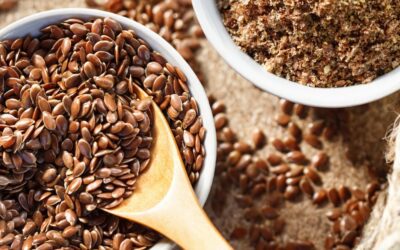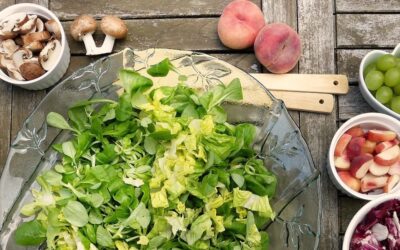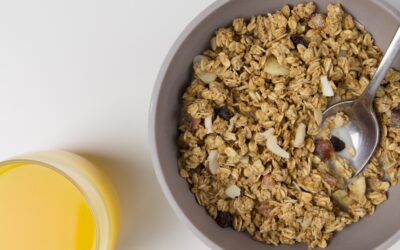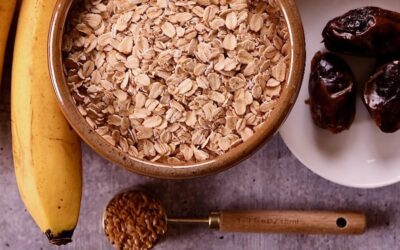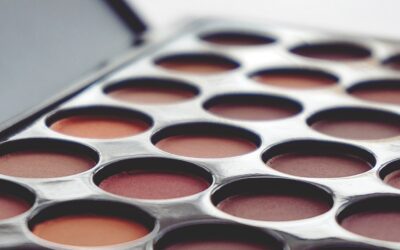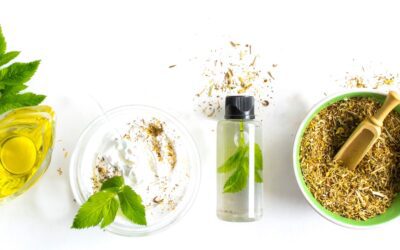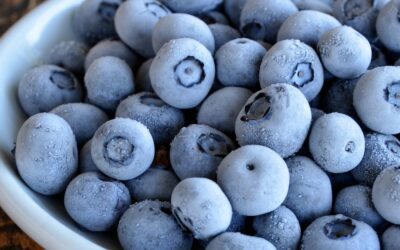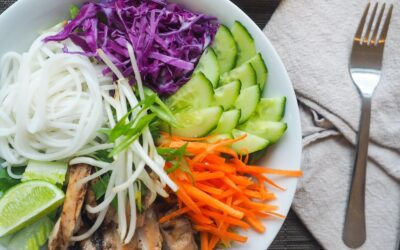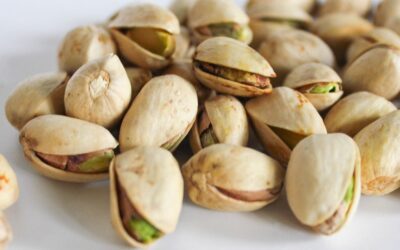
Our holistic guide to living your best life.
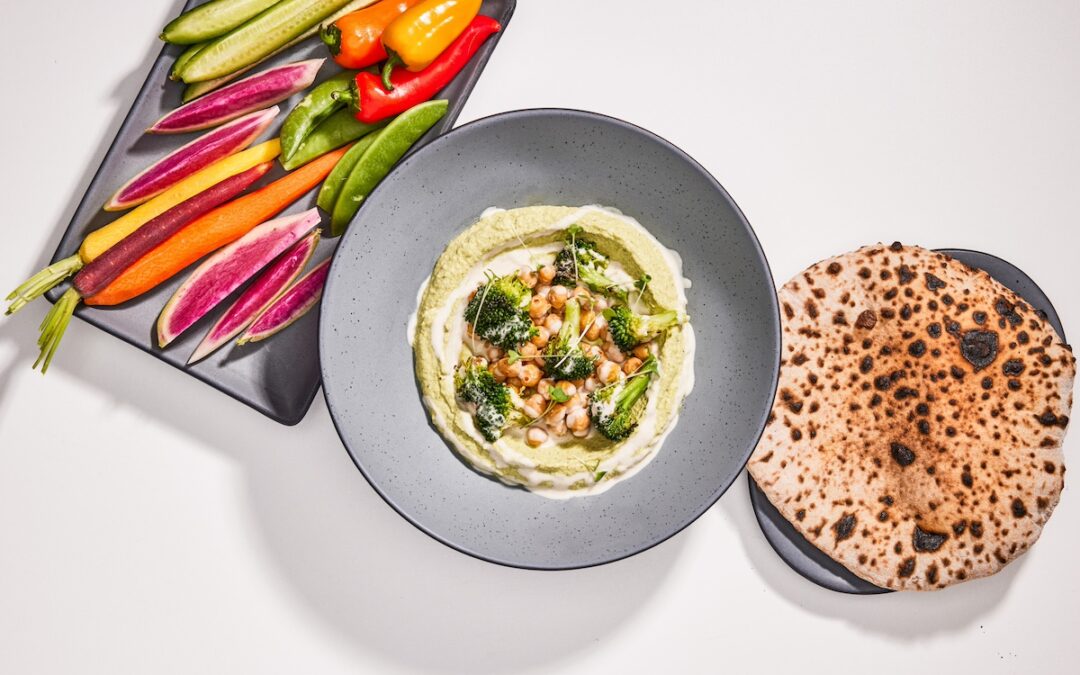
In a Healthy Snack Rut? 10 Inspiring Ideas
Healthy, well-timed snacks can help manage your hunger and energy levels and fit in more overall nutrients. But instead of reaching for a bag of processed chips or cookies, choose whole food options that will help you feel more satisfied and energized between meals....
Is the Anti-inflammatory Eating Pattern Right for Me?
Think about inflammation like fire. The heat from fire offers many benefits. It helps you stay warm, it cooks your food, and gives you light. But if you lose control over the flames the fire can cause damage.
Similarly, some inflammation within the body is helpful. Acute or short-term inflammation is necessary to fight infection and promote healing (like when you stub your toe or cut yourself shaving). But chronic or ongoing inflammation is like wildfire. The damage it causes in the body is linked to cancer, heart disease, inflammatory bowel disease, rheumatoid arthritis, and type 2 diabetes.
Fortunately, an anti-inflammatory diet and other lifestyle habits can counter chronic inflammation. This article includes the top inflammation-reducing foods and other healthy habits that help keep inflammation in check.
The Benefits of Anti-Inflammatory Foods
Many foods are associated with either promoting inflammation or fighting it. To lay an anti-inflammatory foundation reduce or eliminate processed foods and make whole, plant-based foods your staples. Here are specific plant-based foods that protect against inflammation and simple ways to incorporate them more often.
Leafy Greens and Cruciferous Vegetables
Broccoli, Brussels sprouts, cabbage, cauliflower, kale, romaine lettuce, spinach, lettuce, parsley, and watercress.
These antioxidant-rich foods contain nutrients that protect against tissue damage associated with inflammation.
3 ways to eat more:
- Blend greens into smoothies.
- Build bowls with a base of greens and veggies.
- Make stir-fries one of your go-to dinner meals.
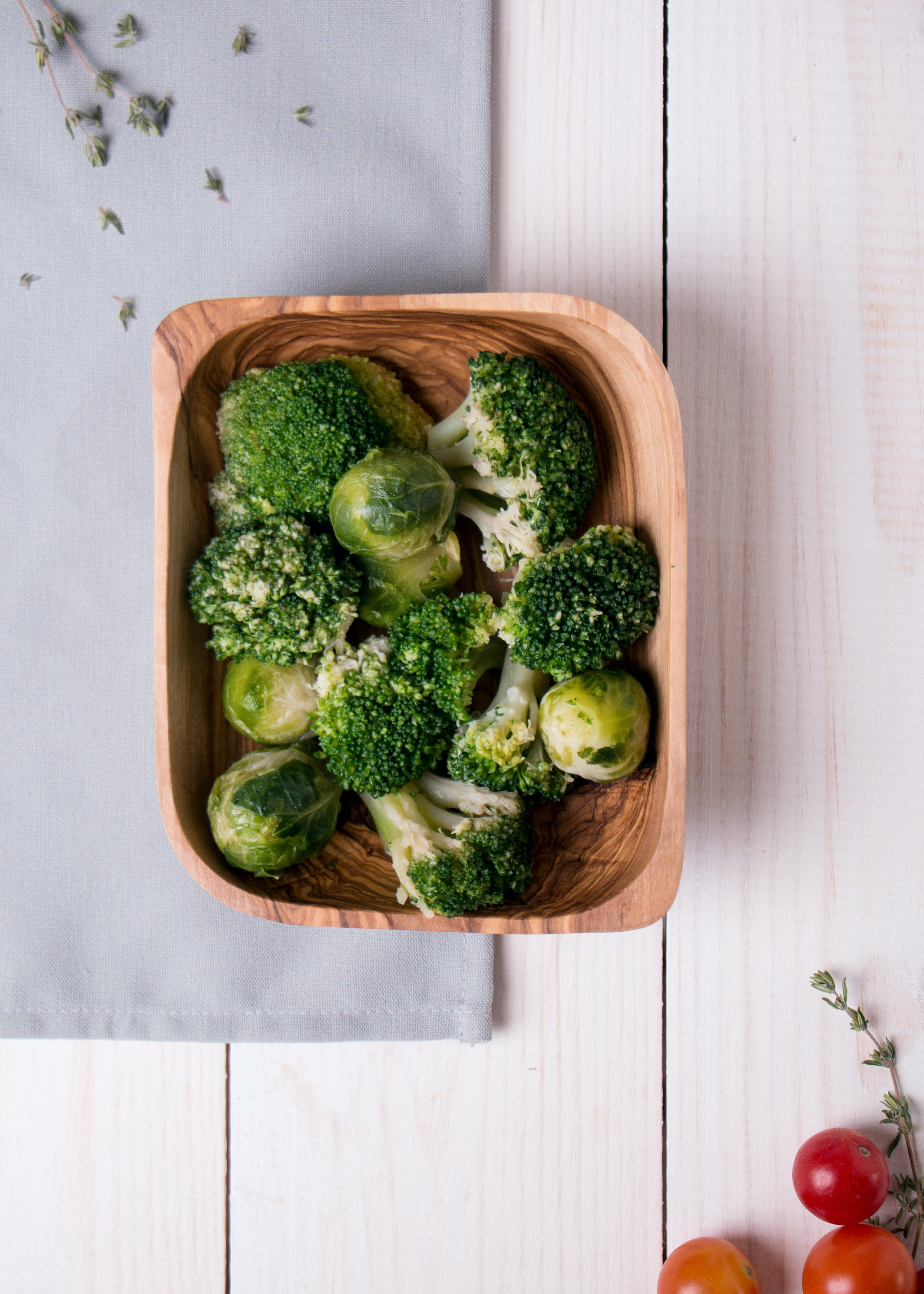
Apples, Pears, Berries and Cherries
These flavonoid-rich foods are known to reduce the production of proinflammatory compounds called cytokines.
3 ways to eat more:
- Add sliced pears to a salad.
- Snack on an apple with nut butter.
- Add berries and cherries to oatmeal or overnight oats.

Deep Yellow or Orange Vegetables and Fruits
Cantaloupe, carrots, figs, peaches, squash.
These foods are rich in carotenoids, which act as strong antioxidants.
3 ways to eat more:
- Dip carrots into hummus or guacamole.
- Stuff figs with nut butter.
- Grill squash skewers, alternated with other veggies, like tomatoes and bell peppers.
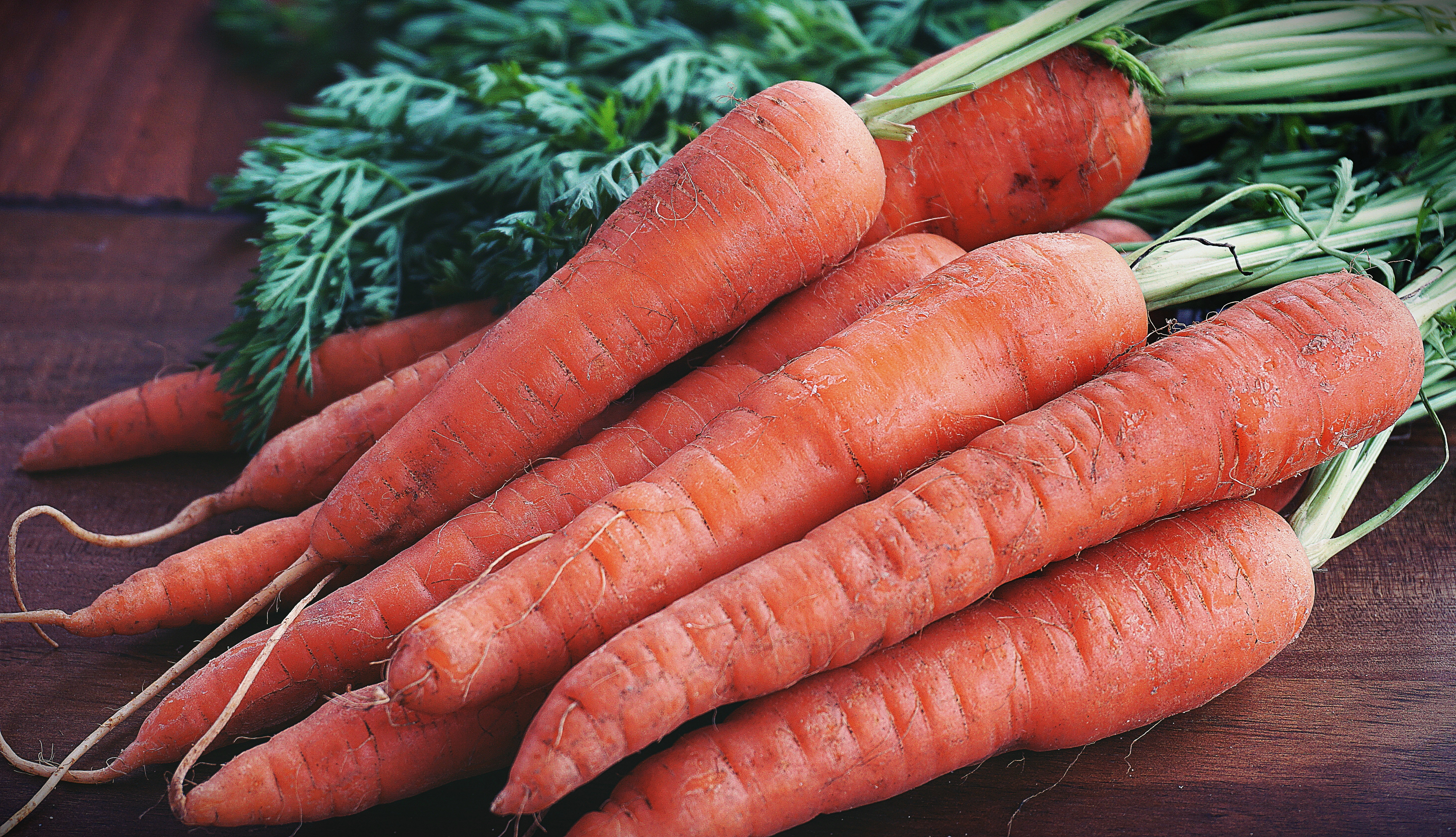
Additional Fruits and Vegetables
Grapefruit, grapes, honeydew, kiwi, lemon, oranges, pineapples, watermelon, eggplant, green peppers, okra, onions, zucchini.
These foods contain a variety of health-protective antioxidants.
3 ways to eat more:
- Add grapefruit and pineapple to veggie stir-fries.
- Pair grapes with nuts as a snack.
- Oven-roast eggplant, onions, and peppers as part of a Mediterranean platter.
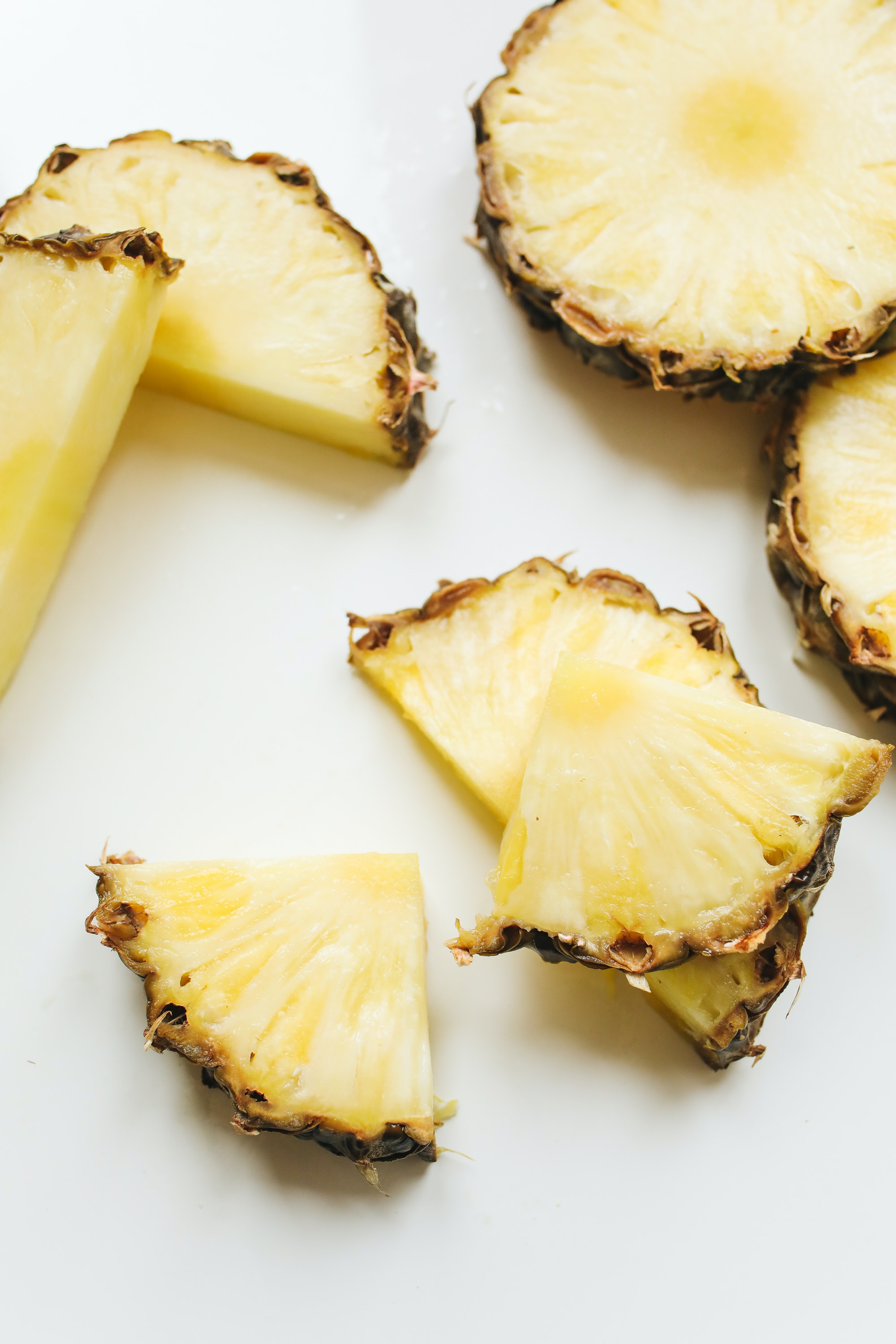
Pulses
Lima beans, lentils, peas, chickpeas, and other beans, excluding soybeans.
In addition to antioxidants, these foods provide fiber, which alters gut microbes and triggers the release of full-body inflammation reducers called short-chain fatty acids.
3 ways to eat more:
- Snack on oven-roasted chickpeas.
- Use fresh veggies to scoop up bean dip.
- Make hearty lentil soup a staple.
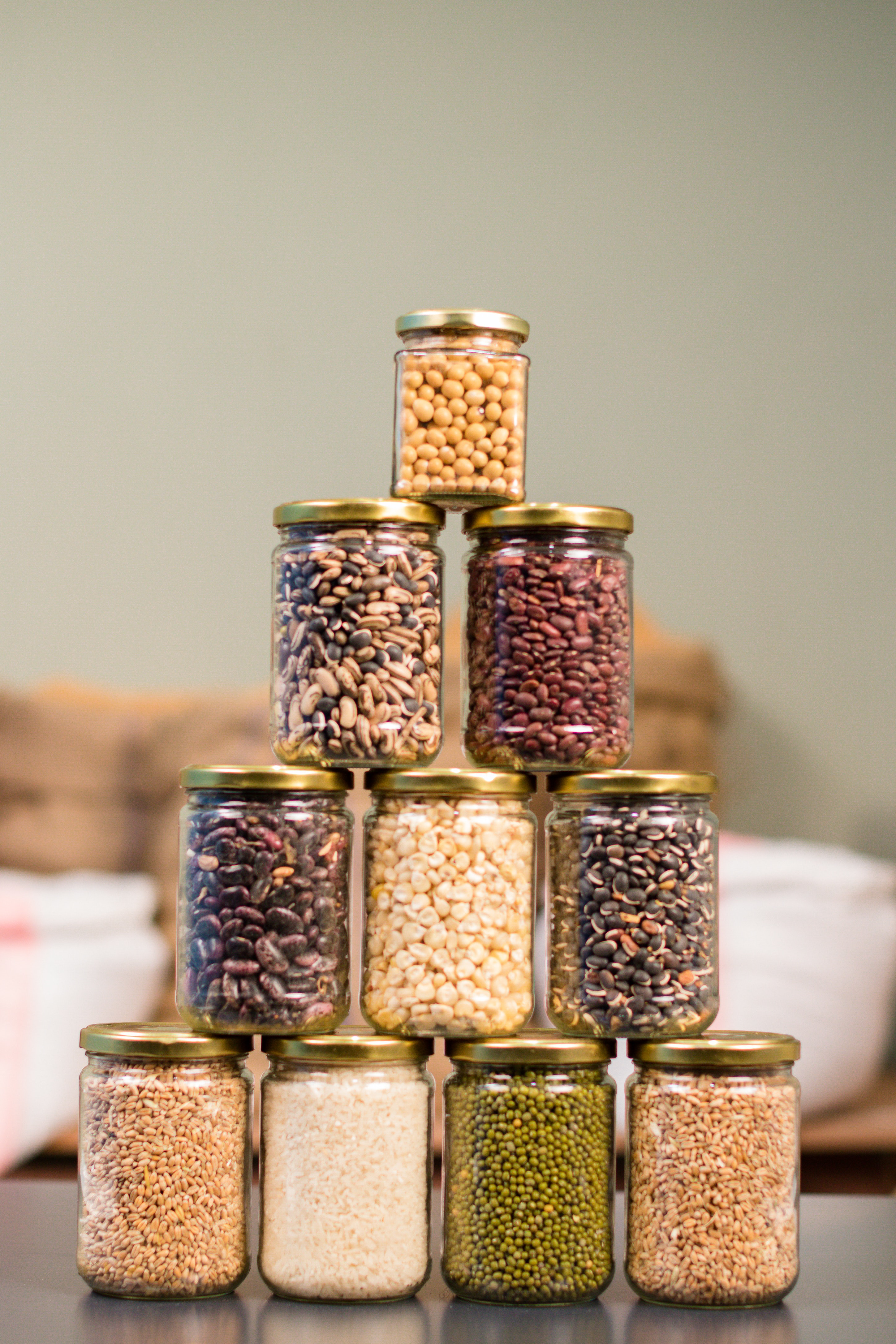
Nuts
Peanuts and tree nuts (almonds, Brazil nuts, cashews, hazelnuts, macadamia nuts, pecans, pine nuts, pistachios, walnuts).
These foods are rich in omega-3 fatty acids, which protect against inflammation. They also provide L-arginine, which helps reduce inflammation by improving blood flow.
3 ways to eat more:
- Blend nuts or nut butter into smoothies.
- Snack on fresh fruit paired with nuts.
- Use nuts to garnish salads and cooked vegetables.
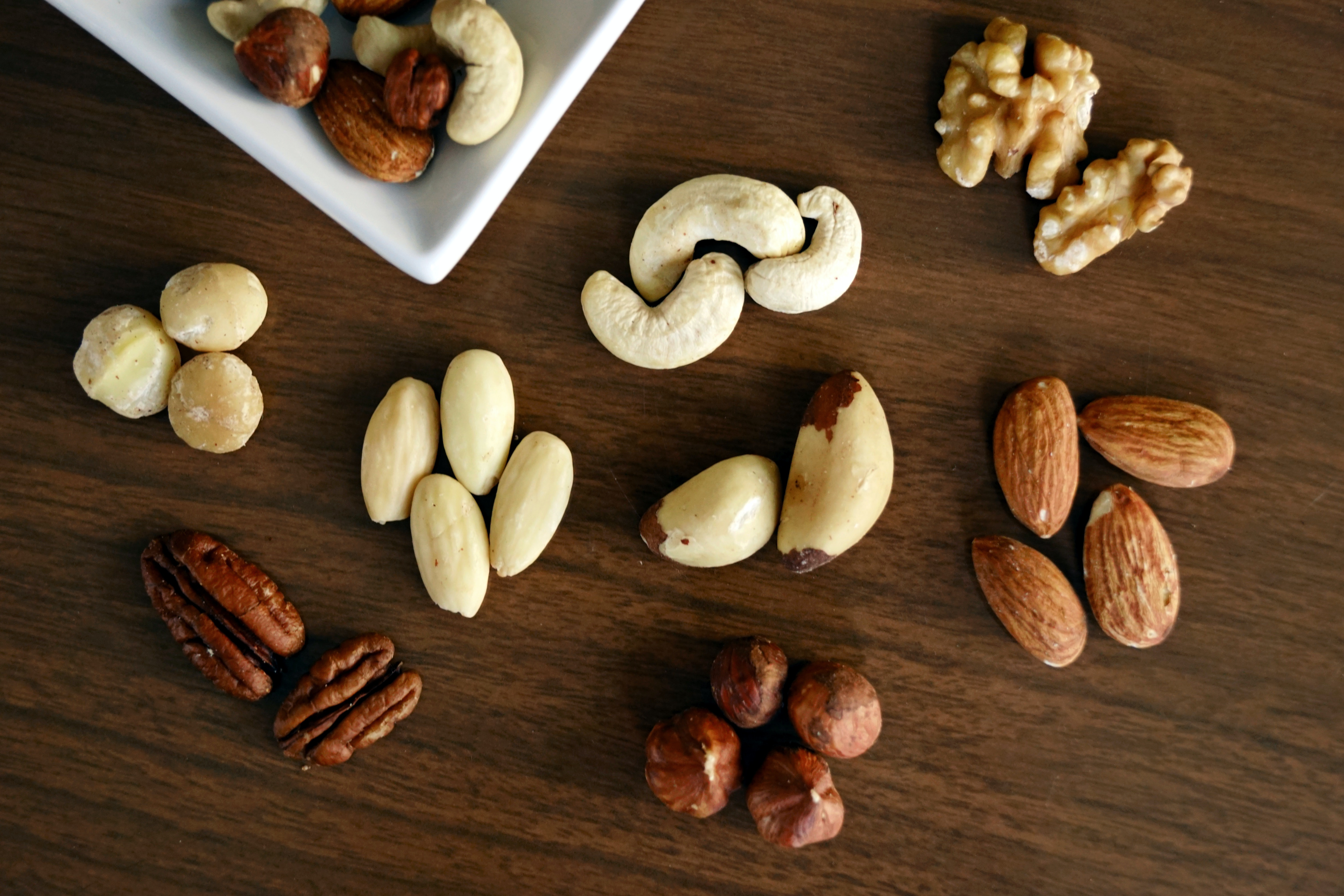
Coffee and Tea
Decaffeinated and regular coffee, herbal and non-herbal tea.
Coffee and tea are both high in antioxidants. In addition, the caffeine in regular coffee and tea (green, black, white, and oolong) has been shown to suppress the circulation of proinflammatory compounds.
3 ways to eat more:
- Blend coffee or tea into a smoothie.
- Use tea as the liquid in oatmeal or overnight oats.
- For a refreshing drink chill brewed tea and infuse with lemon and mint.

5 More Anti-inflammatory Eating Techniques
Keep these tips in mind as you choose your meals and snacks.
- Eat a rainbow of colors.
- Season meals with antioxidant-rich herbs and spices.
- Choose whole grains over refined grains.
- Aim for 40 grams of fiber per day.
- Prioritize whole, plant-based proteins over animal-based or processed proteins.
Think Beyond Food
Ready to take it one step further? In addition to the foods and strategies above, these five habits bolster an anti-inflammatory lifestyle.
- Consume one alcoholic drink or less per day.
- Engage in moderate to vigorous physical activity, at least 150 minutes (about 2 and a half hours) per week.
- Don’t smoke.
- Manage stress.
- Practice healthy sleep hygiene.
5 Delicious Ways to Improve Your Heart Health
Incorporating these nutrient-rich options into your diet can contribute to better heart health and help reduce the effects of high blood pressure, high cholesterol, and high blood sugars, which are all risk factors for cardiovascular disease.
1. Blueberries
Blueberries, rich in antioxidants, are a powerful ally in reducing oxidative stress, a key contributor to cardiovascular disease. Their anti-inflammatory properties not only aid in fighting plaque buildup in arteries but also contribute to maintaining healthy blood pressure levels, making them a delicious and heart-protective addition to your diet.
The Prescription: 1 cup of blueberries a day for 8 weeks has been shown to decrease systolic blood pressure and diastolic blood pressure by about 5% and 6%, respectively.
Recipe: Mango Melon Berry Chia Pudding
2. Beets
Incorporating beets, which are rich in nitrates, into your diet can contribute to lower blood pressure levels. Nitrates from these beets promote the production of nitric oxide, a vasodilator that helps relax blood vessels, enhancing blood flow and supporting cardiovascular health. Meta-analyses indicate that a 10 mm Hg decrease in systolic blood pressure correlates with a 20% lower risk of major cardiovascular events, 17% for coronary artery disease, 27% for stroke, 28% for heart failure, and 13% for all-cause mortality.
The Prescription: 1/3 cup of beetroot juice a day for 60 days has been shown to lower systolic and diastolic blood pressure by 10 mm Hg and 7 mm Hg, respectively.
Recipe: Grapefruit Arugula Beet Salad
3. Leafy Greens
Leafy green vegetables are also a great source of nitrates, which can help lower blood pressure. Lettuce, spinach, kale, and chard are some examples of leafy greens with high amounts of nitrates.
The Prescription: 1 cup of cooked spinach has been shown to decrease arterial stiffness by 7% and reduce systolic blood pressure by 4 mmHg within 7 days.
Recipe: Kale Potato Salad
4. Flaxseeds
Flaxseeds are a nutritional powerhouse known for their ability to reduce CVD risk. Rich in alpha-linolenic acid (ALA), a type of omega-3 fatty acid, flaxseeds contribute to lower blood pressure and reduced inflammation, supporting heart health. Additionally, their high fiber content aids in cholesterol management and blood sugar control. Fiber helps remove cholesterol from the body by binding to it in the digestive system, preventing its absorption and facilitating its excretion, ultimately contributing to lower cholesterol levels and improved heart health.
The Prescription: 1 tablespoon of ground flaxseed a day for 12 weeks has been shown to lower fasting blood glucose by 17% and lower LDL cholesterol by 20%. Other studies have shown 3 tablespoons a day to lower systolic and diastolic blood pressure by 10% and 8%, respectively.
Recipe: Watermelon Cocoa Bowl
5. Beans
Beans are an excellent source of dietary fiber, particularly soluble fiber, which plays a crucial role in lowering cholesterol levels and protecting against CVD. The soluble fiber in beans forms a gel-like substance in the digestive system, binding to cholesterol and aiding in its elimination from the body. Regular bean consumption is linked to improved lipid profiles. Daily bean consumption is a common dietary practice observed throughout longevity-promoting populations, as exemplified in the Blue Zones, communities with some of the longest-living people.
The Prescription: ½ – 1 cup of beans a day (black, navy, pinto, kidney, etc) has been shown to reduce total cholesterol levels by 3% – 5.5% and reduce LDL cholesterol by 3.8% – 8%, within one month.
Recipe: Tuscan White Bean Kale Soup
Spring Cleaning: How to Purge Products with Aluminum
Aluminum is found in products sold across the globe, from cookware to personal care goods. However, recent scientific studies have shed light on potential concerns regarding the use of aluminum and its impact on health. In this article we’ll explore where aluminum is found, its potential risks, and how to decrease your exposure.
Aluminum in Personal Care Products
Aluminum salts are often added to antiperspirants to block sweat from forming at the pores. This is concerning, since aluminum can cause DNA damage and impact the endocrine system, which controls hormones that affect mood, metabolism, and reproduction.
Aluminum can be absorbed through the skin, including the armpit, and its absorption is six times greater when skin has recently been shaved. Due to the location of armpits in relation to breasts, aluminum antiperspirants raise questions about potential implications for breast cancer. Research suggests that aluminum can affect how genes interact with the hormone estrogen, particularly within breast cancer tumors. In addition, studies have revealed significantly higher levels of aluminum in the breasts of breast cancer patients.
Aluminum in the Kitchen
Aluminum foil is commonly used for cooking or wrapping leftovers. Studies have shown a significant increase in aluminum concentrations in food when foil is used in cooking, especially when food is seasoned. However, some research shows that cooking at lower temperatures (below 160ºC or 320ºF) is safer, as it leads to less foil degradation.
Aluminum-Related Health Risks
While no immediate dangers of dietary aluminum have been identified, there is growing concern that prolonged exposure to aluminum may contribute to the development of neurodegenerative diseases, such as Alzheimer’s, Parkinson’s, Amyotrophic lateral sclerosis (ALS), and Multiple Sclerosis.
Aluminum has been labeled as a neurotoxin, and while the precise understanding of how it affects the body is limited, it may impact how genes are expressed in the brain. Aluminum is thought to change the activity of certain proteins and enzymes in the brain by binding to them and altering their shape or structure. This can cause an unwinding of DNA and disrupt the DNA replication process, which can trigger inflammation and cell death. Some studies have found aluminum-associated inflammation in parts of the brain, which may contribute to a neurodegenerative effect, but aluminum’s potential role isn’t fully understood.
How to Decrease Your Aluminum Exposure
Given the research regarding the risks of aluminum, there has been an uptick in aluminum alternatives. For example, there are now many aluminum-free antiperspirants on the market. If you’re unsure if a deodorant is aluminum-free, look for ingredients like aluminum chlorohydrate, aluminum ziroconium, or any other chemical name containing the word aluminum.
To decrease aluminum in your kitchen, consider switching to stainless steel or cast-iron cookware to avoid the leaching of toxic metals into your food. In place of aluminum foil when baking, look for reusable tray liners or parchment paper. And instead of wrapping leftovers in aluminum foil, use reusable food storage containers made from glass.
5 Surprising Ways to Increase Your Lifespan & Improve Quality of Life
One of the most important, but often overlooked, contributors to longevity is social connection and purpose. Social connection — defined as a sense of community, friendship, and belonging with others — is something that’s lacking in culture across all age groups. In fact, the U.S. Surgeon General has highlighted loneliness, isolation, and lack of connection as a public health crisis in our country. Being socially isolated has the same impact on mortality rates as smoking up to 15 cigarettes a day while being socially connected can increase odds of survival by 50%. And, being socially isolated may increase your risk of heart disease by 29% and stroke by 32%.
Having a sense of purpose is also important when it comes to long-term health and longevity. Studies suggest that people who have purpose take better care of their health — they’re more likely to get a cholesterol test, a mammogram, and on average spend 17% fewer nights in a hospital. For many, purpose and social connection also means a connection to religion or spirituality, which can also be positive. Research shows that weekly involvement in a weekly spiritual service can lead to a 28% risk reduction in mortality.
Self-transcendence, or experiencing something greater than yourself, is a benefit that can come with or without a connection to religion or spirituality. Studies show that transcendence can not only increase your lifespan but also your quality of life as you age. For many, this benefit comes alongside spirituality, but others experience transcendence through the impact of their careers, multiple generational family happiness, a fulfilling life as a caregiver, or volunteer work.
The Biological Protection of Purpose
While we know that psychological well-being and physical health are connected, science doesn’t yet understand how. One potential link may be inflammation. Chronic stress, which can be a result of loneliness and lack of purpose can cause your immune cells to activate genes that trigger inflammation. Research has identified inflammation to be a root cause of more than 50% of all deaths. This includes death by heart disease, stroke, cancer, diabetes, kidney disease, and liver disease. Meanwhile, strong purpose has been linked to lower levels of inflammation.
Achieving purpose, spirituality, and transcendence
Take a step closer to having more purpose in your life with these 5 tips:
- Participate in activities that shift the focus from self to others such as volunteering, caregiving, or donating your time to others.
- Find your flow state — or “theta” — where you work diligently on an end goal with undivided attention and focus. Practicing this regularly can help you move toward mastery and excellence of a practice or skill.
- Seek out new ideas about wisdom, philosophy, or right and wrong, and discern your moral code. Try and grow toward this ideal.
- Focus on experiencing a daily sense of awe or amazement. Regularly go outside in nature and connect and find inspiration from the world around you. Look for collective effervescence.
- Bring light and positivity to the center of your life by finding joy, laughter, and happiness in the simplicity of life.
List adapted from recommendations on self-transcendence found here.
Sources:
https://www.hhs.gov/sites/default/files/surgeon-general-social-connection-advisory.pdf
https://pubmed.ncbi.nlm.nih.gov/25368165/
https://pubmed.ncbi.nlm.nih.gov/31008647/
https://pubmed.ncbi.nlm.nih.gov/37372699/
Understanding Heart Disease: Am I at Risk?
Cardiovascular disease (CVD) is a class of disorders that affects the heart and blood vessels. It’s an umbrella term that includes conditions like coronary artery disease, heart failure, and stroke. Genetics, your environment, and your lifestyle choices can all contribute to your risk for developing CVD. Here are conditions that serve as warning signs and can develop into more serious disorders down the road:
Early Warning Signs & Risk Factors for Cardiovascular Disease
High Blood Pressure
High blood pressure, also called hypertension, is a condition that strains the walls of the arteries, potentially leading to serious health complications, including cardiovascular disease. It is typically defined by two measurements: systolic pressure (the pressure when the heart beats) and diastolic pressure (the pressure when the heart is at rest between beats). The normal blood pressure reading is at or slightly below 120/80 mm Hg. Hypertension is diagnosed when readings consistently exceed 130/80 mm Hg, but anything between 120/80 mm and 130/80 mm Hg is considered elevated blood pressure. Regular monitoring of blood pressure is crucial and can be done at home using blood pressure monitors.
High Cholesterol
High cholesterol is a condition that’s diagnosed when you have elevated levels of total cholesterol with particular attention paid to low-density lipoprotein (LDL) cholesterol, often called “bad” cholesterol, triglycerides and ApoB levels. High cholesterol contributes to the buildup of plaque in arteries, increasing the risk of atherosclerosis (hardening of the arteries) and cardiovascular disease. Your doctor will measure cholesterol levels through a blood test. Typically, your provider will look at both your levels of LDL cholesterol and your levels of high-density lipoprotein (HDL) cholesterol, aiming for lower LDL and higher HDL levels and total cholesterol levels falling below 200 mg/dL. They will also note your levels of triglycerides and ApoB to make sure they are within a safe range for your CVD risk. Lifestyle changes, including a heart-healthy diet, regular exercise, and medication prescribed by healthcare providers, are all important parts of managing high cholesterol and reducing the risk of heart-related complications.
Chronic Hyperglycemia
Hyperglycemia — elevated levels of glucose in your blood — often comes with a diagnosis of either type 1 and type 2 diabetes or prediabetes. Prediabetes is a condition where blood sugar levels are higher than normal but not yet in the diabetes range. Prediabetes often goes undiagnosed — the CDC estimates that up to 80% of individuals may be unaware of their constant high blood sugar levels. Hyperglycemia damages the lining of your blood vessels worsening high blood pressure and potentially damaging other tissues in the eyes and kidneys. It can also have a big impact on your triglyceride and other cholesterol levels. If you have chronic high blood sugar levels, your provider will likely regularly monitor your blood glucose levels, advise you on lifestyle changes like diet and exercise that can help manage the condition and reduce the risks to your heart health.
Adopting a heart-healthy diet, particularly one rich in plants (fruits, veggies, whole grains, nuts and legumes) can help treat the underlying causes of cardiovascular disease (CVD). These foods are inherently high in fiber, antioxidants, vitamins, and minerals, which collectively contribute to lowering cholesterol levels, reducing inflammation, and improving blood vessel function. Here are 5 foods that can boost heart health.
5 Ways to Avoid Toxins
We unfortunately live in a world with pollution around every corner. However, with a little “know-how” we can take control over what we bring into our homes and put into our bodies. Simple everyday changes can help drastically reduce your exposure to toxins, let’s discuss five simple changes you can make today to protect yourself and your family from toxic chemicals.
1. Replace Air Fresheners and Incense with Soy or Beeswax Candles
Many households use aerosol sprays to freshen up the air in their living spaces, bathrooms, or workplaces. Air fresheners expose our respiratory systems to unnecessary, potentially toxic chemicals. The chemicals used may have different names, such as ‘parfum’ or ‘fragrance,’ but the majority of these aerosols are what are known as volatile organic compounds, or VOCs. Exposure to VOCs over time may lead to diseases of the kidneys, liver, and nervous system. Additionally, harmful emissions can come from air fresheners. In fact, more toxic emissions can come from burning incense than a cigarette. Research has shown that constant exposure to incense smoke may lead to heart disease, stroke, and lung disease. Instead of burning incense or using air fresheners, soy or beeswax-based candles are a safer alternative that are not shown to produce toxic emissions, while still providing a soothing and fragrant ambiance to your living space.
2. Swap Plastic Food Containers for Glass
While plastics are no longer manufactured using BPAs, known endocrine-disrupting chemicals, newer chemicals have replaced them. However, their status as a safer alternative remains a subject of debate. The plastic used in newer food containers is still under scrutiny for its potential links to cancer and gastrointestinal problems. Toxic chemicals can leach into our food from plastic containers during the reheating process or during storage. Investing in a set of glass containers can pay great dividends to your health by reducing your exposure to potentially harmful chemicals.
3. Swap out Non-Stick Cookware
The material of the pots and pans we use for cooking can significantly impact our exposure to the toxic chemicals known as PFAS. PFAS, used in Teflon, are the substances responsible for giving cookware its non-stick properties. The risk of contaminating your food with PFAS increases when cookware is scratched or if temperatures get too high. To avoid any risk of PFAS in your food use cast iron, ceramic, or stainless-steel pots and pans.
4. Invest in a Water Filter
Drinking tap water can be another potential route for PFAS exposure. Luckily, point-of-use home water filters can remove the majority, if not all, of different kinds of PFAS from your home’s tap.
5. Ditch the “Dirty Dozen” and instead shop for the “Clean 15”
Glyphosate is the main ingredient of RoundUp® which is a popular pesticide used in conventional agriculture. Glyphosates have been extensively studied for their negative effects on pregnancy, human development, immune function, gut health, and cancer. Yet, it is possible to reduce exposure to this toxin through dietary changes. For instance, a scientific study demonstrated that levels of glyphosate in the body decreased by as much as 70% in just five days when participants switched to an organic diet.
Anti-pesticide advocacy groups like the Environmental Working Group (EWG) releases a list of the top 12 conventionally produced foods to avoid because of their likelihood of being contaminated with glyphosate and other chemicals. The EWG uses up to date data provided by the FDA. The DIRTY DOZEN™ foods to avoid for 2023, unless grown organically, were strawberries, spinach, greens (kale, collard, and mustard greens), peaches, pears, nectarines, apples, grapes, bell and hot peppers, blueberries, and green beans. Additionally, the EWG creates a list of foods that consistently show low levels of glyphosate and other pesticides, regardless of whether they are organic or not. The CLEAN FIFTEEN™ for 2023 consists of avocado, sweet corn, pineapple, onion, papaya, frozen sweet peas, asparagus, honeydew melon, kiwi, cabbage, mushroom, mango, sweet potato, watermelon, and carrots.
5 Easy, Achievable Changes for a Healthier Diet
If you’re interested in improving your diet, but you’re not quite ready to go completely plant-based, here are five simple ways to boost your plant intake and improve your overall health. Adopt all five or choose strategies that are realistic for you and your lifestyle. Remember that the goal is to make successful, sustainable changes, not sacrifices. We want you to look forward to meals and snacks and enjoy healthful eating.
1. Eat more veggies.
Eating more veggies may seem obvious but try to make this goal “SMART” (Specific, Measurable, Attainable, Relevant, and Time-Bound) rather than vague. Here are some specific examples of what a SMART veggie goal may look like:
- Eat one vegetable at every meal.
- Eat three different types of vegetables every day.
- Try one new vegetable every week.
- Eat a salad before dinner daily.
- Plan meals around vegetables, not meat, and make the veggie the star of the show.
- Fill half of every plate with vegetables at least two times per day.
If you don’t eat many vegetables now, start with smaller portions and work your way up. Also, feel free to surpass the amounts in the example goals.
Vegetables provide health protective micronutrients as well as fiber. Fiber helps regulate blood sugar, promotes bowel regularity and a healthy gut, and supports weight management. If you don’t currently consume many fiber sources (fruits, vegetables, legumes, or whole grains), add fiber to your diet gradually to allow your digestive system to adjust, and be sure to drink plenty of water.
2. Eat more plant-based protein.
Plant-based proteins include black beans, chickpeas, lentils, edamame, tofu, tempeh, nuts, seeds, and more. Work towards replacing at least one source of animal protein with a plant-based option each day.
Try swapping your morning eggs for a breakfast scramble made from tofu or chickpeas. Opt for a hummus, veggie, and avocado wrap for lunch instead of a meat and cheese sandwich or replace ground beef with beans or lentils on taco night. These simple swaps don’t require drastic changes to your diet, but they can significantly benefit your health.
Plant-based proteins provide fiber, antioxidants, and micronutrients, and replacing animal protein with plant protein is linked to improved longevity.
3. Trade refined grains for whole grains.
Whole grains contain vitamins, minerals, antioxidants, and fiber. Fiber supports bowel regularity and improvements in weight, cholesterol, and blood sugar levels. A higher fiber intake is also linked to a reduced chronic disease risk and improved life span.
Replacing refined grains with whole grains is one simple way to improve your overall diet. Whole grains include brown rice, barley, millet, whole grain pasta, quinoa, oatmeal, whole grain bread, farro, whole grain crackers, and whole grain tortillas. Here are some examples of what a SMART whole grain goal may look like:
- Consume one whole grain source daily, such as oats at breakfast.
- Consume one whole grain source at each meal, such as oats at breakfast, quinoa at lunch, and brown rice at dinner.
- Swap out two refined grain products you regularly consume for whole grain alternatives (examples: swap out white bread for 100% whole grain bread and replace white flour crackers with 100% whole grain crackers).
- Buy one new whole grain option each time you grocery shop.
4. Drink more water and less sugary beverages.
Simply drinking enough water each day can offer tremendous health benefits. But swapping out sugary drinks for water can seriously upgrade your health. Sugary drinks add surplus calories without providing any nutritional value, and a high intake of added sugar increases health risks. Water helps your body function properly and replacing sugary drinks with water can improve your overall energy levels and support circulation and digestive health.
The goal is to consume at least eight cups of water daily. Here are some examples of ways to reach this goal:
- Keep a water bottle nearby while you work (such as at your desk) to sip on throughout the day.
- Attach water to a frequent action. For example, take a sip every time you stand up, check your phone, or send an email.
- Drink a glass of water before or during every meal.
- Set timed, individual goals throughout the day, such as having three glasses of water before lunch. Note: you can purchase large water bottles with pre-marked goals and timelines.
- Add flavor to your water naturally with infusions of fresh fruit, herbs, or cucumber.
5. Optimize your snacks.
Snacking can be a smart way to tide you over between meals, so you don’t get overly hungry. Healthy snacks can also help you take in more nutrients and regulate blood sugar, insulin, and energy levels.
Instead of swearing off snacks, optimize them. Choose whole or very minimally processed foods over ultra-processed choices and try to include a protein source to feel fuller and more energized. For example, instead of peanut butter crackers enjoy a sliced apple dipped in all-natural peanut butter. Rather than chips, try whole grain crackers or raw veggies with hummus.
Optimizing your snacks can improve your overall nutrient intake, elevate your energy level, and prevent overindulging at your next meal.
Additional examples of whole food, optimized snacks with protein include:
- Fresh or dried fruit + nuts
- Energy balls made with nut butter + oats and dried fruit
- A fruit smoothie + flax/chia/hemp seeds
- Granola + plant-based yogurt (with at least five grams of protein)
- Roasted chickpeas
- Edamame
- Fruity chia seed pudding
- Overnight oats + nuts/seeds
Get more expert advice on how to feel better for good. Sign up for our newsletter here.
5 Ways to Combat Stress
Stress is unavoidable in our modern world. However, it’s damaging to your health, and ongoing, unchecked stress can raise health risks. Let’s discuss five practical ways to combat stress in your everyday life.
1. Be mindful.
Bring mindfulness into your life, even for just one minute per day. Start by simply breathing in and out with awareness. Or focus on more concentrated breathing, such as box breathing; breathe in for four counts, hold for four counts, breathe out for four counts, hold for four counts, and repeat.
2. Chill out, literally.
Studies show that regular exposure to water that is 50°F or colder (within reason above freezing) can increase your resilience to stressful events. Start with a 20-30 second cold shower or a cold plunge. Breathe rhythmically throughout cold exposure and work up to 11 minutes total over the course of a week.
3. Practice gratitude.
Being grateful is something everyone can benefit from. Three to four times per week write down, text, or say aloud three good things that happened that day and at least one thing you’re grateful for.
4. Get out of your head.
Research shows that journaling, making lists, or writing out what’s bothering you can help you objectively look at what you’re struggling with. This practice helps use your pre-frontal cortex (the “CEO” of your brain) confront your thoughts more clearly and let go of circumstances beyond your control.
5. Have fun!
Leisure activities and connecting with others can help relieve stress. Try a new hobby or rekindle an old one. Attend a club or social event with friends or make new friends. Make time to laugh and relax with friends and loved ones each week.
For additional ideas about how to connect socially more often, refer to this article.
How to Increase Movement without Exercise
Non-exercise activity thermogenesis or “NEAT” refers to movement incorporated into your life through daily activities, not including physical activity. For example, NEAT can refer to the movement involved with cooking, yard work, or vacuuming. It can include taking steps, standing, or even wiggling. NEAT can help you reach your movement goals or “fill your rings” on various fitness apps or watches.
Some people naturally have more NEAT movement built into their daily lives, like people with active jobs rather than desk jobs. However, there are many ways to incorporate more movement into your daily routine regardless of your work. Building more NEAT activities in your day is a simple and effective way to lead a healthier lifestyle.
Challenge yourself to incorporate at least five NEAT movements into each day. Use this chart to play NEAT Bingo. Cover five squares each day for a win!
| Pace within your home or walk stairs as you talk on the phone. | Vacuum, sweep, or mop your floors. | Take out your garbage cans (one at a time). | March in place while watching television. | Do squats or wiggle in place while you brush your teeth. |
| Stretch between meetings, calls, or during commercials if watching TV. | Dance in your living room. | Plank while you reheat something in the microwave. | Park in a spot far from the store entrance. | Use a standing desk. |
| Garden. | Take the stairs instead of the elevator (or at least halfway). | FREE SPACE Come up with your own NEAT concept! | Clean your windows. | Walk the dog / go for a walk. |
| Do a flight of stairs every hour on the hour. | Go into the store/restaurant instead of using delivery. | Dust your home. | Carry groceries or bags in from the car one bag at a time. | Do 10 pushups on the hour. |
| Stretch before getting into bed. | Mow the lawn. | March in place while folding laundry. | Clean out your car. | Set and reach a daily step goal. |
Get more expert advice on how to feel better for good. Sign up for our newsletter here.
5 Ways to Improve Your Sleep Tonight
Prioritizing sleep is crucial for overall health and wellness. A lack of sleep or poor sleep quality can weaken your immune system, increase acute and chronic disease risk, interfere with physical recovery, fuel inflammation, and impair mental health. Sleep cleanses your brain, regulates hormones, and provides your body with the rest it needs to function properly. While there are many ways to improve sleep, here are five key strategies you can implement today.
1. Get on a sleep schedule.
Go to sleep and wake up at the same times each day, even on weekends. This allows your brain to sync with a routine, which supports your body’s circadian rhythms and promotes better quality sleep. To create a consistent schedule set an alarm an hour before bed to remind yourself to wind down and prepare for sleep.
2. Create a nightly routine.
Establish a nightly routine to let your brain know when it’s time to shift into sleep mode. This may include a warm nighttime bath, meditation, prayer, or reading a book. Choose any non-stimulating activity that allows you to unwind and get ready to rest.
3. Create a sleep sanctuary.
Create a sleep-promoting setting in your bedroom with minimal distractions. Keep it cool, dark, and quiet. Set your thermostat to 66 degrees Fahrenheit. This reduces your body temperature, which promotes better sleep. Block out blinking or intrusive light and consider using a white noise machine or fan to mask outside noise.
In addition, use your bedroom for sleep only. Avoid doing work, scrolling on your phone, or spending extracurricular time in bed. Engaging in “awake activities” in your bed prevents your brain from associating it as a place for sleep.
4. Go offline on time.
Screens stimulate your mind and delay the release of sleep hormones, even when you are physically exhausted. Avoid blue light for one to two hours before bedtime. This will allow your hormones to properly signal your brain that it’s time for sleep.
5. Swap afternoon coffee or tea with a decaf drink.
Avoid caffeine 10-12 hours before bed. When caffeine is consumed in the afternoon your body cannot metabolize it fast enough to clear it from your system before bedtime. This can disrupt sleep and leave you feeling more tired the next day. Limit caffeine to the morning hours in smaller amounts to avoid disrupting your nighttime sleep cycle.
Get more expert advice on how to feel better for good. Sign up for our newsletter here.
5 Ways to Connect Socially Each Month
Here are five ways to create more social engagement in your life. Every month, schedule one activity that falls under each of these categories. You will consistently have five events to look forward to and a concrete way to remain social, which is an important pillar of longevity.
1. Volunteer
- Schedule one day per month to volunteer. Doing so increases social engagement and supports your community. Giving back can also raise your personal happiness level.
- Choose one place to commit to monthly or a different volunteer activity each month. Either is fine!
- Consider lending time to your local food bank, animal shelter, library, nursing home, or check in with a community center to find volunteer opportunities near you.
2. Attend a Workout Class
- If you typically exercise at a gym, outdoors, or at home, you likely engage in physical activity without communicating with anyone else. Any way you incorporate fitness into your weekly routine is great. However, attending a group workout class once a month makes exercise social. Group fitness classes can be interactive, fun, and a great way to try something new and meet new people.
- Many gyms offer deals, like a free first class or a discounted rate. Also, try an app, such as ClassPass, which allows you to buy credits that can be used at various locations. Check out hot yoga, cycling, tai chi, dance, water aerobics – whatever looks interesting to try.
3. Visit a Local Farmers Market or Community Fair
You may be missing out on community activities you’re not aware of. Check websites like Eventbrite to find cultural fairs, art walks, public concerts, markets, and more near you.
4. Go to a Restaurant
- If you follow a plant-based diet and find dining out difficult, keep in mind that non-eating social events occur at restaurants too.
- Restaurants and bars often host trivia or open mic nights, sporting event viewing parties, and bingo. Some may offer darts, bowling, arcade games, fowling (football bowling), curling, table tennis, billiards, shuffleboard, chess, backgammon, or pickleball.
- If you feel the need to eat something when you go to an event, consider snacking beforehand and order a plant-based side or a non-caloric beverage, like tea or sparkling water.
5. Join a League or Take a Class
- There are numerous group classes to take, like painting, knitting, crocheting, pottery making, woodworking, sailing, origami, healthy cooking, guitar, and more. Take a class to try something new or rekindle an old hobby. Often there are single class options, or you can take a series if you’re interested in learning more or mastering a skill.
- Join a walking, running, or cycling club or a league, like pickleball, tennis, golf, basketball, softball, volleyball, tennis, flag football, or dodgeball. Check your local community center or YMCA for options.
Create an ongoing checklist to keep yourself socially engaged. If five activities per month feels too overwhelming schedule them over two or three months to start. Simply committing to more social engagement may help you make new friends and enhance both your physical and mental well-being.
Fiber and Gut Health: The Ultimate Guide
What is fiber?
Dietary fiber is a nondigestible material found only in plants that offers important health benefits, like reducing inflammation, lowering cholesterol, and helping with bowel regularity. Fiber is found in whole, plant-based foods, including vegetables, fruits, whole grains, legumes, nuts, and seeds. When you eat packaged foods, you’ll find the grams of fiber per serving listed on the Nutrition Facts labels. Throughout the day your meals and snacks will provide various amounts of fiber that add up to your total daily fiber intake.
How much fiber do I need?
The recommended total daily daily fiber intake is 21-25 grams for women and 30-38 grams for men. However, many lifestyle medicine practitioners recommend as much as 40-50 grams of fiber a day for both men and women.
Why is more fiber better?
Fiber has beneficial effects at higher doses. In fact, every 10 grams of fiber consumed reduces death risk by 10 percent. Fiber is filling and delays the return of hunger. It supports weight control and helps reduce the risk of developing constipation and diverticular disease as well as heart disease and diabetes.
What are the two types of fiber?
There are two different types of fiber – soluble and insoluble – and both have positive effects on your health. Soluble fiber absorbs water to form a gel-like consistency. Soluble fiber slows the rate at which food moves through your digestive tract. This slows the absorption of sugar from your digestive tract into your bloodstream, which prevents blood sugar spikes. Soluble fiber also helps reduce blood pressure and cholesterol and supports a healthy gut microbiome, the community of microorganisms that live in the human gut. Insoluble fiber does not absorb water. It adds bulk to your stool, promotes regular bowel movements, and supports overall gut health.
Can I get too much fiber?
A high-fiber diet may need to be avoided if gut inflammation has caused the digestive tract to become narrowed, blocked, or particularly irritated. This can occur during an acute diverticulitis or IBD flare-up. In addition, too much fiber in supplement form (70+ grams per day) can interfere with the body’s ability to absorb essential nutrients, which can lead to deficiencies. Fiber supplements can also decrease the absorption of certain medications, such as aspirin.
For more information check out Fiber and its Role in Preventing Chronic Conditions.
Baking Makeovers: Healthier Swaps for Holiday Favorites
If you’re looking for ways to indulge in your favorite holiday treats and family recipes with less sugar and oil, here are four surprising ingredient swaps to lighten things up.
Sugar Replacements for Baking
Sweetener → Mashed Banana
Substitute ripe mashed banana for half the amount of sugar, honey, brown sugar, or agave a recipe calls for. For example, if the recipe lists 1 cup of sugar, omit the sugar and use approximately ½ cup of mashed banana instead.
Tip: Using bananas not only cuts down on calories and sugar content but also adds fiber and nutrients.
Sweetener → Dates
Dates are chewy but sweet fruits that are full of nutrients and packed with fiber. They’re often used to mimic a chocolate-like flavor in baking. Chop up or purée dates and use a 1:1 ratio. For example, if a recipe calls for ½ cup of sugar, use approximately ½ cup of chopped or puréed dates instead.
Tip: Dates often have pits, so be sure to remove pits before you add the fruit to your food processor. You can save a step by buying pitted dates where the pit has already been removed.
Oil Replacements for Baking
Oil → Unsweetened Applesauce
Use unsweetened applesauce instead of oil when making a recipe. Use a 1:1 ratio. For example, if a recipe calls for ½ cup of oil, use ½ cup of applesauce instead. If you don’t like how the item turns out, try substituting applesauce for half of the oil. For example, if a recipe calls for ½ cup of oil, use ¼ cup of oil and ¼ cup of applesauce.
Tip: Substituting applesauce lowers the amount of saturated fat and calories you add to baked goods. Additionally, the fruit provides bonus fiber and micronutrients.
Oil → Puréed Pumpkin/Squash
Canned pumpkin purée provides fiber, antioxidants, vitamin A, potassium, and more. Look for 100% pure pumpkin rather than a canned pumpkin pie mix with added sugars and spices. Another healthy option to look for is canned squash purée (e.g. butternut). Like applesauce, puréed pumpkin or squash can be substituted for oil in a 1:1 ratio. For every 1 cup of oil the recipe calls for, use 1 cup of puréed pumpkin or squash instead.
Tip: Pumpkin purée can also be used as a substitute for egg. Replace 1 egg with ¼ cup of pumpkin purée.
Want more recipes? Check out these sweet treats from our partners at Mastering Diabetes and Love.Life Telehealth.
- Apple Blueberry Oat Bake from Cyrus Khambatta of Mastering Diabetes
- Plant-Based Cookies from Robby Barbaro of Mastering Diabetes
- Pumpkin Pie from Anthony Masiello of Love.Life Telehealth
- Apple Pie from Anthony Masiello of Love.Life Telehealth
- And, you’ll find even more recipes here!
Anxious? Overwhelmed? 3 Ways to Bust Holiday Stress
It’s no secret that the hustle and bustle of the holiday season can bring on feelings of overwhelm and anxiety. These feelings can lead to poor sleep and emotional eating, both of which can impact your health long past December. Here are some expert-approved skills that can help prevent and treat stress during the holiday season.
1. Time Blocking
Time blocking is a time-management technique that helps you create more balance in your week by scheduling your days to include productive time, restorative time, and socialization.
- Make a list of the things you must do each week, such as meal preparation and holiday shopping, restorative tasks, such as meditation or painting, and the things you want to do, such as holiday parties or dinners. Give each task a time allotment. If the task has two parts such as buying food for meal preparation and then preparing the food, give each part a time allotment.
- Next, look at your free time for the week and identify a few blocks of time that will be productive time, a few blocks of time that will be restorative, and a few blocks that will be socializing time. Fill in the identified time blocks with your categorized to-do list.
- If you run out of time, you are forced to make choices to change out parts of the time blocks for others or shift something to the following week. Ideally each should contain at least one time block for productive, restorative, and socializing time. This is a helpful way to make sure you have time for productive, self-care, and fulfillment tasks while keeping balance in your week.
2. 4-7-8 Breathwork
Studies show that breathwork, particularly extended exhale techniques such as 4-7-8 breathwork, can help move the body out of fight-or-flight and lowers blood pressure and heart rate.
- This technique involves breathing in for a count of 4 seconds, holding your breath for 7 seconds at the top of the inhale, and exhaling for 8 seconds. The extended exhale helps you take in more oxygen in the inhale and promotes relaxation and stimulation of your parasympathetic nervous system.
3. Reframing with Gratitude
Gratitude is one component of positive psychology that decreases stress and can lower blood pressure. While gratitude is often baked into mealtime prayers of thanks, morning mantras, or journaling, reframing stressors with gratitude can be a helpful practice to break up holiday stress.
- Try framing your growing to-do list with “get to” instead of “have to.” Phrases such as “We have the privilege of having dinner with my spouse’s friends this week. I’m thankful for quality time with friends,” can be an effective way to fold in gratitude to something that may be a holiday stressor.
We hope that these tips have helped you celebrate the holiday season stress free. For more support with stress management, speak with a Love.Life provider today.
Breath Sounds for Organs – Chinese Medicine
The Six Healing Sounds for Organs, also known as Liu Zi Jue, are a traditional practice in Chinese medicine and qigong (a system of coordinated body postures and movements combined with meditation) that involve making specific vocal sounds associated with different organs in the body. These sounds are believed to have therapeutic effects on the corresponding organs and help promote overall health and well-being.
Each of the Six Healing Sounds is associated with one of the body’s major organs and is believed to release stagnant energy or emotions associated with that organ. The six sounds and their linked organs are as follows:
- Xu (pronounced “sshh”) – Associated with the Liver: This sound is believed to help release anger and frustration and promote the smooth flow of Qi (energy) in the liver.
- He (pronounced “huh”) – Associated with the Heart: This sound is associated with the heart and is believed to help calm the mind and release excessive excitement and overthinking.
- Hu (pronounced “hoo”) – Associated with the Spleen: This sound is said to benefit the spleen and digestive system and help clear the mind of worry and overthinking.
- Si (pronounced “suh”) – Associated with the Lungs: This sound is associated with the lungs and is believed to help release sadness and grief, as well as promote healthy lung function.
- Chui (pronounced “chway”) – Associated with the Kidneys: This sound is associated with the kidneys and is believed to help release fear and stress, while also promoting kidney health.
- Xi (pronounced “shee”) – Associated with the Triple Burner (Sanjiao): This sound is unique because it’s not directly associated with a specific organ. Instead, it’s associated with the concept of the Triple Burner, which relates to the upper, middle, and lower parts of the torso. The Xi sound is believed to help balance the three burners and harmonize the body’s energy.
Practitioners of the Six Healing Sounds typically perform a set of exercises in which they make these sounds while engaging in specific movements and visualizations. The practice is often used as a form of self-healing and can be incorporated into a broader qigong or meditation practice.
It’s important to note that while the Six Healing Sounds have a long history in traditional Chinese medicine and qigong, scientific evidence may be lacking to support bold claims related to their effectiveness.
The Research
The Six Healing Sounds may ease symptoms related to pulmonary conditions. A 2022 study demonstrated that the Six Healing Sounds helped patients with Covid-19 symptoms. Researchers found that participants in the treatment (sounds) group experienced significant improvements related to breathing difficulties and fatigue compared to those in the control (no sounds) group. However, the study showed that psychological conditions, cough, labored breathing, and chest tightness all improved to pre-Covid-19 levels within the same time frame, with or without Six Healing Sounds treatment.
The Six Healing Sounds have also been shown to improve symptoms of COPD (chronic obstructive pulmonary disease). Individuals in COPD remission who practiced the Six Healing Sounds, along with walking exercises, were shown to experience improved lung function capacity, mobility, specific airway conductance, and overall quality of life, according to a 2015 study.
Because the Six Healing Sounds are considered a form of meditation, it’s not surprising that their effects on the mind have been studied, including relaxation, depression, and pain. One study found that participants experienced increased brainwave activity associated with relaxation and creativity after performing the sounds. Additionally, brainwave activity has been shown to reduce pain consciousness and depression in practitioners of the Six Healing Sounds.
While the Six Healing Sounds hold a prominent place in traditional Chinese medicine and qigong, scientific evidence supporting their effectiveness remains limited. Randomized controlled trials exploring specific outcomes are scarce. There is also a lack of research to connect individual sounds with changes in corresponding organs. Nonetheless, existing research suggests possible benefits in various areas. And as a meditative practice, the sounds have demonstrated potential positive effects for mental wellbeing due to their impact on brainwave activity.
3 Ways to Feel Calmer
How do you achieve a feeling of calmness and emotional balance? In this article, we’ll explore three simple ways to relax.
It’s normal to experience a range of emotions and some are more uncomfortable than others. During times of increased stress, it’s helpful to know a few techniques that can help you establish equanimity, or a calm mental state.
This article will explain how the Vagus nerve is linked with stress management. You’ll also learn three simple ways to calm down when you notice signs of stress (such as quick breathing, a tight jaw, or sweaty palms). Please note, these exercises are not stand-alone treatments, so please reach out to a Love.Life Telehealth physician if you struggle with chronic stress.
How is my Vagus nerve linked to my emotions?
The Vagus nerve begins in your brain and travels all the way down into your digestive tract. You can think of it as a telephone wire that allows two-way communication between your brain and gut. This nerve affects your digestive system as well as your mood and heart rate. As the main component of your parasympathetic nervous system, or the “rest and digest” state, the Vagus nerve works automatically to help your body relax.
Fortunately, there are ways to support this system’s regulation. Just as a muscle becomes stronger with exercise, certain activities can increase the tone of your Vagus nerve, which will allow you to relax faster. Exercises that tone this nerve are not sole treatments, but research shows they can support your mood and gut health.
1. Deep Breathing
Deep breathing influences your body’s stress response. It can be carried out on its own, or during meditation or yoga. Practicing a technique known as diaphragmatic breathing 15 minutes a day for at least two weeks has been shown to help. The Vagus nerve connects to your diaphragm, a dome-like muscle that sits under your lungs to help you breathe. Inhaling deep into your abdomen, as if your belly is an expanding balloon, contracts your diaphragm. As you exhale and relax your diaphragm, air is released and the “belly balloon” deflates. Here’s how to perform diaphragmatic breathing:
- Find a comfortable position lying down, seated, or standing.
- Place one hand on your chest and one hand on your belly.
- Inhale through your nose for about six seconds and fill your abdomen with air.
- Exhale through your mouth for about six seconds. Engage your core to push the air out.
- Repeat for up to 15 minutes.
Tip: Try to keep the hand on your chest still, while the hand on your belly moves with your breath.
For more diaphragmatic breathing techniques, refer to this article.
2. Endurance Training
The Vagus nerve communicates with your lungs and runs through your heart. Physical activity has been shown to improve its tone. Research suggests that moderate interval or endurance training supports the parasympathetic nervous system (rest and digest) without activating the sympathetic nervous system (fight or flight).
To experience this give cycling a try. Monitor your heart rate to keep it under 120 beats per minute during intervals and aim for a speed of 50 rounds per minute with a resistance of two kilograms. Rest between intervals to avoid switching into your sympathetic nervous system.
3. Cold Stimulation
Have you ever splashed cold water on your face to reset your mood? This technique may help because the cold sensation on your neck can stimulate the Vagus nerve and activate your parasympathetic (rest and digest) nervous system. For even better results use cold stimulation on the side of your neck. Aim for intervals of 16 seconds with water temperature that’s between 60-66 degrees Fahrenheit.
Bottom line: these three techniques can help you feel calmer more quickly. That’s important because stress management is a key component of Lifestyle Medicine. Commit to trying out all three to discover which feels most effective for you when you need to de-stress.
3 Diaphragmatic Breathing Techniques
Have you ever noticed that when you’re stressed, your breathing can be shallow and high up in your chest? Shallow breathing doesn’t allow you to take in enough air. But a specific type of breathing called diaphragmatic breathing can counter this by shifting your breath lower into your abdomen.
Your diaphragm is a dome-like muscle that sits under your lungs and helps you breathe. This muscle can function involuntarily, so it works even when you don’t think about it. To visualize this process, think of your belly as a balloon. When you inhale through your nose you fill the balloon while your chest remains quiet. When you deeply fill your belly with air, your diaphragm contracts. And then when you exhale through your mouth (release air from the balloon), your diaphragm relaxes and air escapes.
Practicing diaphragmatic breathing has been linked to many health benefits. These include improved exercise capacity, stress management, and gastrointestinal (GI) health. This type of breathing allows you to inhale more oxygen-rich air and exhale air that contains waste gases, like carbon dioxide. Because your breathing muscles do not have to work as hard during diaphragmatic breathing, your cells receive more oxygen. During exercise this benefit can help sustain your workout.
Evidence shows that practicing this type of breathing for just 15 minutes each day for two weeks can increase parasympathetic nervous system activity, which is linked to stress reduction. Diaphragmatic breathing is also thought to decrease levels of the stress hormone cortisol. Additionally, this type of breathing stimulates the vagus nerve, which runs from your brain to your abdomen. This nerve sends information to your digestive system, which helps manage digestive distress. While diaphragmatic breathing is not a stand-alone treatment for any condition, it also supports improved blood pressure, core muscle stability, COPD symptoms, and chronic pain.
There are a few approaches to this breathing style, and this article will take you through three distinct techniques. Try each one to determine which feels best for you.
1. Slow Breathing
In this method your inhales and exhales will generally last for about six seconds each. During the exercise, try to keep the hand placed on your chest still and move the hand on your belly.
- Find a comfortable position lying down, seated, or standing.
- Place one hand on your chest and one hand on your belly.
- Inhale through your nose for about six seconds and fill your abdomen with air.
- Exhale through your mouth for about six seconds. Engage your core to push the air out.
- Repeat for up to 15 minutes.
2. Holding the Breath
With this technique try to pause between your inhales and exhales and sustain your exhales. This can help deepen your breathing capacity.
- Find a comfortable position lying down, seated, or standing.
- Place one hand on your chest and one hand on your belly.
- Inhale through your nose for about four seconds and fill your abdomen with air.
- Hold your breath for about two seconds.
- Exhale through your mouth for about six seconds. Engage your core to push the air out.
- Repeat for up to 15 minutes.
3. Pursed Lip Breathing
This technique is beneficial in general and can be particularly supportive of lung conditions, including COPD.
- Find a comfortable position lying down, seated, or standing.
- Place one hand on your chest and one hand on your belly.
- Inhale through your nose for about four seconds and fill your abdomen with air.
- Exhale through pursed lips (make a “shhh” noise) for about six seconds. Engage your core to push the air out.
- Repeat for up to 15 minutes.
Tip: Take note of how you feel before and after your breathing practice. We hope that in addition to utilizing an evidence-backed technique to optimize your health, you’re doing something that helps you feel great!
How Social Connections Make You Healthier for Longer
Unlike lifespan, which is how long an individual will live, healthspan is the amount of time someone is generally in good health. One’s healthspan can determine how long they can continue to enjoy life without being limited by health issues.
Social connections play a vital role in extending healthspan. Social connections include relationships, family bonds, community, and social support networks. Such connections profoundly influence both physical and mental health, contribute to disease prevention, and improve injury and illness recovery. Many people understand the importance of diet, exercise, and managing stress as cornerstones of health, but let’s explore what the science says about social connections.
How Community Impacts Health
Research has revealed a significant link between mortality (death) and social isolation, loneliness, and a small social network. Studies suggest that isolated individuals have a 1.5 times greater risk of cardiovascular events, such as high blood pressure and heart attack deaths. Additionally, individuals with stronger social relationships have a 50% increased chance of surviving a heart attack. In contrast, people with the highest levels of social isolation face a two to three times higher risk of heart attack death.
Being socially isolated can also make you more susceptible to infections. Experts have begun referring to loneliness’s effect on health as “immunometabollic syndrome,” a complex condition characterized by poor immune function and metabolic abnormalities. Loneliness, which increases death risk by 26%, has been linked to immunometabollic syndrome. Translation? Social isolation has been proven to be as risky to your health as smoking, obesity, lack of exercise, and high blood pressure.
Mental Health and Social Connections
There is a strong relationship between social factors and mental health conditions. Having high-quality relationships with others can help prevent mental health issues, like depression, cognitive decline, and self-harm. After childbirth, social isolation has been associated with negative outcomes, such as anxiety, stress, and regret among women. Low social participation is also linked to an increased risk of developing dementia and Alzheimer’s Disease, and loneliness is tied to higher rates of depression and suicide.
Examples of Social Connectedness
If you’re unsure what counts as being socially connected, here are some examples from the Centers for Disease Control and Prevention (CDC):
- Having close bonds with others.
- Feeling loved, cared for, valued, and appreciated by others.
- The number, variety, and types of relationships a person has.
- Having meaningful and regular social exchanges.
- A sense of support from friends, families, and others in the community.
- A sense of belonging.
- Having more than one person to turn to for support. This includes emotional support when feeling down, and physical support, like getting a ride to the doctor’s office or grocery store or help with childcare on short notice.
- Access to safe public areas to gather (such as parks and recreation centers).
Social connections provide opportunities for support, companionship, and a sense of belonging, which can reduce stress, improve overall well-being, enhance immune function, and promote healthy behaviors. By fostering meaningful relationships and maintaining a strong social network, you can tap into the powerful benefits of social connections to extend your healthspan and enjoy an improved quality of life.
5 Tips to Building Strong Relationships
At Love.Life, we want to help you have meaningful relationships and improve social connectedness. Here are five actionable tips to get started.
- Connect with like-minded people. Spend time with friends and family who have similar health goals to support your own success. The brain has mirror neurons that mimic the behaviors of others. For example, have you ever yawned after seeing someone else yawn or opened your own mouth when feeding a baby? Healthy attitudes and behaviors are contagious in the same way. Seek out friends who have similar values, healthy habits, and life goals.
- Get active with others. Meet a friend for a walk or a workout to strengthen your friendship. Moving with another person is even more beneficial as the release of endorphins is greater together. This gives an immediate mood lift and decreases fatigue and pain perceptions and enhances overall performance. Each week, do something physical that you love with someone you love spending time with and notice the impact on your mood. Remember taking a walk after a meal with friends not only improves digestion and blood sugar control but also provides an opportunity for a deeper connection.
- Take care of yourself. It’s the most powerful thing you can do for everyone. Commitments should never override self-care. Focus on just the next step. Don’t discount the value of small changes, like taking a 10-minute walk or putting your phone on do not disturb for an hour. Seek out an opportunity for a warm hug or meaningful conversation to lower your stress before bed. Build your habits from the present moment and gain momentum.
- Be present in the moment. Don’t multitask. You can focus on the quality of the time you spend with others by reducing distractions and giving others eye contact and full attention. Just five minutes of quality conversation can have more meaning than an hour of distracted communication. If your phone is the number one distraction put it away when out with friends. When alone, find time for some solitude – read, meditate, spend time in nature. Sitting with your own thoughts allows time for wonder and creativity.
- Be there for others when it counts. Your friends and family will always remember your support. Talk about things that are deeper and real like health goals, finances, career choices, and relationships – not just small talk. Being a friend during a difficult time strengthens the bonds of friendship. Small acts are also important. Bring a plant to a neighbor, offer a hug, deliver food to someone in need, offer to babysit or walk a pet. Acts of service can help you re-center your time around people who matter to you. Commit to 15 minutes a day of connecting with people you care about.
7 Ways to Foster Healthy Romantic Relationships
Having a romantic relationship has been associated with improved longevity and better health. However, unhealthy relationships can be detrimental to mental health. Here are seven tips for fostering healthy romantic partnerships that best support your physical and emotional well-being.
1. Be happy with yourself first
In a healthy relationship a partner should complement you, not complete you. During any relationship there may be times when you’re not your best self and your partner is there to support you. But your partner cannot be solely responsible for your happiness and vice versa. When each individual prioritizes their own mental health, the relationship will be healthier.
2. Communicate
Communication may be the most obvious component of a healthy relationship, but it’s often overlooked. Communicating with your partner includes talking, listening, body language, and tone of voice.
Verbalize what you need or want from your partner (don’t expect them to read your mind) and listen to your partner’s needs.
Keep your body language open and attentive and use active listening skills, like follow up questions and head nodding, to help your partner feel heard and cared about. Be cautious of your tone and continue to use courteous language throughout your relationship. Phrases like “please” “thank you,” and “I’m sorry” can go a long way toward fostering closeness and respect.
3. Have empathy
In addition to being a good listener, it’s important to be empathetic towards your partner. Your partner may simply need you to listen and not offer a solution to their problem. Frequent check-ins can help you tune into your partner’s emotional needs. Empathy can also help you give and receive constructive criticism in a more positive way.
4. Embrace imperfection
No relationship is perfect, and disagreements can actually help couples learn how to better communicate and work together. Research suggests that communication between healthy partners may involve one negative to every five positive comments. The idea is to have more positive than negative, not to avoid negative interactions altogether.
When arguing, aim to solve the problem and not the person. In other words, don’t make the argument personal and work to compromise with empathy and respect.
5. Respect one another
Mutual respect between partners is a must. Your partner should admire you and you should admire your partner. Although your partner may have different goals, passions, or a different role in your relationship, you should view each other as equals and maintain respect and admiration for the other’s purpose. This will allow you to appreciate your partner’s traits and talents and recognize what they bring to your partnership.
You shouldn’t feel the need to be anyone but yourself when you’re with your partner and your partner should respect and support you without trying to change you. Be each other’s cheerleaders, not bullies.
Respecting each other and yourself can mean setting boundaries and giving space when needed. While some people may take this personally, boundary setting within a relationship is healthy when approached with empathy and respect.
6. Be like-minded but not necessarily alike.
It’s easy to equate compatibility with sameness, but being the same or having the same interests doesn’t necessarily lead to a healthy relationship. Finding a partner who is exactly like you is rare, and while it may work for some relationships, it shouldn’t be the focus. If your partner is very into a hobby that you are not, this is not a bad thing. Finding a partner with the same values is the goal, not the same pastimes.
7. Celebrate and have fun
Sternberg’s triangle theory of love breaks down aspects of a relationship with the idea of “consummate love” at the center. The three corners of the relationship triangle are passion, intimacy, and commitment. With all three corners you achieve the goal of consummate love, or the ideal relationship. With commitment only you may find an “empty marriage” and with intimacy alone you may have more of a friendship bond. Scoring all three can lead to a happy and healthy relationship.
Studies show that to engaging in stimulating and thrilling activities (such as an exciting trip or new joint hobby) can keep passion from fading in a relationship. Try to find someone who is easy to have fun with so you can grow together and lead a passionate, engaging life.
If you feel you are in a relationship that is abusive and need support or guidance there are many resources who can help.
Contact the National Domestic Violence Hotline at 1(800)799-SAFE (7233) or text “START” to 88788 for assistance and support. You can also contact the National Dating Abuse Helpline at 1(866)331-9474 or text “LOVEIS” to 22522 for support. All hotlines are free, confidential, and available 24/7.
Moai: The Japanese Concept of Connection
Did you know that the massive stone statues of Easter Island, that symbolize those we cherish, share the same name for the Japanese concept of social connection? The shared name is moai, and in Japan the concept holds immense importance. Moai social support groups are pillars of strength within Japanese communities, and they play a role in residents’ health and longevity.
Moais are groups formed from shared experiences, values, and connections among their members. These groups provide a sense of stability and continuity in times of need and foster a strong sense of ongoing belonging and unity. The moai of Japan highlight the immeasurable value of social bonds and mutual support along life’s journey. Let’s dive deeper into moai and how you can adopt and benefit from this concept in your everyday life.
Okinawa, Japan: Moai’s Success in Action
Elders in Okinawa are known for their longevity and exceptionally fulfilling lives. Okinawans have garnered considerable attention, notably as one of the Blue Zones, due to the remarkable abundance of octogenarians, nonagenarians, and centenarians (people who live to be 80-89, 90-99, and 100+ respectively). Moai is a key factor in living a long, healthful life. Today, moais have evolved into tight-knit social networks where friends in small neighborhoods come together regularly to share life experiences, offer advice, and even provide financial help when necessary. The significant influence of moais on longevity underscores the vital role of social connections as a pillar of lifestyle medicine. Similar types of social groups have been seen in other societies known for longevity. For example, local cafes serve as gathering places for friends after work in the Blue Zone of Sardinia and Seven-Day Adventists in the Blue Zone of Loma Linda, California have regular potlucks to bring community members together.
Research Behind Moai’s Benefits
The impact of social connections on health has been the subject of extensive study. According to a behavioral economist from the University of London, increasing one’s social connectedness has a life satisfaction impact equivalent to receiving a $134,000 salary increase. Both the strength and quality of friendships, as determined by how often individuals interact with their friends and their satisfaction with these relationships, are positively correlated with overall life satisfaction. In a comprehensive meta-analysis of 148 studies involving over 300,000 participants, researchers found that people with robust social connections had a 50% greater chance of surviving all causes of death. This association held true regardless of age, gender, and initial health status.
Cultivating Stronger Relationships in Your Tribe
These five tips for building strong friendships, recommended by New York University psychologist Irene S. Levine, emphasize the importance of nurturing meaningful connections:
- Schedule Friendship: Treat your friendships with the same priority as other health-related routines by scheduling dedicated time with friends in your calendar.
- Quality Face Time: Enhance friendships by making time for phone calls, in-person get-togethers, coffee dates, and shared walks to maintain close connections.
- Celebrate Milestones: Remember and celebrate special occasions, like birthdays and anniversaries, through phone calls or cards, to reinforce close friendships.
- Create Traditions: Establish rituals or traditions with close friends, such as annual trips or monthly movie nights, to strengthen bonds that significantly impact well-being.
- Beware of Frenemies: Be cautious of “frenemies,” individuals who may appear fun, but tend to foster competition. Frenemies can have negative effects on your health, so it’s essential to prioritize connections that genuinely benefit your well-being. In fact, research suggests that interacting with people who evoke both positive and negative emotions can lead to higher blood pressure compared to interacting with those you simply dislike. This is likely why psychologists have found a connection between frenemy-like relationships and depression and heart problems.
Role of Faith in Communities
Faith-based communities are often important sources of social connection. They can allow you to unite with like-minded people with similar beliefs and help you feel supported. Within a faith-based community you can also find social activities and events, which may range from volunteering to organized clubs.
Studies have shown that there are many benefits to being a part of a faith-based community. Here are three key perks.
Social Connection
Being part of a faith-based community can provide a sense of social connection. This social connection and feeling of belonging can lead to new friendships and higher marriage rates. Research shows that faith-based communities tend to foster happy marriages and lower divorce rates.
Social Support
Faith-based communities offer a social support network. A sense of social support is especially important during times of need. Having a group to fall back on and help you cope through life’s challenges is associated with better well-being.
Life Satisfaction and Happiness
Faith-based communities are linked to high rates of life satisfaction. Having a sense of purpose or meaning and being optimistic can contribute to positive mental health and overall wellness.
While research has tied being part of a faith community to all these benefits, it’s difficult to determine if these outcomes are specific to faith-based communities or communities in general. Regardless, finding a community where you feel a sense of purpose, belonging, and support is undoubtedly a great way to improve your social connectedness and overall health.
In addition, spirituality on its own is directly linked to longevity. A sense of resilience, purpose, and pride comes with having a strong faith and is associated with improved life satisfaction and health. Some research suggests that spirituality alone results in these positive benefits, with or without the regular attendance of religious events or involvement in faith-based communities.
5 Expert-Approved Holiday Eating Hacks
The holidays are meant to be a time filled with family, fun, and food. But let’s face it, being surrounded by traditional holiday foods and loved ones who may not have similar health goals as you can be tricky. Here are some obstacles you may encounter this holiday season and evidence-based tips to help keep healthy habits in mind while still enjoying the festivities.
Appetizers and Potlucks
Holiday parties often involve heavy appetizers either served before the main course or set up along one table for easy grazing and socializing.
Tip: Try to Avoid Mindless Munching
- When chatting with friends, try to avoid standing or sitting near the appetizers, as this can lead to mindless snacking while your attention is focused on your environment and not your food.
- Instead of grazing from the table or passed hors d’oeuvres, ask for a smaller appetizer or dessert-sized plate to help with portion control. Portioning out your appetizers ahead of time will help you to avoid overeating before the main course.
- If you find this is an area you struggle with, you can also consider skipping the appetizers altogether.
Tip: Bring a Plant-based Dish to Share
Depending on your social circle, potlucks may not feature lots of nutrient dense or plant-based dishes. Here’s how to prepare:
- Instead of worrying about what will be available to you, bring a dish that features a plant-based protein such as beans, lentils, tempeh, or tofu to ensure you have enough protein on your plate to feel satisfied throughout the event. Do not be afraid to use sides that are plant-based as your main course instead of taking a “side-sized” portion.
Tip: Pile on the Color and Fiber
Filling your plate with fiber first is a good way to balance blood sugar and avoid filling up on calorie dense food to stay satisfied.
- Appetizers can be a great place to get in your fiber from veggie trays, fruit salads, and tapas-based salad options.
- Consider focusing more of your intake on fiber appetizers and enjoy a lighter meal, if you know plant-based options are less likely to appear on the dinner table.
Desserts
Tip: Pair Desserts with Dinner
Avoid eating desserts or sweet treats on an empty stomach. Refined sugars and grains are often available for snacking during the holidays, but are much better for your blood sugar when consumed after a meal or protein and fiber rich snack.
- Try to enjoy dessert close to your meal to provide a sweet after-snack. Aim to choose desserts that provide fiber-rich fruit, so you feel satisfied after your meal.
Alcohol
Tip: Manage and Minimize Consumption
Truth: Lots of events center around alcohol during the holiday season. Excessive amounts of alcohol are linked to many health problems, such as liver disease, heart disease, various cancers, and neurological disorders.
- To avoid a helpful host constantly offering to fill an empty glass, many people find having something in your hand can prevent hosts from asking if you want another drink.
- Consider having soda water with lemon or lime, so you are able to hydrate while enjoying a simple, low sugar mocktail.
- Alternating between a cocktail and soda water can balance your alcohol intake.
- Not everyone’s health goals align and that is okay! Surround yourself with people who support your goals, regardless of their own.
Why is Good Sleep Critical for Better Health?
It seems “I can sleep when I’m dead” is the mantra of many Americans in the 21st century. The U.S. is one of the most sleep-deprived nations in the world. A full 20% of Americans sleep less than six hours a night. That’s simply not enough. Global sleep expert Mathew Walker once noted that a more appropriate phrase may be, “If I don’t sleep, I will be dead!” Here are some of the benefits you sacrifice by not getting enough sleep.
Sleep boosts your immune system
Sleep deprivation suppresses your immune system and increases your chances of getting sick. Your lungs are particularly affected, which can lead to an increased risk of respiratory infections. Inadequate sleep also ups the risk of catching colds and flus and lengthens the amount of time it takes to recover.
Sufficient sleep helps prevent chronic disease
Chronic sleep deprivation can lead to insulin resistance, which means insulin becomes less effective at clearing sugar out of your blood. As a result, blood sugar levels remain high, even when more insulin is released.
A lack of sleep can also cause stress and hunger hormones to spike and can lead to heartbeat fluctuations. All of this can contribute to the development of metabolic syndrome, obesity, heart disease, high blood pressure, type 2 diabetes, and increase the risk of a heart attack or stroke.
Sleep cleanses your brain
One of the biggest benefits of sleep is the role it plays in cleansing your brain and preventing cognitive decline. Structural connections called glymphatic cells are interspersed between neurons in your brain. These cells act like a spider’s web that holds everything in place.
When you sleep, your glymphatic cells shrink and cerebral spinal fluid washes over them and in between each neuron. This act cleanses the brain of toxins as well as waste products and the buildup of extra chemicals and proteins, including types linked to Alzheimer’s. This is one of the suggested reasons why shortened sleep duration and disruptions in sleep quality may impact Alzheimer’s and dementia risk.
Sleep supports physical recovery
Poor sleep also inhibits physical recovery. Growth hormones are typically released during deep sleep. When that’s interrupted, DNA recovery and tissue repair is impaired. This affects all types of recovery, from a sunburn or paper cut to the healing of muscles and bones. Sleep deprivation has also been associated with low testosterone and impaired fertility. In addition, inadequate sleep decreases the motivation to exercise.
Sleep supports good mental health
Finally, poor sleep quality is tied to a high mental health burden, including substance abuse, increased depression, anxiety, and even attempted suicide. The body profoundly needs sleep, and when you don’t get enough of it, all systems in your body are affected.
In addition, poor sleep can:
- Increase inflammation
- Trigger overeating
- Reduce bone density
- Accelerate skin aging
8 Ways to Feel Happier Every Single Day
1. Move Your Body
Physical activity of any kind has a positive impact on well-being and happiness across all stages of life. An overall active lifestyle is a very influential way to improve happiness. Why? Physical activity improves physical health, including heart health. It also helps reduce anxiety and depression and improves confidence, positive self-perception, and mental health. Studies have shown that high or even moderately active individuals report higher levels of life satisfaction and happiness compared to those who are less active. Find new ways to be active in everyday life, from training for a marathon to simply taking the stairs at work.
2. Get Outside
Spending time outdoors has been shown to improve mental health. Studies show that engaging with nature and being in natural environments positively improves emotional well-being and mental health. Exposure to natural light, fresh air, and the calming sights and sounds of nature can help reduce stress, anxiety, and depression. Explore nature walks in your town or complete tasks outdoors that would typically be done inside, like responding to emails, making phone calls, or folding laundry.
3. Get Regular Sleep
Quality sleep is crucial to your health and overall well-being. Chronic sleep deprivation directly affects your ability to handle daily tasks, which can lead to fatigue, reduced cognitive function, and a general decline in well-being over time. Studies show that people with shorter sleep lengths and insomnia tend to have lower levels of happiness. Conversely, those with longer, better sleep report less anger and higher happiness levels. Aim for a regular bedtime and waketime routine to optimize your sleep and get in 7-9 quality hours per night.
4. Reduce Screen Time
Evidence suggests that excessive screen time is linked to reduced physical activity and metabolic rate, which can negatively impact happiness. It’s especially important to avoid screens prior to bed, as exposure can interfere with sleep quality, which in turn can impact mood. High screen time has been associated with irritability, poor mood, and cognitive issues. Multiple studies have also linked worsened depression and anxiety symptoms with more screen time. Therefore, limiting screen time is important for promoting mental well-being. You likely get enough screen time during the day from work, school, or other tasks, so choose leisure activities that don’t require screens prior to bed, such as reading, journaling, or listening to a podcast or audiobook. You can also replace screen time with a new hobby, such as knitting or playing an instrument.
5. Use Social Media with Caution
Don’t allow social media to fuel negative emotions, like anger and anxiety. Research has consistently shown that social media has negative effects on your mental health. If you feel social media has had control over the way you think or feel, consider a “cleanse.” Actively delete apps that don’t add meaning to your life and put that time saved towards doing something that does contribute to your happiness.
6. Use SMART Goals, not VAPID Goals
Have SMART (specific, measurable, achievable, responsible for, and time-bound) goals, not VAPID (vague, amorphous, pie in the sky, irrelevant, delayed) goals. Clear targets and a well-defined path are important. For example, a VAPID goal would be “I’m going to clean the entire house.” This goal will likely lead to dissatisfaction because there will always be something in an entire house that needs cleaning. But a SMART goal, like “I will do two loads of laundry by the end of the day,” has clearly defined parameters of what a completed task looks like. Additionally, establish a specific time to accomplish your goals, which allows for better planning and follow-through.
7. Pursue Happiness Indirectly
The path to happiness lies in pursuing it indirectly rather than directly. If you aim for a general goal of happiness, you may struggle to achieve what you are looking for. Instead, try to focus on micro-goals with daily successes as well as self-discovery, personal growth, and meaningful connections with others. When you immerse yourself in activities that bring you joy and fulfillment, you create a sense of purpose and as a side effect, improve overall happiness. Examples include pursuing your passions, engaging in acts of kindness, or contributing to a greater cause.
8. Maintain Healthy Practices
Getting out of a depression rut is difficult. You may want to sleep, stay inside, and stare at screens. While none of those things are inherently wrong, and the rest should be prioritized, it’s important to do things that actively cultivate happiness. Rather than succumbing to instinctual behaviors that contribute to sadness and social isolation, try to actively engage in activities that promote well-being. This may involve seeking social connections, engaging in physical activity, spending time in nature, practicing gratitude, or pursuing meaningful hobbies. By consciously choosing behaviors that support happiness, you can actively shape your emotional well-being and lead a more fulfilling life.
How to Get More Deep, Healing Sleep
Sleep is much more than a time when we rest our bodies and minds. According to the Sleep Foundation, there are 4 stages of sleep – light sleep (stages 1 and 2), deep sleep (stage 3, sometimes called stage 4 or non-REM sleep), and REM sleep (stage 4, sometimes called stage 5). Deep sleep plays a critical role in your memory, recovery, and immunity. This article will discuss more about deep sleep and its impact on your health.

What is deep sleep?
Deep sleep is the phase of sleep during which you sink into restoration mode. Slow, coordinated brain waves that occur during deep sleep allow events and memories from the day to become stored in your short-term memory. Physical skills (like how to perform a new exercise) and brain skills (like how to solve a puzzle) are also remembered during this sleep phase.
During deep sleep your heart and breathing rates drop, your muscles become paralyzed, your blood pressure falls, and your body temperature decreases by up to two degrees. All of these changes trigger your body to prioritize physical recovery and restoration. If you’ve had a physically demanding day, such as a tough workout, your body may favor deep sleep to allow your muscles, joints, and tissues to properly recover.
When do I get deep sleep?
Your body’s natural circadian rhythm, or biological clock that signals day and night, prioritizes deep sleep within the first 4 hours of a typical 8-hour sleep cycle. For this reason, night owls that stay up well past midnight may sacrifice deep sleep.
How can I get more deep sleep?
If you struggle with deep sleep, try these strategies to increase your deep sleep duration.
- Evaluate your use of caffeine and alcohol, both of which can inhibit deep sleep. Caffeine can make it difficult to fall asleep, which wastes time that could be spent in a deep sleep state. Alcohol may initially coax you to sleep, but ultimately it disrupts sleep quality and interferes with deep sleep.
- Monitor your hydration status. Being dehydrated keeps your body temperature, heart rate, and blood pressure high and makes it difficult to fall into a state of deep sleep.
- Assess your activity level. Try to fit in 30 minutes a day of moderate-intensity activity to support deep sleep. In addition, at least 10 minutes a day of high-intensity or strength-based exercises will enhance deep sleep.
Exercise each day
Daily physical activity is associated with a longer deep sleep phase and promotes regularities in circadian rhythms and melatonin levels. Exercise seems to be most effective at improving deep sleep when completed earlier in the day while working out close to bedtime delays the release of melatonin. However, exercising shortly before sleep is better than not exercising at all. Exercise alone, without any other interventions, has also been shown to improve sleep apnea.

Go to bed earlier
Staying up late and scrolling through social media or reading has been correlated with a decrease in sleep quality and duration. Studies show that compared to an earlier bedtime, staying up late delays your body’s natural clock.
Assess your alcohol use
Many people use nightcaps to relax and decompress before sleep, but alcohol interferes with deep sleep. Consuming alcohol even 12 hours before bed can significantly affect sleep quality, and drinking closer to bedtime is even more impactful. Alcohol triggers a rise in body temperature, and increased heart rate, and disrupts REM sleep, a phase that’s crucial for recovery.
Assess your caffeine intake
Caffeine suppresses sleep pressure, or the urge to sleep. But when caffeine wears off, you’re hit with a wave of fatigue, especially if you are under-rested. Caffeine is a crutch many people use chronically to mask fatigue, and it can be a vicious cycle.
On average, caffeine lasts in your system for 10-12 hours, which means you should time your consumption to finish 12 hours before you want to be in bed. However, some people process caffeine at a different rate based on their genetic variants. To understand more about your body’s response to caffeine, reach out to Love.Life to find out more about nutrigenomics testing. The results of this genetic test may offer further information about how to maximize your sleep length and quality.

Assess your CBD use
Although some research suggests that occasional CBD use may be helpful in increasing deep sleep length, it has also been associated with trouble falling asleep and wakefulness. Research is conflicting and inconclusive regarding specific recommendations and risks.
Avoid high saturated fat and low fiber foods
People who consume foods low in fiber and high in saturated fat get less deep sleep, even when they have a full night of sleep. Overall, many animal products are high in saturated fat while plants are high in fiber, so eating more plants is a smart way to optimize your sleep.
How to Avoid Toxins in Cosmetics
From makeup to skin care, the cosmetic industry offers a vast array of products designed to enhance your appearance and well-being. However, within seemingly harmless bottles and jars lie potential toxins that concern experts and researchers.
Understanding the presence and impact of toxins in cosmetics is crucial for making informed choices about the products you use on your body. This article will highlight a few controversial ingredients commonly used in cosmetics and their potential health risks.
Formaldehydes
Formaldehydes are used in beauty products as a preservative and to prevent bacterial growth. Cosmetics are a common source of formaldehydes that make contact with skin, which can lead to adverse reactions.
Formaldehydes may be found in nail polish, nail hardener, eyelash glue, hair gel, soap, makeup, shampoo, lotion, and deodorant. Additionally, formaldehydes can be “hidden” in cosmetics when listed as different chemicals known as formaldehyde releasers, which slowly decompose and release formaldehyde.
Formaldehyde Risks
Formaldehydes pose several potential risks, including a high absorption rate through the skin, DNA mutations within cells, and the formation of cancer-causing compounds when combined with other chemicals.
- The toxic effects of formaldehyde can impact the lungs, upper respiratory tract, bone marrow, and brain.
- In 2004, the International Agency for Research on Cancer reclassified formaldehyde from “probably carcinogenic to humans” to “carcinogenic to humans.”
- A 2021 meta-analysis, which reviewed 21 studies published over the last 20 years, found a link between formaldehyde exposure and cancer.
If you use cosmetics that contain or are suspected to contain formaldehyde, it’s important to use them before they expire. Prolonged storage and elevated temperatures can contribute to higher levels of formaldehyde, and therefore increase chemical exposure to users.
Parabens
Parabens are a group of synthetic chemicals used in cosmetics and foods for their ability to preserve products. The most commonly used parabens on the market are methylparaben (MeP), ethylparaben (EtP), propylparaben (PrP), butylparaben (BuP), and pentylparaben (PeP).
Paraben Risks
- Parabens have been shown to be endocrine disrupting chemicals (EDC) in animal studies. While different forms of parabens can have different effects, as a group they can cause weight gain, adrenal dysfunction, and affect hormone levels.
- As an EDC, parabens can interfere with estrogen, and have been associated with breast cancer, lower sperm counts, and pregnancy complications.
- Parabens in personal care products can be absorbed through the skin and the use of paraben containing products aligns with paraben levels found in or excreted by the body.
- Parabens can trigger inflammation, suppress immune function, and generate compounds that cause DNA damage.
Chemicals Found in Hair Dye and Hair Straighteners
In the United States and Europe, it’s estimated that 33 – 50% of women use hair dye. The rate of hair dye use may be cause for a public health concern because the chemicals used in these products, p-Phenylenediamine, 2,4-diaminoanisole sulfate, are known carcinogens in animal studies. Additionally, EDC and mutagens are among the roughly 5,000 chemicals that might make up a single hair dye product.
From 2003 to 2009, 50,884 American women participated in a study known as the Sister Study. Women were eligible to participate if they have never been diagnosed with breast cancer but had at least one sister who had been diagnosed with breast cancer. The study found that Black women who used hair dye every 5 to 8 weeks had a 60% higher risk of developing breast cancer. Additionally, using chemical hair straighteners more than four times per year was associated with a twofold increased risk of ovarian cancer. These findings suggest a potential link between the use of hair dye and hair straighteners and an elevated risk of breast and ovarian cancers, particularly among Black women.
Toxic Metals in Cosmetics
Toxic elements, like mercury, chromium, lead, cobalt, arsenic, nickel, and cadmium can enter the body through the skin, especially during long-term exposure. Wearing cosmetics throughout the day can be considered long-term exposure. Products like lipstick may be in contact with skin for several hours and can easily be ingested, and face creams or serums, which cover a large surface area, increase skin exposure. Sprayed cosmetics can be inhaled, and products used around the eyes can affect the thin skin surrounding those areas.
The effects of toxic metals on health vary depending on the metal itself and the route of exposure. Toxic metals can generate compounds that trigger DNA damage and cause cell death. Toxic elements can be found in cosmetics, not as intentional ingredients, but when accidentally added during the manufacturing process.
A 2022 study on the risk of toxic metals in cosmetics found lead to be highest in face powder, while skin lightning creams showed the highest levels of arsenic and mercury. Eye shadow had the highest concentration of nickel, and blush had the highest concentration of cadmium. These findings highlight the presence of these toxic elements in facial cosmetics and raise concerns about potential health risks associated with their use.
Download the EWG app or go to Skin Deep to screen your most beloved products and learn where they fall.
How to Master a Menu: Your Guide to Nutrition When Dining Out
The average American dines out 4 to 5 times per week, which means about 25% of calories consumed each week come from restaurants. Eating away from home can have its pitfalls, but there are practical ways to enjoy restaurant meals while still prioritizing optimal nutrition and wellness.
10 Tips to Maximize Nutrition When You Dine Out
- Check out the menu online and pre-decide what to order (it’s harder to make healthy choices when you’re hungry!).
- Eat veggies and/or fruit before you go if you can’t get them (or get enough of them) in your meal. Good choices include raw or leftover roasted veggies, a side salad, a broth-based veggie soup, cut or loose seasonal fruit, or a small apple or pear.
- When ordering, select veggie options first, like salads, veggie sides, and veggie soups, and build your meals around them.
- Opt for plant-based proteins like lentils, black beans, or split peas, tofu, or tempeh. If you eat animal-based foods, lean choices include baked or grilled fish or poultry.
- Include whole food carbohydrates. Go for whole grains over refined grains, like brown or wild rice, quinoa, or roasted corn. Starchy veggies are another great choice, such as roasted fingerling potatoes or sweet potatoes, butternut squash, or root vegetables.
- Look for good fats. These may include a side of avocado or whole olives, or a garnish of nuts or seeds.
- Choose water, sparkling water, or herbal tea for hydration. If you do drink alcohol, stick with moderate amounts, which means no more than one standard drink for women or two for men. One drink means 5 ounces of wine, a 12-ounce beer, or one shot of distilled spirits, like tequila or vodka. If you prefer a cocktail, substitute soda or a sugary mixer with a combo of sparkling water, a splash of 100% fruit juice (like fresh squeezed lime or pomegranate juice), and flavorful all-natural add-ins, like fresh mint or ginger.
- Eat slowly. Put your utensil down between bites, take your time, and savor your food. Tune into your body’s natural hunger and fullness cues and use them to guide your portions (rather than automatically cleaning your plate).
- If you order dessert, choose a can’t-live-without favorite or something that offers key nutrients that also sound satisfying, like an option made with fruit, dark chocolate, or nuts. To limit added sugar consider splitting a dessert with a dining companion. If you already feel full and satisfied, enjoy tea or coffee instead; don’t feel obligated to eat dessert even if everyone else does.
- Take a post-meal walk. Brief 15-minute post-meal walks have been shown to help support healthy blood sugar regulation. It’s also great for digestion and it’s a nice way to get outdoors and spend a little extra time with your dining partner(s).
| Pros of Dining Out | Cons of Dining Out |
| It’s a chance to enjoy social time with friends, family, or co-workers. | It’s typically more expensive than cooking at home. |
| Great opportunity to try new healthy dishes, like vegetables and plant-based ethnic cuisines. | Restaurant meals tend to be much higher in sodium, oil, and added sugar. |
| It can be healthier than convenience foods you might eat at home, like frozen dinners. | You have less control over how your food is made, as far as ingredients, types of oils used, cooking techniques, and portions. |
Alternatives Based on Why You Dine Out
| Instead of Going Out to Eat as A Social Activity | Instead of Dining Out for Convenience | Instead of Dining Out to Celebrate |
| Plan non-food activities with others: Go for a walk, hike, or bike ride. Plan a card game or board game night. Organize a game of tennis, basketball, volleyball, racquetball, catch, pickleball, etc. Go bowling, fowling, or ax throwing. See a movie or play. Start a book club. Learn a new hobby with others, such as croqueting, painting, pottery making, or knitting. Take a language class. Take a yoga, meditation, or exercise class. Go shopping. Volunteer. Have a bonfire. Go to a comedy show or ballet. Go to trivia night or karaoke/open mic night. Do an escape room. Go putt-putting or to an arcade. Go to a local fair or festival. Go to an amusement park or water park. Go to a professional or minor league sports game. | Opt for quick and easy make-at-home meals. | Consider non-food ways to celebrate: Treat yourself to a massage or other self-care activity. Plan a picnic at a favorite outdoor spot. Buy tickets to a fun event, like a concert or musical. Take a few hours to enjoy a museum or art exhibit. Plan a mini vacation or staycation. Enjoy ‘you time’ to read, take a nap, or take a bath. Go dancing, take a dance class (or dance in your living room). Buy yourself fresh cut flowers or a new plant. Go skiing, snowboarding, or skating. Go surfing, swimming, or walk on the beach. Go to the zoo or aquarium. Go horseback riding. Go rock-climbing. Do a puzzle. Go roller skating. Go kayaking or canoeing. Garden. Go on a scenic drive. Go to the driving range. Do archery. |
Ethnic Cuisines and Healthy Dishes to Look For
Although these dishes are typically plant-based, sodium, sugar, or fat may be added – especially in sauces. Don’t be afraid to ask your wait staff for more information about a dish before you order to clarify how it’s made.
- East Asian Inspired
- Gỏi cuốn chay – Vietnamese vegetable summer rolls (not fried)
- Vegetable sushi (avoid tempura)
- Sekihan (Japanese) / Parbap (Korean) / hóngdòu fàn (Chinese) – beans and rice
- Vegetarian stir fry (ask for sauce on the side or without)
- Vegetable Thai dish (be cautious of sauce)
- Kimchi – Korean fermented cabbage and other vegetables
- Boribap – Korean rice and barley with vegetables
- South Asian Inspired
- Aloo gobi – potato and cauliflower curry
- Chana masala – chickpea tomato curry dish
- Rajma chawal – red kidney bean curry dish (ask if made with cream)
- Dal bhat – lentils and rice
- Latin Inspired
- Moros y Cristianos – Cuban beans and rice dish
- Vegetable bean bowl
- Black bean tacos or burritos (load up with vegetables!)
- Mediterranean Inspired
- Louvi – black eyed bean salad
- Tabbouleh – Lebanese, herb-based salad
- Briam – roasted vegetable dish
- Spanakorizo – Greek spinach and rice dish
- Hummus with vegetables or pita
- Baba ghanoush with vegetables or pita – roasted eggplant dip
- Middle Eastern Inspired
- Imam bayildi – Turkish stuffed eggplant
- Mujadara – lentil and onion grain dish
- Ful medames – fava bean stew
- Italian Inspired (consider asking for dishes without protein additions or cheese and be cautious of added creams to sauces)
- Spaghetti alla puttanesca – vegetable pasta dish (usually with oil)
- Marinara (cautious of added sugars and sodium)
- Aglio e Olio aka Spaghetti with garlic (ask for low or no added parmesan and oil free)
- Fra diavolo – spicy red sauce
- Lemon sauce
- Pesto pasta
- French Inspired
- Ratatouille – roasted vegetable dish
- African Inspired
- Zaalouk – Moroccan eggplant, tomato salad
5 Tips if Weight Loss is a Goal
- Ask for a window seat at a table away from the kitchen and bar. Studies show that people who sit in these locations consume less food, drink fewer alcoholic beverages, and don’t feel as hungry.
- Skip the bread or pre-meal chips. In addition to the extra calories, research has shown that eating bread stimulates your appetite, so you’ll likely eat and order more food than you need.
- Eat a high-fiber food first, like salad or an appetizer of veggies with hummus. This will fill you up and help prevent a blood sugar spike.
- Reduce portions by making an appetizer or a few side dishes for your meal rather than a large entrée.
- It takes 20 minutes for you to feel full, so try not to rush through your meal. Take smaller bites, chew slowly, and savor your food.
Quick Tip
Build a list of healthy go-to restaurants in your area. Ask friends or family members who share similar health goals for recommendations. Check the internet, social media, and travel guides for ideas. Search for “healthy restaurant” in your city, as well as terms like “farm to table,” “whole food,” and “plant-based.” You can also try phone apps for healthy options, like Happy Cow. Or search for healthy options within apps, like Uber Eats and Grub Hub. Save your favorite restaurants and orders so you’ll have them at the ready.
Did You Know?
According to the CDC, on average, fast food meals contain 1,848 mg of sodium and dine-in restaurant meals pack 2,090 mg of sodium per 1,000 calories eaten? That means just one meal ordered away from home nearly hits or exceeds the maximum recommended daily sodium limit depending on the calorie level. Excess sodium has been shown to up the risk of high blood pressure and stroke. If you dine out frequently this is one key reason to consider cutting back.
Quick Tip
For more nutritious meals avoid dishes with these menu descriptors:
- Fried
- Pan-fried
- Alfredo
- Smothered
- Crispy
- Dipped
- Scalloped
- Loaded
- Deep fried
- Gratin
- Buttery
- Cheesy
- Creamy
What is Lifestyle Medicine?
Did you know that about 80 percent of the top causes of death in this country are rooted in our lifestyle behaviors? But we can prevent, treat, and, in many cases, even reverse these conditions with an improved focus on making healthy lifestyle choices.
So what is lifestyle medicine? Unlike traditional medicine, which typically relies on medications and procedures to treat symptoms, lifestyle medicine addresses the root causes of disease by helping people adopt and sustain healthy behaviors that affect health and quality of life. It emphasizes better nutrition and eating more fruits and veggies, increased physical activity, stress management, toxin avoidance, restorative sleep, and social connection.
It’s an evidence-based specialty, so just like you can see a cardiologist, a dermatologist, or a gastroenterologist, you can see a doctor that’s board-certified in Lifestyle Medicine. At Love.Life we make it easy to see a lifestyle medicine doctor no matter where you live by offering virtual appointments nationally and even internationally through Love.Life Telehealth.
We believe this evolved, holistic approach is the future of healthcare and at Love.Life, our mission is to bring this knowledge to more people to help them live better for longer. Let’s break down each of the six pillars:
- Nutrition: Lifestyle medicine encourages a mostly whole-food, plant-based diet rich in fruits, vegetables, whole grains, legumes, and nuts and seeds. By focusing on nutrient-dense foods and minimizing processed options, we can nourish our bodies and reduce the risk of chronic conditions like heart disease, diabetes, and obesity.
- Fitness: Regular movement is vital for maintaining a healthy lifestyle. Whether it’s walking, jogging, cycling, or participating in sports, physical activity helps improve cardiovascular and brain health, strengthen muscles and bones, enhance mood, and reduce the risk of numerous diseases.
- Stress Management: Encountering occasional stress is inevitable, but chronic stress takes a toll on our physical and mental well-being. Lifestyle medicine emphasizes stress reduction techniques such as meditation, deep breathing exercises, yoga, mindfulness, and adequate rest. By managing stress effectively we can improve our immune function, sleep better, and gain mental clarity.
- Sleep: Quality sleep is essential for optimal health. Lifestyle medicine recognizes the importance of establishing consistent sleep patterns and prioritizing adequate rest. Sufficient sleep improves cognitive function, regulates hormones, and strengthens the immune system.
- Toxin Avoidance: It is well known that tobacco use and drinking too much alcohol increases the risk of many chronic diseases and even death. Consuming less or maybe even cutting out these substances is crucial for living a longer, better quality life. We know that this sometimes requires patience, self-compassion, and support from others, which brings us to…
- Social Connection: Human beings are social creatures, and fostering meaningful connections is crucial for our overall well-being. Lifestyle medicine encourages building and nurturing relationships, participating in community activities, and seeking emotional support when it is needed. Strong social relationships have been linked to improved mental health, reduced blood pressure and stress, and increased longevity just to name a few of the many benefits.
By adopting these healthy lifestyle practices, individuals can reduce the risk of chronic conditions like heart disease, stroke, type 2 diabetes, certain cancers, and obesity and increase longevity, and optimize mental and physical performance. Whether you’re looking to prevent chronic diseases, manage existing conditions, or simply enhance your overall well-being, lifestyle medicine offers a holistic and sustainable approach to health.
Surprising Ways Substances Impact Your Sleep
You may feel drowsy after a glass of wine or more relaxed after smoking, but the true effect of these substances on your sleep can be deceiving. While alcohol, nicotine, or cannabis may help you fall asleep, they can have varying impacts on the quality of your sleep. Due to their sedative effects, various substances can change the amount of time you spend in each sleep stage. This can prevent you from completing enough time in each stage, all of which are crucial for recovery purposes. That’s key, because after a night of quality sleep, you can start your day with the rest you need to feel energized, motivated, and productive, which can improve your ability to make positive health decisions throughout the day. Let’s dive deeper into how each of these substances can impact your sleep.
Alcohol
A “nightcap” may seem like an ideal way to end your day, but alcohol actually does more harm than good. In the past, alcohol was often used as a remedy for insomnia because it’s a depressant. In fact, about 10% of the population still uses alcohol as a sleep aid. Initially, alcohol does trigger a drowsing effect, but it doesn’t continue throughout your sleep cycle. Recent research shows that alcohol negatively affects sleep quality, specifically REM sleep. And like most substances, alcohol can alter your brain activity, which also negatively impacts sleep.
If you drink alcohol close to bedtime, your blood alcohol level rises. Depending on how close your last drink is to the time you fall asleep, your blood alcohol may continue to rise while you sleep. Studies show that just one or two drinks can impact sleep quality and the amount you consume determines which sleep stage is affected. In order to prevent alcohol from interfering with sleep quality, your body needs time to metabolize the alcohol and lower your blood alcohol level before you go to bed.
Research shows that the relationship between alcohol and sleep is a two-way street. Alcohol abuse can cause sleep disturbances and using alcohol as a sleep remedy can lead to problematic alcohol and/or other drug use, specifically for adolescents. Regular alcohol consumption and alcohol dependence have been linked to many sleep problems. And because becoming sober can initially worsen sleep issues, relapses due to a lack of sleep can occur.
One condition in particular that alcohol can cause or aggravate is obstructive sleep apnea (OSA) due to alcohol’s weakening effect on muscles in the throat that are used to breathe. Alcohol can negatively impact the quality of air taken in while sleeping, but this is particularly true for people with OSA or those who snore. Severe OSA not only impacts sleep quality but can also lead to heart disease.
Alcohol is also high in calories. Excess calories from heavy drinking can lead to a higher body mass index (BMI), which is also a risk factor for OSA. In fact, 41% of people with a BMI over 28 were found to have OSA. In addition to OSA, research suggests that occasional alcohol consumption may lead to nightmares and can worsen restless leg syndrome. Consistent nighttime alcohol use can also lead to insomnia and constant waking.
In summary, alcohol has a negative impact on sleep quality and can put you at risk for sleep conditions. At Love.Life we recommend stopping moderate alcohol consumption (1-2 standard drinks maximum per day) at least three hours before bed. If you have trouble falling asleep, you may want to consider avoiding alcohol within 8-10 hours of sleep.

Nicotine
If you feel anxious before bed, reaching for a cigarette may seem like an easy and instant way to relieve stress. However, nicotine is not a long-term stress solution and research shows that it does not support sleep, particularly since nicotine is a stimulant.
Smokers have reported issues with falling asleep, frequent awakenings, daytime drowsiness, and more. In fact, smokers are two times as likely to experience such struggles. Many smokers also experience cravings at night, which causes them to wake up. Fortunately, poor sleep symptoms tied to smoking appear to reverse after quitting.
Similar to alcohol, regular smokers who quit may go through an initial period of withdrawal, which worsens sleep issues and increases the risk of relapse. Research shows that nicotine replacement devices may aid with this transition period. Many smokers who quit experience daytime drowsiness during the nicotine withdrawal period, but this is likely to fade after about 20 days.
OSA and restless leg syndrome are also both associated with nicotine intake. And sleep apnea was found to be 40 times more likely in smokers according to one study. Due to its negative impact on sleep and many other health concerns, Love.Life does not recommend nicotine use of any kind.

Cannabis
Cannabis is commonly used to help with insomnia. One survey found that out of 1,000 adults who use cannabis, 74% use it for sleep. Research involving cannabis and sleep has yielded mixed results.
Cannabis may potentially aid in falling asleep, decrease nighttime awakenings, and increase sleep time short term. On the other hand, cannabis can affect how much time is spent in each sleep phase or impact circadian rhythms, and the long-term effects are not well known. Studies have also shown small risks associated with cannabis and cannabinoid use, such as nausea, dizziness, dry mouth, and fatigue or drowsiness.
When conducting research on cannabis, most studies focus on the phytocannabinoids of delta-9 tetrahydrocannabinol (THC), which produces an intoxicating effect, and cannabidiol (CBD), which does not cause an intoxicating effect.
Research suggests that CBD in low doses may cause wakefulness, but in medium and high doses may increase sleep quality. Meanwhile, THC could potentially aid in helping people fall asleep, but create negative effects on sleep long-term. Some studies suggest potential benefits for sleep when a low amount of THC is paired with a higher amount of CBD. Others found negative results and suggest that tolerance is developed to THC with long-term use, which decreases its potential positive impacts. Preliminary research has shown that cannabis use may be beneficial for OSA, frequent nightmares, or poor sleep related to chronic pain, but more studies are needed.
Like alcohol and nicotine, frequent cannabis users who quit may experience sleep difficulties, which can lead to relapse. This is important to know when quitting any of these substances, so other methods can be used to improve cessation success and prevent relapses.
Thus far, there is no definitive research regarding cannabis use and sleep. Studies are mixed regarding CBD versus THC, long-term use versus short-term use, and high dose versus low dose effects. Cannabis may aid in falling asleep and lengthen some phases of sleep while shortening others. Here at Love.Life we can help you address sleep issues and provide personalized solutions to improve your sleep quality. Contact us to learn more.
The 18 Micronutrients Plant-Eaters Need
If you choose to follow a plant-based diet, there are certain nutrients you’ll need to be sure to get enough of. This article covers which nutrients to focus on, where to find them, and how much you need.
Vitamin D
Why do you need it?
Vitamin D is needed to support your immune system, bone and muscle health, and aid in kidney function. Too little vitamin D can up the risk of muscle dysfunction, bone loss, neurological diseases, and heart disease.
Where do you find it?
The best source of Vitamin D is the sun. Between the hours of 10:00 am and 4:00 pm your body best absorbs sunlight, which triggers the natural production of vitamin D. Consider getting 15-20 minutes of sun exposure before applying sunscreen to allow for adequate vitamin D synthesis. However, outside of the 15–20-minute window, wear a hat, use UV protective clothing and apply sunscreen to minimize the sun’s harmful effects.
If you don’t have an opportunity to get outside, don’t live in a sunny climate, or have darker-pigmented skin, your body may not make enough vitamin D from the sun. If so, look for healthful plant foods that have been fortified with Vitamin D. White or portabella mushrooms provide vitamin D, and like us, their levels rise when exposed to sunlight. “Sun” your mushrooms in a nearby window to increase their vitamin D content before consuming.
How much do you need?
Men and women 19-70 years of age need 600 IUs per day and those over 70 require 800 IUs daily.
If you’re considering a vitamin D supplement, Love.Life is here to help. Set up an appointment with your Love.Life provider to have your blood vitamin D level tested. We’ll assess the results and develop a supplementation plan tailored to your body’s needs.
Vitamin B12
Why do you need it?
Vitamin B12 is required to produce energy, so a lack of this nutrient can cause weakness and fatigue. Vitamin B12 is also used to produce red blood cells, so too little can lead to anemia. Lastly, vitamin B12 is used in DNA production and supports the health of nerve tissues. Inadequate levels can lead to vision impairment, memory loss, dementia, psychosis, abnormal movements, numbness or tingling in your hands and feet, and more.
Where do you find it?
Vitamin B12 is produced by bacteria and is found in most animal products because of bacterial exposure in the food chain. If you choose to follow a predominantly plant-based diet, vitamin B12 is a major nutrient of concern for deficiency. Additionally, many people have genetic predispositions to lower vitamin B12 levels, so screenings are important for everyone.
While some foods are fortified with vitamin B12, like nutritional yeast or whole grain cereals, generally you will not get enough from plant foods alone. We typically suggest taking 250-500 mcg of methylcobalamin a day for those on a predominately or exclusively plant-based diet. We encourage you to speak with your Love.Life medical team if you are concerned about your vitamin B12 intake and needs.
How much do you need?
Those 14 and older need a minimum of 2.4 mcg a day while pregnant women need 2.6 mcg and lactating females need 2.8 mcg daily. Note: supplemental forms B12 are usually given at much higher doses because there is a low absorption rate from the digestive tract into the bloodstream.
Omega-3 Fatty Acid
Why do you need it?
Omega-3 fatty acids are essential fatty acids. That means your body cannot make them, so you must consume food sources to meet your needs.
Omega-3 fatty acids are used to make hormones that regulate blood clotting, reduce inflammation, and promote blood flow. They reduce levels of low-density lipoprotein (LDL) cholesterol, the “bad cholesterol” as well as triglycerides. Omega-3 fatty acids are also important in fetal growth and development. Not consuming enough of these important fats can lead to rough, scaly skin and skin inflammation.
Through a multi-step process, your body can convert a type of omega-3 found in plants called ALA to forms your body needs called EPA and DHA. However, the conversion is minimal.
Where do you find it?
ALA omega-3 fatty acids are found in many plant fats, including flaxseeds, chia seeds, hemp seeds, olive oil, edamame, seaweed, walnuts, and whole wheat bread. DHA and EPA forms can be obtained from algal oil supplements.
How much do you need?
The recommended intake for ALA is 1.6 grams per day for males and 1.3 grams per day for females. Your Love.Life providers may prescribe a supplementation to help optimize your omega-3 status.
Iron
Why do you need it?
Iron is the most common nutrient deficiency, particularly in women, and it’s a crucial nutrient for healthy pregnancies. Iron is used for energy metabolism and the transportation of oxygen and electrons. Without enough iron, you run the risk of anemia, fatigue, brittle nails, and pica (which is cravings for non-food items).
Where do you find it?
There are two types of iron called heme and non-heme. Heme iron is found in animal products and non-heme is found in plants. Sources of non-home iron include lentils, chickpeas, and beans, as well as nuts and seeds, including pumpkin seeds, hemp seeds, chia seeds, pistachios, and cashews. Non-heme iron may also be added to breakfast cereals and orange juice.
Compared to heme iron, less non-heme iron is absorbed from the digestive tract into the bloodstream. However, research suggests that heme iron intake may increase the risk of stomach and esophageal cancers. And non-heme iron absorption is significantly increased when this plant iron is consumed with a high vitamin C food, such as citrus fruits or bell peppers.
It’s also important to note that non-heme iron absorption is reduced when consumed with phytates, such as tea. For this reason, it’s generally recommended to drink tea between rather than with meals.
How much do you need?
Women 19-50 years old need 18 mg per day while men 19 and older and all adults over 51 need 8 mg daily. Pregnant women need 27 mg per day and lactating females 19 and up require 9 mg daily.
Calcium
Why do you need it?
Calcium is a crucial mineral for bone and teeth health. In addition to cell structure, calcium regulates cell functions that support the nervous system. Calcium is also needed for muscle contractions, neurosignaling, hormone release, and the formation of new cells. Without adequate calcium, bone health can diminish and lead to osteoporosis or osteomalacia (or bone softening).
Where do you find it?
While dairy products do provide calcium, there are also many plant-based sources. They include tofu, spinach, kale, broccoli, pinto beans, cabbage, soybeans, chia seeds, corn tortillas, and whole wheat bread. Orange juice, soy milk, and breakfast cereals may also be fortified with calcium.
How much do you need?
Women 19-50 and men 19-70 need 1,000 mg per day, including pregnant and lactating women. Women 51-70+ and men 70+ need 1,200 mg per day.
Zinc
Why do you need it?
Zinc is needed to make enzymes and proteins within the body. It promotes healthy protein structures and gene expression, which contribute to cell production and cell health. A zinc deficiency can affect skin, bones, and various systems in the body, including digestive, reproductive, nervous, and immune systems. Too little zinc can also delay wound healing and cause cognitive changes.
Where do you find it?
Zinc can be found in certain seafood and meat products, but also in plants, including baked beans, pumpkin seeds, cashews, chickpeas, almonds, kidney beans, and green peas.
How much do you need?
Women 19 and older need 8 mg per day and men 19 and older need 11 mg per day. Pregnant women 19 and older need 11 mg and lactating females in this age group require 12 mg daily.
Iodine
Why do you need it?
Iodine has a large impact on thyroid function. Given that the thyroid contributes to hormone regulation, iodine imbalances can lead to hormonal imbalances. It’s also crucial during pregnancy for the prevention of intellectual disabilities.
Where do you find it?
Iodine is added to some foods, such as salt and some whole wheat breads. Iodine is also naturally found in seaweed.
How much do you need?
Women and men 19 and older need 150 mcg per day. Pregnant women need 220 mcg and lactating females require 290 mcg daily.
Magnesium
Why do you need it?
Magnesium is required for a wide array of biological pathways that support energy production and cellular responses. It’s also used to metabolize calcium and can promote healthy sleep. Signs of low magnesium include numbness, tingling, muscle contractions and cramps, seizures, personality changes, abnormal heart rhythms, and heart spasms. A more severe magnesium deficiency can lead to low calcium and potassium levels.
Where do you find it?
Nuts are rich sources of magnesium, including almonds, cashews, peanuts, and peanut butter. Additionally, whole wheat bread, avocado, baked potatoes, rice, many beans, edamame, soymilk, spinach, bananas, and raisins all contain magnesium.
How much do you need?
Women 19 and older need 310-320 mg per day and men 19 and older need 400-420 mg per day. Pregnant women 19 and older need 360 mg and lactating females in this age group require 320 mg daily.
Selenium
Why do you need it?
Selenium is needed to metabolize iodine, so it can impact thyroid and hormone regulation. A selenium deficiency is potentially Iinked to Kashin-Beck disease, a bone and joint disease, and when paired with another stress to the body, a severe heart condition called Keshan disease. Symptoms of selenium deficiency may include poor growth, muscle pain or weakness, hair loss, and skin discoloration.
Where do you find it?
One Brazil nut can provide an entire day’s worth of selenium. But this largely depends on where the Brazil nuts are grown, as the selenium content of soil affects the amount in each nut. Generally, we suggest eating up to five Brazil nuts per day to increase the chances of absorbing adequate selenium. It’s important to note that you can hit an upper limit of selenium quickly if you eat large quantities of Brazil nuts daily, so don’t overdo it.
You can also obtain selenium from whole wheat bread, oatmeal, baked beans, brown rice, spaghetti sauce, cashews, green peas, bananas, baked potatoes, lentils, corn flakes, and enriched pasta, as well as animal sources.
How much do you need?
Those 18 and older need 55 mcg per day, pregnant women need 60 mcg, and lactating females need 70 mcg daily.
Copper
Why do you need it?
Copper is used in iron transport and has antioxidant properties. Copper also supports skin, hair, and bone functions. Although copper deficiency is rare, it can lead to many health conditions including anemia, bone disease and defects, and high cholesterol, to name a few.
Where do you find it?
Copper can be found in legumes, nuts, and seeds such as chickpeas, sunflower seed kernels, cashews, tofu, and sesame seeds. It can also be obtained from shitake mushrooms, whole wheat pasta, avocado, figs, asparagus, and spinach, as well as shellfish and some meats. Your sweet tooth may help satisfy your copper needs since dark chocolate and unsweetened baking chocolate both provide copper.
How much do you need?
Those 19 or older need 900 mcg per day, pregnant women need 1,000 mcg and lactating females need 1,300 mcg daily. Note: high doses of zinc can block copper absorption and lead to a deficiency.
Manganese
Why do you need it?
The mineral manganese supports energy usage and neurological functions. It also plays a key role in antioxidant activities, which helps reduce overall disease risk. It’s rare to have a manganese deficiency, but too little can cause issues with bones, skin, hair, and cholesterol as well as mood alterations and more.
Where do you find it?
Manganese can be found in some shellfish sources, but also in many nuts and legumes. Hazelnuts, pecans, soybeans, oil-roasted peanuts, lentils, and kidney beans all contain manganese. Other sources include whole wheat bread, oatmeal, black tea, baked potatoes, white rice, acorn squash, blueberries, brown rice, spinach, and pineapple.
How much do you need?
Men need 2.3 mcg daily and women need 1.8 mcg per day. Pregnant women need 2 mcg and lactating females need 2.6 mcg daily.
Vitamin A
Why do you need it?
Vitamin A supports vision and too little can cause dryness and inflammation of the eyes, as well as night blindness, or overall blindness. Additionally, vitamin A supports the immune system and reproduction. A deficiency can lead to anemia, respiratory complications, and heightened severity of infections.
Where do you find it?
Vitamin A can be found in most orange and red vegetables, such as sweet potatoes, pumpkin, cantaloupe, red peppers, mangoes, and carrots. Spinach also contains vitamin A and breakfast cereals may be fortified with it as well.
How much do you need?
Men 18 and older need 900 mcg per day while women 18 and older need 700 mcg daily.
Vitamin C
Why do you need it?
Vitamin C is an antioxidant that protects against chronic diseases. It also supports collagen formation, neurological health, and healthy skin and gums. Vitamin C deficiency can lead to scurvy, which can cause gum decay. A low vitamin C intake can also lead to poor collagen synthesis and trigger skin and joint conditions.
Where do you find it?
Vitamin C is found in many fruits and some vegetables. Oranges, grapefruit, kiwi, strawberries, and cantaloupe all contain vitamin C, as well as bell peppers, tomatoes, broccoli, cauliflower, cabbage, potatoes, brussels sprouts, and spinach.
How much do you need?
Women need 75 mg per day and men need 90 mg daily. Pregnant women 19 and older need 85 mg per day and lactating females need 120 mg daily.
Niacin
Why do you need it?
Niacin is a B vitamin that helps repair DNA and supports nervous system health. It can also decrease “bad” LDL cholesterol. With severe niacin deficiency, pellagra can occur, which is a disease that leads to changes in the skin, digestive system, and neurological system.
Where do you find it?
Niacin can be found in brown rice, enriched white rice, marinara sauce, russet potatoes, bananas, bulgur, and raisins. Legumes, nuts, and seed sources include peanuts, sunflower seeds, pumpkin seeds, soy milk, lentils, and edamame. Breakfast cereals may also be fortified with niacin.
How much do you need?
Women 19 and older need 14 mg NE per day while men 19 and older need 16 mg NE daily. Pregnant women require 18 mg NE and lactating females need 17 mg NE daily.
Thiamin
Why do you need it?
Thiamin is a B vitamin that helps with carbohydrate and protein metabolism. Without enough thiamin, heart and mental health-related symptoms can occur. A thiamin deficiency can also lead to beriberi disease, which affects the nervous or cardiovascular systems, or Wernicke-Korsakoff syndrome, which impacts the brain and is common in alcoholics.
Where do you find it?
Thiamin can be found in brown rice, enriched white rice, barley, corn, black beans, acorn squash, sunflower seeds, yeast spread, and orange juice from concentrate, and some animal sources.
How much do you need?
Women 19-51 and older need 1.1 mg per day while men 19 and older need 1.2 mg daily. Pregnant and breastfeeding women need 1.4 mg per day.
Riboflavin
Why do you need it?
Riboflavin is a B-vitamin needed for neurological functions. It also helps facilitate energy metabolism. Riboflavin is linked to folate and drug metabolism. Deficiencies are rare, but can manifest in many ways, including cracked lips and skin disorders, reproductive problems, or liver and nervous system decline.
Where do you find it?
Portabella mushrooms, spinach, apples, tomatoes, quinoa, enriched white rice, enriched bagels, kidney beans, sunflower seeds, and almonds all contain riboflavin. There are also various animal sources.
How much do you need?
Women 19-51 and older need 1.1 mg per day and men need 1.3 mg daily. Pregnant women need 1.4 mg and lactating females need 1.6 mg per day.
B6
Why do you need it?
B6 vitamin helps your body make and break down proteins and create blood cells. It also supports energy and neurological health. A deficiency is often paired with a vitamin B12 and folic acid deficiency. Vitamin B6 deficiency can lead to many symptoms, including a swollen tongue, a weakened immune system, or anemia, but it may also lack symptoms. A deficiency is more likely to occur if someone has a malabsorptive disease, such as Crohn’s disease, ulcerative colitis, or celiac disease, or as a result of certain genetic diseases.
Where do you find it?
Vitamin B6 is found in chickpeas, mixed nuts, spinach, onions, winter squash, potatoes, bulgur, enriched white rice, bananas, raisins, or watermelon as well as some animal sources.
How much do you need?
Women 19-51 and older need 1.3-1.5 mg per day while men 19 and older need 1.3-1.7 mg daily. Pregnant women need 1.9 mg and lactating women need 2 mg daily.
Folate
Why do you need it?
Folate is needed for cells to function and plays a significant role in the neurological and circulatory systems. Folate assists your body with healing. Folate is commonly paired with other nutrient deficiencies, such as B12, especially in people with poor diets, alcoholism, or malabsorptive disorders, like Crohn’s disease, ulcerative colitis, and celiac disease. Anemia is a classic sign of folate deficiency and can lead to weakness, fatigue, trouble concentrating, headaches, and more. It’s especially important for pregnant women to obtain enough folate to avoid neural tube defects and fetal health complications.
Where do you find it?
Vegetables, such as spinach, asparagus, romaine lettuce, avocado, broccoli, mustard greens, peas, turnip greens, and tomato juice all provide folate. Fruits, such as oranges, bananas and papaya also contain this vitamin. Plus, yeast, wheat germ, enriched white rice, kidney beans, black-eyed peas, and peanuts all provide folate.
How much do you need?
Men and women over 19 need 400 mcg DFE per day while pregnant women need 600 mcg DFE daily and lactating females require 500 mcg DFE.
The Benefits of Healthy Fats and How to Eat the Right Amount
Fat is an essential nutrient. Eating fat helps you feel satiated after a meal, protects cell membranes, supports hormone regulation, healthy skin and hair, and assists in the absorption of important fat-soluble nutrients, which include vitamins A, D, E, and K.
Fat often gets a bad reputation, and there are some high-fat foods we don’t recommend, like fried fast food and highly processed products. But there are also healthful fats that offer numerous benefits, like avocados, olives, and nuts.
Just keep in mind that fat is high in calories. Fat supplies 9 calories per gram compared to the 4 calories per gram provided by carbohydrates and proteins. Because fat packs more calories per bite, it’s referred to as calorie-dense and should be consumed in smaller portions.
Tip: to feel fuller when limiting fat portions, pair small amounts of high-fat foods with larger servings of low-calorie fruits and veggies.
For example:
- Enjoy a few tablespoons of nut butter with one sliced medium apple.
- Scoop up 1/3 of an avocado with a medium-sized sliced cucumber.
- Partner 1/4 cup of Mediterranean olives with a cup of grape or cherry tomatoes.
- Enjoy an ounce of dark chocolate with a cup of fresh strawberries.
This chart will help you navigate what a serving of fat looks like and put calorie density into perspective.
| FOOD | RECOMMENDED PORTION | VISUAL | CALORIES |
| Nut butter | 2 tbsp | Whole walnut in shell | About 200 |
| Whole nuts or seeds, out of shell | 1 ounce or ¼ cup | Golf ball | 150-200 calories |
| Extra virgin olive oil | 1 tbsp | Thumbnail | 120 calories |
| Olives | ¼ cup | Golf ball | About 90 calories |
| Avocado | ⅓ of an avocado | 1 egg | About 80 calories |
| Dark chocolate | 1 ounce | Dental floss or 1 domino | About 155 calories |
Fiber and its Role in Preventing Chronic Conditions
Fiber is a nondigestible type of carbohydrate found in plants, including fruits, vegetables, legumes, whole grains, nuts, and seeds. Fiber plays a key role in a healthy lifestyle. It helps you feel fuller longer, promotes healthy bowel movements, and aids in chronic disease prevention. You’ll naturally consume more fiber by eating whole plant-based foods, a habit that promotes overall health and supports longevity.
The recommended daily fiber goal is at least 21-25 grams per day for women and 30-38 grams per day for men, with around 10-15 grams of soluble fiber. However, an even higher fiber diet has been tied to a reduced death risk. That said, the average daily fiber intake in the United States is only 16 grams per day, so the goal for most Americans is to reach the minimum target.
Research suggests that a high-fiber diet can reduce chronic disease risk and have positive effects on gut and mental health. Here are four conditions fiber can help with and frequently asked questions about this important nutrient.
Obesity
Fiber is known to prevent obesity in several ways. First, many high-fiber foods are high in volume and low in calories. For example, a medium-sized pear provides over 5 grams of fiber and just 100 calories. That’s the same calorie level of just three Red Vine twists, which contain no fiber. High-fiber foods also take longer to chew, which slows eating pace. This allows the release of gut hormones that signal fullness.
Soluble fiber is a type of fiber that absorbs water and forms a gel-like texture inside the digestive tract. It’s found in found in foods like beans, avocado, apples, oats, and chia seeds. This type of fiber improves fullness, slows digestion, and increases satiation. Compared to insoluble fiber, soluble fiber has been shown to naturally decrease calorie intake by 39% and curb appetite by 45%. Fiber also reduces the number of calories you absorb from food.
In short, fiber allows you to eat more volume, feel fuller, remain fuller longer, and absorb fewer calories, all of which contribute to weight loss. Studies show that simply consuming an additional 14 grams of fiber per day over a 3.8-month period could lead to an average weight loss of 4.3 pounds.
Type 2 Diabetes
Fiber is beneficial for Type 2 Diabetes (T2DM) because it helps regulate blood sugar levels. Soluble fiber slows the movement of food through the digestive tract and causes carbohydrates to be absorbed from the gut into the bloodstream slower over a longer period of time. This prevents spikes in blood sugar and improves insulin sensitivity (how well insulin works to clear sugar from the blood).
A fiber intake of 25 grams per day for women and 38 grams per day for men is linked to a 20-30% reduced risk of developing T2DM.
Also, when fiber is fermented in the gut, healthy bacteria are produced, including two important probiotics called Lactobacillus and Bifidobacterium. Healthy levels of these “good” bacteria in the gut are associated with a reduced risk of both diabetes and obesity due to their anti-inflammatory effects. In contrast, a lack of fiber allows harmful bacteria to grow in the gut, which can lead to inflammation and promote the development of T2DM.
Heart Disease
A higher fiber intake is strongly associated with a reduced risk of heart disease, including hardening of the arteries. Consuming more than 22 grams of fiber per day reduces heart disease risk by 12%.
Soluble fiber helps to lower total cholesterol and “bad” LDL cholesterol. One study showed a 30% reduction in LDL cholesterol through a fiber-rich diet, which is comparable to the effects of common prescription medications. Fiber accomplishes this by binding to cholesterol and eliminating it in your stool, so it doesn’t circulate back into your bloodstream.
Due to its ability to regulate insulin, fiber prevents high concentrations of insulin in the blood. This effect may help reduce blood pressure, which helps reduce heart disease risk. A decrease in blood pressure also may be attributed to the generous amount of micronutrients found in fiber-rich foods, such as magnesium and potassium, as these minerals also help regulate blood pressure.
Fiber also increases the production of compounds in the gut called short-chain fatty acids (SCFAs), which are beneficial for heart health. In contrast, low-fiber diets can promote the production of a compound called trimethylamine-N-oxide (TMAO). TMAO has been shown to trigger the buildup of plaque inside arteries and raise blood clot risks.
Mental Health
Due to growing knowledge about the direct connection between the gut and the brain, known as the gut-brain axis, a fiber-rich diet has been linked to improved mental health. Studies show that diets low in fiber tend to be associated with a higher risk of depression, while more fiber is tied to overall better mental health.
Research has proven that too little fiber can lead to a poor variety of microbes in the gut. This lack of “gut biodiversity” can negatively impact the immune system, lead to inflammation, and decrease the strength of the gut wall, which may allow inflammatory toxins to be absorbed from the gut into the bloodstream. All of these outcomes can contribute to the development of mental health conditions. In addition, people who eat less fiber tend to have higher amounts of pro-inflammatory gut bacteria. This can lead to systemic or full-body inflammation, which is linked to depression and anxiety.
What is the difference between soluble and insoluble fiber?
Both soluble and insoluble fiber have positive impacts on health. Soluble fiber absorbs water to form a gel-like consistency. This helps promote fullness and controls blood sugar by slowing digestion. Soluble fiber can also be fermented in the gut, which leads to beneficial heart effects, such as reduced blood pressure and cholesterol. Insoluble fiber is a type of fiber that doesn’t absorb water. It adds bulk to your stool and promotes regular bowel movements to help maintain overall gut health.
Soluble fiber is found in oats, peaches, bananas, potatoes, and mushrooms.
Insoluble fiber is found in broccoli, brussels sprouts, nuts, carrots, berries, and whole grains.
Some foods contain both types of fiber.
How do fiber, pre-, and probiotics affect my health?
Probiotics are beneficial microbes in the gut linked to health benefits, including digestive and immune support, and improvements in mood and sleep. Probiotics exist naturally in your body. You can also consume some types of probiotics in the form of supplements and in certain foods. Probiotics may be found in non-pasteurized fermented foods, like fermented vegetables, kefir, kombucha, and miso.
Prebiotics are non-digestible compounds found in foods like asparagus, garlic, onions, and underripe bananas. Prebiotics stimulate the growth or activity of “good” or friendly bacteria in the gut. In other words, prebiotics are food for probiotic bacteria.
When fiber-rich foods are fermented in the gut, anti-inflammatory compounds called SCFAs are produced. Without fiber to aid in the production of SCFA, other compounds get fermented, such as proteins or amino acids (the building blocks of protein). Rather than producing beneficial SCFAs, this interaction creates inflammatory metabolites that increase chronic disease risk.
In addition to their anti-inflammatory properties, SCFAs promote the release of hormones that properly regulate satiety and hunger cues, insulin response, and the health of the intestinal wall.
Prebiotics and probiotics also may help lower “bad” LDL-cholesterol and inflammatory markers, which improve heart health and reduce inflammation. This is accomplished by promoting the growth of healthy gut bacteria and curbing harmful or pathogenic bacteria, which improves immune function. Some fiber rich foods also provide antioxidants called polyphenols, which reduce inflammation and counter damage caused by compounds called free radicals, which harm cells and promote disease.
When should I have a low-fiber diet? What plant-based whole foods are low in fiber?
A low-fiber diet may be required in times of gastrointestinal distress, specifically when there is a narrowing or blockage inside the intestines or if you’ve been told to reduce your fiber intake prior to a colonoscopy or other GI procedure. If this is the case, both high-fiber foods and fiber supplements should be avoided.
Eating a low-fiber plant-based diet can be a challenge. Cooking vegetables thoroughly helps break down their fibrous structures. You should also avoid the skins and edible seeds of fruits and vegetables and choose canned produce over fresh. Generally speaking, aim for soft foods. Other examples of plant-based low-fiber foods include applesauce, grits, smooth nut butters, and plant-based milks or yogurts.
Can I get too much fiber?
Yes. Reaching close to 70 grams of fiber per day from supplemental forms can negatively impact the body’s ability to absorb vitamins and minerals, which can lead to nutrient deficiencies.
How do I incorporate more fiber into my diet?
If fiber is a new part of your diet, it’s best to incorporate it into your daily routine slowly and gradually. If your body isn’t used to a large amount of fiber, a big increase at once can overwhelm your digestive system and cause bloating, gas, or abnormal bowel movements. To avoid these symptoms, add fiber-rich foods to your diet slowly over time to allow your system to adjust. Continue to add high-fiber foods as you tolerate them and hold off on increasing your fiber intake if you experience any irregular symptoms. Work your way up to a high-fiber diet at your own pace.
Does fiber help with constipation or with diarrhea?
Fiber helps with both constipation and diarrhea. Fiber adds bulk to stool, which promotes formed bowel movements as opposed to diarrhea. It also promotes regular bowel movements to prevent constipation. Therefore, fiber assists in promoting healthy bowel movements overall.
When you experience constipation, eat vegetables, fruits with edible peels, beans, lentils, skin-on potatoes, nuts, and whole grains. And be sure to drink plenty of water to help your body properly utilize fiber.
When you experience diarrhea, eat bland, starchy foods, such as bananas, rice, applesauce, oatmeal, sweet potatoes, or toast, and stay well hydrated.
Should I take a fiber supplement?
You can meet your body’s fiber by eating whole plant-based foods. Fiber supplements may offer positive benefits that come with an increased fiber intake, such as blood sugar regulation. However, fiber supplements can also decrease the absorption of certain medications. If you choose to take a fiber supplement, be sure to talk to your healthcare provider about possible medication interactions. If you meet the recommended fiber intake by eating fiber-rich plant foods, you shouldn’t need to take a fiber supplement.
Consuming Alcohol in Moderation: Are the National Guidelines Outdated?
Alcohol consumption has been part of American culture for generations. But what does the science say about alcohol consumption, and how does that compare to national government guidelines?
The Latest Science
The World Cancer Research Fund report on recommendations for cancer prevention concludes that there is ample evidence that alcohol causes many cancers including head and neck, colorectal, liver, and breast cancer after menopause.
The World Health Organization also states that there is no level of alcohol consumption that is without risk, as over 200 different diseases and conditions are affected by high-alcohol use. In January of 2023, the WHO made a broad statement that no level of alcohol consumption is safe when it comes to human health.
That stance is not unexpected given the rates of cancer, cardiovascular disease, stroke, motor vehicle injury, accidental death, and diabetes attributed to alcohol use.
The National Standards
National governments use the latest evidence to update their standards, but they are often not as progressive nor as timely as the science would support. Recently the Canadian guidelines were updated to recommend no more than two drinks a day. In the United States, the National Institute of Health defines “safe alcohol use” as no more than 4 drinks for men or 3 drinks for women on any day and no more than 14 or 7 drinks per week, respectively. This is much higher than what the WHO recommends. And yet, about 30% of U.S. adults exceed daily limits for alcohol at least once a year.
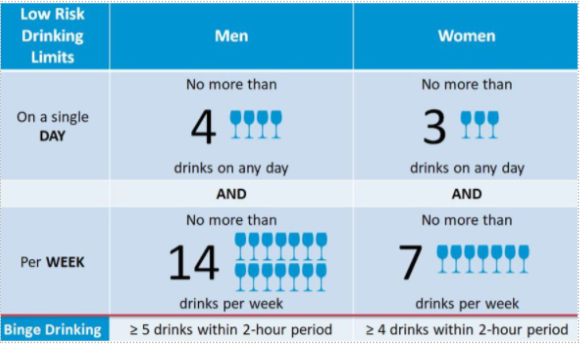
Image: ACLM Board Review Course 2020
High-Risk Drinking
There is agreement, however, that unsafe or high-risk alcohol consumption should be avoided completely. Unsafe drinking or high-risk drinking is any amount above moderation. That means having 2 glasses of wine a night and 3 on the weekend would constitute heavy alcohol use, as would drinking 5 beers during a football game.
Binge drinking also qualifies as heavy alcohol use. It’s defined as:
- Drinking enough so that blood alcohol levels reach 0.08mg/L or legal intoxication.
OR
- Consuming 5 drinks for men or 4 drinks for women within 2 hours at least once a month.
Why You Should Reconsider Your Alcohol Intake
Not only is any amount of alcohol potentially risky for cancer and many other chronic conditions, but generally the more often you drink, the more you’ll want. Science shows that chronic alcohol use results in needing more alcohol to achieve the same serotonin high, which means that as alcohol tolerance increases, there is less of an initial “happiness hit.” Consuming more alcohol also leads to a larger drop in serotonin when one comes down from the high, which is a very vicious cycle. Chronic alcohol use can also influence the stress response. This creates a sensation of more stress without alcohol and drives one to drink more frequently.
To Drink or Not to Drink
Ultimately, your choice to drink alcohol is up to you. But we encourage you to think about your alcohol use and how it measures up to the national standards in different countries and the WHO recommendations. The science shows that consuming less alcohol is better for preventing chronic disease, preserving brain health, and preventing the urge to drink more. If you feel you need help with reducing your alcohol intake or want to learn more about how alcohol affects you, consider joining one of our coaching programs for support, guidance, and resources.
How to Fight Chronic Stress
Let’s face it: Life is stressful. And even small stressors (causes of stress) can snowball over time. This article explains the risks of chronic stress, how to notice its physical signs and strategies to counter its harmful effects.
What is Chronic Stress?
Chronic stress is a state of overload. It causes your adrenal glands to release high levels of cortisol and leads to other unwanted side effects. To fully understand, let’s review how stress affects your body, also known as the stress response.
Work deadlines, being stuck in traffic, and running from danger all trigger the same stress response. Your brain sends signals that cause the release of hormones called epinephrine (adrenaline) and cortisol into your bloodstream. Adrenaline makes your heart race and ups your blood pressure. Your liver releases glucose (sugar) into your bloodstream, which causes your blood sugar to rise, and you hold onto sodium and water. Cortisol also causes your muscles to become resistant to insulin, which keeps your blood sugar elevated.
When stress is very brief, these changes can be helpful for survival. But when stress is ongoing, the effects can wreak havoc on your health.
How Stress Affects the Body
Unrelenting stress can lead to the development of chronic conditions, like type 2 diabetes or pre-diabetes, high blood pressure, and obesity. This is especially true when stress is coupled with less movement and highly processed, calorie-dense foods.
At Love.Life, we believe in addressing the root causes of disease, and stress is a big one. If you suffer from chronic stress, consider joining one of our medical or coaching programs for personalized support.
How to Reduce Stress
These four habits help reduce stress and offset its damaging effects.
- Create a mindful minute. Bring mindfulness into your life, even for just one minute per day. Begin by simply breathing in and out with awareness. Or focus on more concentrated breathing, such as box breathing, which involves breathing in for 4 counts, holding for 4 counts, breathing out for 4 counts, holding for 4 counts, and repeating.
- Chill out, literally. Studies show that regularly exposing yourself to water that is 50°F or colder (within reason above freezing) can increase your resilience to stressful events. Start with a 20-30-second cold shower or a cold plunge. Breathe rhythmically throughout cold exposure and work up to 11 minutes total over the course of a week.
- Practice gratitude. Being grateful is something everyone can benefit from. Three to four times per week write down, text, or say aloud three good things that happened that day and at least one thing you’re grateful for.
- Get out of your head. Research shows that journaling, making lists, or writing out what’s bothering you can help you objectively look at what you’re struggling with. This practice helps you use your pre-frontal cortex (the CEO of your brain) to confront your thoughts more clearly and let go of circumstances beyond your control.
How to Get More REM Sleep
REM is the last phase of sleep. It’s categorized by the presence of rapid eye movements, muscle paralysis, rapid heart rate, and increased shallow breathing. REM, like deep sleep, accounts for 1.5 to 2 hours of total sleep time and is prioritized during the second half of the night. Cutting a night’s sleep short by 2 hours may cut 25% of total sleep, but up to 50% of total REM. This pattern can have dangerous short- and long-term side effects.
REM sleep is core to your brain’s ability to consolidate, organize, and file memorizes. During REM sleep, memories, including good, but particularly bad or painful, are softened and filed for long-term storage. Here, a reduction in trauma, fear, and negative but protective primal instincts are separated from memories. This process reduces the chances that trauma can cause someone to become emotionally inaccessible, as is the case with PTSD.
Dream or REM sleep is essential to emotional recovery and vital for learning. REM sleep is also extremely energizing. The body remains paralyzed, unable to move, scream, cry, run, or laugh, but the mind is very active. The brain activity of REM sleep looks most like an awake, active brain; the only difference being sleep paralysis.
If your REM sleep is less than 1.5 hours, try these strategies to increase its duration.
Set a bedtime alarm for 1 hour before bed
A pre-bedtime alarm can remind you to start winding down, turn off electronics, and stop looking at screens. Wrap up your evening tasks and begin to prepare for your bedtime routine, which may involve washing your face, brushing your teeth, writing in a journal, saying a prayer, meditating, or stretching. Dim your lights and use lamps or candles to avoid bright, harsh lighting. You can also use this time to draw a warm bath or take a hot shower before bed.
Stay in bed longer when possible
Set an alarm for 5-10 minutes later for an extra 20-50 minutes of REM sleep per week.
Check alcohol use
Many people use nightcaps to relax and decompress before sleep, but alcohol interferes with deep sleep. Consuming alcohol even 12 hours before bed can significantly affect sleep quality, and drinking closer to bedtime is even more impactful. Alcohol triggers a rise in body temperature, and increased heart rate, and disrupts REM sleep, a phase that’s crucial for recovery.
Check your cannabis use
Although THC is often used as a sleep aid, there are mixed results regarding the effect of cannabis on sleep. Research suggests that THC can have a negative impact on REM sleep length and quality.
The Surprising Benefits of Exercise & Movement
You’re probably aware that regularly moving your body can positively impact your health. The Physical Activity Guidelines for Americans recommend 150 minutes of exercise per week or a little over 20 minutes per day. Meeting this target can help:
- Decrease blood sugar
- Lower triglycerides (blood fats)
- Increase high-density lipoprotein (HDL), the “good” cholesterol
- Reduce blood pressure
- Shrink waist circumference or inches around the waist
Physical activity is one of the six pillars of lifestyle medicine, which also includes:
- Nutrition
- Sleep
- Stress
- Risky behavior reduction
- Social connections
Think of these pillars as interconnected gears. Simply moving the physical activity gear can shift all of the others in ways that protect your health. Read on to learn about why a focus on physical activity can propel your overall lifestyle medicine journey.
Nutrition
Exercise is linked with healthier eating habits. Research shows that 30 minutes of physical activity per day for 15 weeks can help reduce a preference for sweet, salty, and fatty foods.
Sleep
Engaging in 30 minutes of moderate-intensity aerobic exercise, resistance training, or yoga has been shown to improve sleep quality. For optimal sleep just be sure to exercise at least one to two hours before bedtime.
Stress
According to the Anxiety & Depression Association of America, as little as 5 minutes of aerobic activity per day can help to alleviate stress. Exercise releases hormones called endorphins, which help block pain and trigger the production of the “feel good” chemical dopamine.
Risky Behavior Reduction
Physical activity has been shown to reduce cigarette smoking. This is because aerobic exercise (such as walking, swimming, running, dancing, cycling, and boxing) helps curb nicotine cravings and withdrawal symptoms during and up to 50 minutes after a workout.
Social Connection
Bottom line: If you feel overwhelmed about how to change your lifestyle, simply start with regular physical activity. The beauty of lifestyle medicine is that a change in one pilar can have a domino effect on every aspect of your health!
How to Read a Food Label
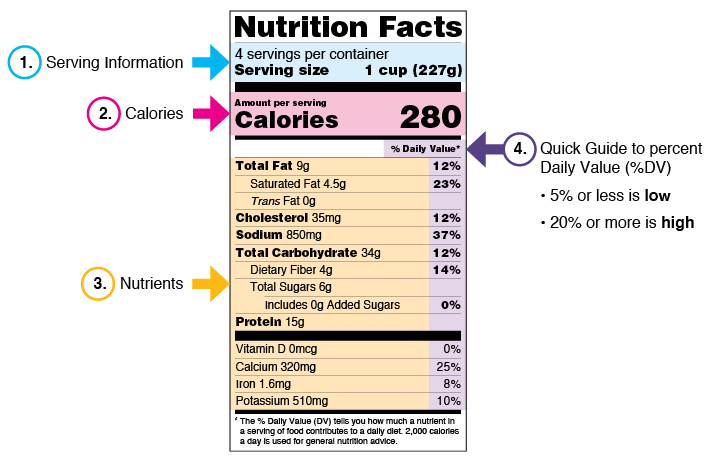
Serving Size
You don’t necessarily need to limit your intake to the serving size listed. That’s because your personal portion depends on the food, your individual needs, and how hungry you feel. But it is important to know that all of the Nutrition Facts info listed is based on the serving size. If you eat more or less than the serving stated, you can apply the difference to the numbers. For example, if the serving size is 1 slice of bread and you eat 2 slices, you’re eating twice the number of calories, protein, fiber, etc. listed on the label.
In highly processed foods, it can be eye-opening to see just how much-saturated fat, cholesterol, added sugar, and sodium one serving packs. Compared with whole food, it’s easy to rack up many calories without even feeling full. For example, a medium apple provides about 125 calories, 5 grams of fiber, and no added sugar, whereas just 7 gummy fish candies contain 150 calories, no fiber, and 8 teaspoons worth of added sugar.
Calories
Love.Life does not recommend counting calories. We believe in eating a primarily whole food plant-based diet and tuning into hunger and fullness cues to guide portions. However, on packaged foods, calorie information can be helpful for comparing different foods to each other or noting the calorie content of a food in relation to its serving size. The latter is referred to as calorie density.
A label can also help you determine a packaged food’s nutrient density, or how much nutrients it contains per serving.
A food with a high number of calories and low amount of nutrients per serving is often referred to as an empty-calorie food.
As you transition to a whole food plant-based diet, you may continue to eat some highly processed foods from time to time.
Assessing label information may help you find better-for-you options within a specific category, like a crunchy snack or dessert. Or perhaps you’ll opt for a less processed alternative, such as baked sweet potato wedges over fried sweet potato chips.
But we recognize that life happens, and celebrations and holidays often include traditional or favorite foods, and that’s OK. The consistency of your overall eating pattern is much more important and impactful than any one food.
What are Daily Values?
Below you’ll see references to Daily Values or %DV. These percentages represent how much one serving of a food provides for a particular nutrient (such as fiber or sodium) compared to the average recommended target or limit per day.
The percentage is based on a 2000-calorie-per-day diet, which may be more or less than your individual nutrition needs.
Fat
Saturated fats are solid at room temperature. At Love.Life we recommend limiting saturated fat because of its relationship with heart disease. The USDA recommends that less than 10% of your daily calories come from saturated fat. When you look at the nutrition label, opt for foods with a Daily Value or %DV for saturated fat that is 10% or less.
We recommend avoiding trans-fat altogether due to its negative effects on cholesterol and heart health. On a nutrition facts label, the trans-fat content should be 0g. Trans fat has been generally eliminated from our food system, but there are some hidden sources to be aware of.
To find hidden trans fats, you must look at a food’s ingredient list.
Under ingredients if you see “partially hydrogenated oils” of any sort, there are hidden trans fats in the food. While the amount may not be enough to add up to 1 gram or more per serving, the presence of trans fat can negatively impact your health, particularly if you eat several servings of that food or eat it often.
Sometimes, you will see “fully hydrogenated oils” on the food label. While these are not technically trans fats, they are highly processed oils that act like saturated fats in your body and may harm your health. Avoid them whenever possible.
Unsaturated fat is listed on the food label as monounsaturated and polyunsaturated fat. These fats are beneficial health wise. You’ll find them in nuts and seeds, extra virgin olive oil, or canned wild salmon.
Sodium
Consuming sodium in moderation is an important way to prevent or control high blood pressure.
Look at the %DV for sodium to put a packaged food in perspective in relation to your overall daily sodium intake. For example, if one serving of food provides 25% of the DV for sodium, you have “used up” a quarter of the daily recommended sodium limit. Every food you eat doesn’t need to be low in sodium, but you shouldn’t exceed 100% of the Daily Value per day.
When looking at sodium on a nutrition label, Love.Life aims for a 1:1 ratio meaning the milligrams of sodium should be less than or equal to the calories per serving. For example, if a serving size is one slice of bread that contains 100 calories, the sodium content should be no more than 100mg, give or take. That said, some healthful whole food products may exceed this 1:1 ratio. If so, here are a few things to consider:
Does the whole food product provide important nutrients, such as whole grains, protein, or fiber? For example, 1 cup of beets provides about 60 calories but 100mg of sodium. While this is not within the recommended 1:1 ratio, beets supply fiber and phytonutrients with known benefits for reducing blood pressure. In comparison, a 1/2 cup serving of canned chicken noodle soup may contain 60 calories and about 890mg of sodium. While both beets and chicken noodle soup are outside of the 1:1 ratio of calories per serving to sodium milligrams, beets have much less sodium and provide substantially more nutritional benefits.
Is the sodium DV% still within a reasonable range? Generally speaking, a “low sodium” food provides 5% or less of the DV per serving. But foods that are less than 10% DV for sodium or under 25% can still be part of a well-balanced nutrition plan. Consider the other food items you consume that day. If one is high but the majority are very low, your sodium intake will average out to a low intake overall. You don’t need to be perfect; just work towards being conscious of your sodium intake and try to consistently maintain healthful habits.
Processed products often contain a high amount of sodium to flavor and preserve the food.
The highest sodium contributors in a typical American diet are bread items, pizzas, sandwiches and cold cuts, soups, burritos and tacos, salty snacks, chicken, cheeses, and eggs and omelets. Seasoning mixes and condiments can also be quite high.
Don’t forget to consider how the numbers can add up. For example, if a 1-cup serving of soup provides 600mg of sodium or 26% of the DV and you eat 2 cups, you’ve hit more than 50% of the daily limit. If you eat that soup with a grilled cheese sandwich made with 2 slices of bread and a slice of processed cheese, you can easily exceed the %DV for sodium for the day in just a single meal.
Carbohydrates
Carbohydrates are a crucial source of energy for your body, especially your brain and muscles. We recommend meeting your carbohydrate needs through whole food sources over highly processed products. Good options include whole grains, vegetables, fruits, and legumes.
At Love.Life we do not recommend “carb counting” but we generally advise covering about a quarter of your plate with starchy whole-food carbohydrates. Overall, for every 25g of carbohydrates, you should consume at least 3-5g of fiber. If you eat whole-food carbohydrates, this will occur naturally.
Dietary Fiber
Fiber helps promote healthy bowel movements, improves satiety, helps regulate blood glucose or blood sugar levels, and supports weight management. Fiber is naturally found in plant foods and may be added to processed foods.
The general recommendation for fiber is ~25g per day for women and ~38g for men. But experts suggest that diets with closer to 40g of fiber per day are better for health.
You can use the nutrition label to assess the grams of fiber per serving size.
Fiber is the one nutrient for which we encourage you to exceed the %DV. That said, we recommend getting fiber from naturally occurring sources, such as whole grains and beans, over-processed products with fiber added, like energy bars.
Also, be sure to drink plenty of water as you increase your fiber intake, as water is needed to help your digestive system properly handle the fiber.
Sugar
Sugar is naturally occurring in many whole, nutrient rich plant-based foods, so the goal is not to avoid sugar completely. However, it is important to limit added sugar, the type added to food by the manufacturer to sweeten a product or the kind you add yourself, like stirring sugar into your coffee or tea.
Eating more whole, unprocessed foods is a great way to automatically reduce your added sugar intake. For example, fresh fruit and nuts provide no added sugar while a processed granola bar may provide a few teaspoons worth.
Added sweeteners found in packaged foods may include high fructose corn syrup, dextrose, cane sugar, honey, or agave, to name a few. And while sweeteners such as cane sugar, honey, and maple syrup are natural, they still count as added sugar and should be limited.
The American Heart Association recommends that women limit added sugar to no more than 24 grams per day for women and men no more than 36 grams per day. You’ll find the grams of added sugar per serving listed on the nutrition label.
When possible, we recommend buying unsweetened foods and adding sweetness in the form of other whole foods, such as whole fruit. For example, prepackaged oatmeal may use cane sugar as a sweetener and can contain 8 grams of added sugar per packet. We prefer starting with plain rolled oats and adding in mashed banana or minced dates and cinnamon to provide natural sweetness from whole foods.
By using naturally occurring sugar from fruit to sweeten foods, you add fiber and nutrients and align meals with a whole food plant-based diet approach.
Protein
Protein is often the first concern when going plant-based, but protein is found in many plant foods.
Most people require 0.8g of protein per kg of their body weight, although you may need more based on your age, physical activity level, and goals. For a 150-pound adult 0.8 g per kg is about 55 g of protein per day or roughly 15-18 grams 3 times per day.
It’s important to eat a variety of plant-based foods in order to take in a wide array of amino acids, the building blocks of protein. While all plant foods provide all 9 essential amino acids, the amount of a particular amino acid may be low in one type of plant food and high in others. When you eat foods from different food groups throughout the day, including vegetables, whole grains, legumes, nuts, and seeds, you take in many different amino acids. These amino acids come together to form complete proteins that your body can use to maintain, heal, and repair protein tissues, including muscle.
Vitamins and Minerals
The nutrition label traditionally includes Daily Values for vitamin D, calcium, iron, and potassium.
Do not be turned off by a product with low values for any of these nutrients. All whole foods bring something different to the table, and as you diversify your diet with as many plants as possible, you will naturally diversify your intake of vitamins and minerals.
In addition, some foods may be low in vitamins and minerals but rich in antioxidants or other health-protective compounds.
That said, there are some vitamins and minerals that are more difficult to obtain from a plant-based diet.
Ingredients
It’s important to easily recognize all the ingredients in a packaged food. The best rule of thumb is to look for products with common plant-based ingredients free from additives like sweeteners, preservatives, flavors, colors, and oils.
If you’re trying to eat a plant-based diet, reading the ingredient list can help you find hidden sources of animal-based ingredients.
For example, by reading the ingredient list you may find that a soup or can of beans was made with lard, or that a sauce contains eggs or milk.
Become a food label sleuth!
Look for terms like roasted, seasoned, or flavored on packages of nuts, seeds, or legumes, which may indicate that sugar or salt has been added. Monitor your condiments and sauces for their levels of sodium, added sugar, and processed ingredients. You may be surprised by how much-added sugar you’ll find in ketchup or barbecue sauces, in addition to food dyes in hot sauces or chili pastes, and added oils in jarred pasta, pizza, or curry sauces.
New Plant-Based Foods to Explore This Week
As you begin your plant-based journey, you may be in search of new plant-based whole foods or you may come across new foods in plant-based recipes you’re unfamiliar with. Here is a brief list of new foods you may encounter or new plant foods to try. If you’re looking for a way to challenge yourself, try to incorporate one brand-new food each week. Don’t feel limited to this list; there are plenty of plant-based whole foods to explore.
Protein Options
Tofu
What is it? Tofu, which is made of soybeans, is a great source of protein, phytonutrients (health-protective plant compounds), calcium, iron, and other vitamins and minerals. Research has found that tofu may have a positive impact on heart health, especially when substituted for red or processed meats regularly in your diet.
How do I use it? Tofu is very versatile. For breakfast, you can replace eggs in a scramble with crumbled tofu. You can use marinated baked or grilled tofu in place of chicken in a Greek salad. You can even blend tofu into a smoothie, creamy dessert, or sauce to add bonus protein and texture.
Side note: When substituting meat for tofu, extra firm tofu is best. When you use tofu for a creamy dish, soft or silk tofu may work better. After opening your tofu package be sure to drain and then press the tofu to squeeze out as much excess water as possible. One way to do that is to wrap your tofu in a clean kitchen towel and press lightly with a heavy pot.
Tempeh
What is it? Tempeh is fermented soybeans and like tofu, it’s an excellent meat substitute due to its protein content. Tempeh provides loads of fiber, vitamins, minerals, phytonutrients, and beneficial bacteria due to its fermentation.
How do I use it? Tempeh can be used wherever you typically use meat. It can be crumbled to resemble the texture of ground beef or sliced to make tempeh “bacon.”
Side note: Like tofu, tempeh adapts to the flavors around it, so it’s very versatile. It also packs more protein per serving than tofu.
Seitan
What is it? Seitan is made from vital wheat gluten and is often used in place of meat in plant-based recipes. Unlike tofu and tempeh, seitan is not made from soy, so it’s a great option for someone with a soy allergy or sensitivity. However, seitan is not gluten-free.
How do I use it? Seitan can be used in place of meat in a number of dishes, like stews, sandwiches, tacos, kabobs, chilis, or barbeque. It tastes savory with a texture comparable to meat.
Side note: You can make seitan at home or buy it at your local market. If you decide to make seitan at home, add different seasoning combinations to mix up the flavors. For example, try BBQ tempeh or marinate it in teriyaki sauce.
Mung Beans
What is it? Mung Beans are a commonly eaten legume in Asia and have been traditionally used for medicinal purposes. They have many potential positive impacts on health, including cancer prevention and improved regulation of blood sugar, blood pressure, and cholesterol. Mung beans tend to be well tolerated digestively and they provide protein, fiber, vitamins, and minerals.
How do I use it? Like other beans, mung beans can be added to salads, soups, grain bowls, or curry. Try them in a veggie stir fry or in place of lentils or beans in soup.
Side note: Mung beans are somewhat sweet, but mild in flavor overall.
Whole Food Carbohydrate Options
Jackfruit
What is it? Jackfruit is a large fruit with a stringy interior that’s growing in popularity. It provides fiber, disease-protective antioxidants and phytonutrients, potassium, vitamin C, vitamin B6, and other micronutrients. Jackfruit has been shown to help prevent heart disease, cancer, and bone-related diseases.
How do I use it? Jackfruit has become a common substitute for meat in tacos, barbeque, and chili. It absorbs flavors well, so it’s very adaptable. And due to its stringy interior, it mimics the texture of shredded meat.
Side note: You can buy canned jackfruit, but you’ll also find it in the produce section at many supermarkets. It’s becoming more popular on restaurant menus as a meat alternative.
Açai
What is it? Açai is a type of berry that has become very popular in recent years. Açai berries are said to be a “superfood,” however, be cautious of health claims made by the media. While research does support acai’s antioxidant properties, you may see a variety of benefit claims that aren’t backed by published research.
How do I use it? Açai is most commonly used in smoothies or smoothie bowls. You can also purchase açai in juice or powdered form. Açai powders can be added to dishes like chia pudding, overnight oats, plant milk lattes, or smoothies.
Side note: If you buy frozen pureed açai be sure to check the label for added sugars. Frozen pureed açais will provide the benefits of a whole food, therefore we recommend the frozen whole food form over powders or juices.
Fat Options
Chia Seeds
What is it? Chia seeds provide an omega-3 fatty acid called alpha-linolenic acid, as well as protein, calcium, phosphorus, and zinc. Since chia seeds absorb water, they also help support hydration. These seeds are also high in a soluble fiber called beta-glucan, which helps stabilize blood sugar.
How do I use it? Chia seeds are a great addition to smoothies, overnight oats, breakfast cereals, soups, salads, marinades, baked goods, puddings, and sauces.
Side note: When baking you can replace one egg with 1 tablespoon of chia seeds mixed with 3 tablespoons of water. Dried chia seeds have a shelf life of 4-5 years.
Flaxseeds
What is it? Flaxseeds also supply omega-3 fatty acids and fiber in addition to protein, thiamine, and various other minerals and vitamins. Studies have shown that flaxseed consumption is linked to protection against heart disease and has anti-cancer effects. Additionally, consuming four tablespoons of ground flax meal per day has been shown to lower blood pressure.
How do I use it? Use flaxseeds to garnish smoothies, hot cereals, or avocado toast, or mix them into homemade baked goods, energy balls, sandwich condiments, or pasta sauces. Keep in mind that the seeds are calorie-dense, so a little goes a long way.
Side note: Ground flaxseeds are easier to digest than whole because the hard outer shell is broken down. Consider grinding whole flaxseeds in a food processor or coffee grinder just before eating them. You can also make a “flax egg” as an egg replacement by mixing 1 tablespoon of ground flaxseeds with 3 tablespoons of water.
Hemp Seeds
What is it? Hemp seeds are a healthy source of omega-3 fatty acids and omega-6 fatty acids in addition to plant-based protein. They’re rich in magnesium, fiber, and more. They also provide antioxidants that combat free radicals, compounds that damage cells and lead to premature aging and disease.
How do I use it? Like flax and chia seeds, hemp seeds can be sprinkled onto meals and snacks as a garnish. You can also buy hemp seed milk or gluten-free hemp seed flour.
Side note: While hemp does come from the same plant as marijuana, eating the seeds won’t make you feel “high” due to their very low levels of THC (the psychoactive component of marijuana plants).
Tahini
What is it? Tahini, which is a sesame seed paste, is a source of healthful polyunsaturated fatty acids and protein. It’s also rich in an amino acid called methionine, which can be low in a plant-based diet. Some research suggests it may also have positive effects on heart health.
How do I use it? Think of tahini as a condiment or dip. Serve it with veggies, whole grain pita, or whole grain crackers. Or drizzle tahini over a salad, grain bowl, avocado toast, veggie burger, or falafel. You can also blend tahini into smoothies or use it to thicken sauces or soups.
Side note: Tahini is typically an ingredient found in hummus, but you can buy it as a standalone item. You may find jarred tahini in the same aisle as nut butters. In addition, some stores stock herbed or pre-seasoned tahini in the refrigerated section near the hummus.
Flavor Enhancer Options
Nutritional Yeast
What is it? Nutritional yeast is a flaky powder that can be used as a garnish or ingredient to add unique umami flavor to meals and snacks. It provides protein and vitamin B12. The latter is especially important for plant-based eaters since B12 is mainly found in animal products and can be lacking in a plant-based diet.
How do I use it? Nutritional yeast is often added to plant-based recipes when seeking a cheesy flavor. Treat it as a seasoning when making savory dishes, like rice or pasta bowls, soups, and sauces. As a topping, nutritional yeast also makes a flavorful plant-based alternative to parmesan on anything from cooked vegetables to popcorn.
Side note: Nutritional yeast doesn’t need to be refrigerated and it will stay good in your pantry for about two years, so it’s easy to always keep on hand.
Miso Paste
What is it? Miso paste is made from fermented soybeans, but you can also find soy-free options made from chickpeas. There are various types of miso paste, including white, yellow, or red, and we encourage you to try them all.
How do I use it? Miso paste has an umami flavor often used in Japanese cuisine. You can add it to marinades, stir-fries, salad dressings, soups, mashed potatoes, roasted vegetables, or pasta dishes.
Side note: Due to its pasty consistency and depending on how you use it, it may be helpful to dilute your miso paste with water. About one tablespoon of paste per 1 ½ cups of hot water can also serve as a broth.
Vegetable Options
Watercress
What is it? Watercress is a leafy vegetable that’s been used medicinally due to its antioxidant and anti-inflammatory properties and its positive effects on heart disease, cancer, liver disease, glucose levels, and other ailments. Watercress is low in calories and packed with vitamins and minerals.
How do I use it? Like other leafy vegetables, watercress makes a great salad base. Watercress can also be sauteed, pureed in sauces, or added to sandwiches, wraps, soups, and pizzas. To diversify your plant sources, try mixing watercress in with your spinach, collard greens, or kale.
Side note: Depending on how you prepare it, you might want to chop off the stems before eating watercress. While they are edible, they can be quite thick.
Rutabaga
What is it? Rutabaga is a root vegetable. Rutabagas provide antioxidants, fiber, and micronutrients, such as vitamin C, potassium, and folate.
How do I use it? Any time you might use a potato or sweet potato, try a rutabaga. They can be mashed, roasted, made into soup or hash, baked as “fries,” or even baked into a savory or sweet pie. When experimenting with rutabaga try to get creative with spices and seasonings.
Side note: In addition to rutabaga, try a variety of root vegetables, like turnips, parsnips, kohlrabi, and celeriac. Many stores now sell frozen root vegetable “fries” to take home and bake.
Chayote
What is it? Chayote is a type of squash that provides folate, vitamins A, E, and C, and various other vitamins and minerals. It’s also a great source of antioxidants, phytonutrients, and fiber, all of which contribute to disease prevention and wellness.
How do I use it? Chayote is common in Mexican culture, so try seasoning it with Latin-inspired spices. You can also add it to salads, soups, curries, or stir-fries. You can even incorporate it into desserts, like chayote cobbler or pie.
Side note: You may also see chayote mentioned in the cosmetic aisle as it is often used in beauty products.
Spices
There are so many spices to try! You don’t need to buy all of these seasonings at once. Instead, buy a new spice you may not have tried before one at a time to see if you like the taste. Many stores allow you to buy small spice samples, so you don’t have to commit to a bulk purchase. You’ll also find a wide variety of spices at ethnic markets, which can often be purchased in small quantities.
Sugar and Oil Replacements for Baking
Let’s make a swap!
Sweetener –> Mashed Banana
What is it? Use a mashed banana instead of added sugar in baked goods, oatmeal, and other dishes you need to sweeten.
How do I use it? When baking, substitute mashed banana for half the amount of sugar, honey, brown sugar, or agave a recipe calls. For example, if the recipe lists 1 cup of sugar, omit the sugar and use approximately ½ cup of mashed banana instead.
Side note: Using bananas not only cuts down on calories and sugar content but also adds fiber and nutrients. For this type of swap, ripe bananas work best.
Sweetener –> Dates
What is it? Dates are chewy but sweet fruits that are full of nutrients and packed with fiber. They’re often used to mimic a chocolate-like flavor in baking.
How do I use it? Dates can be added to salads, oatmeal, or baked goods for sweetness. In baked goods, chop up or puree dates and use a 1:1 ratio. For example, if a recipe calls for ½ cup of sugar, use approximately ½ cup of chopped dates instead.
Side note: Dates often have pits, so be sure to remove pits before you add the fruit to your food processor. Also, be careful when biting into a date that has a pit. Pitted dates (meaning the pit has been removed) are deliciously stuffed with nut butter, nuts, or coconut for a quick sweet snack.
Oil –> Applesauce
What is it? Use unsweetened applesauce as a replacement for oil when baking.
How do I use it? When baking, applesauce makes a great alternative to oil in a 1:1 ratio. For example, if a recipe calls for ½ cup of oil, use ½ cup of applesauce instead. If you don’t like how the recipe turns out, try to substitute half of the oil for applesauce.
Side note: Substituting applesauce lowers the amount of saturated fat and calories you add to baked goods. Additionally, the fruit provides bonus fiber and micronutrients.
Oil –> Pumpkin/pureed squash
What is it? Canned pureed pumpkin provides fiber, antioxidants, vitamin A, potassium, and more. Look for 100% pure pumpkin rather than a canned pumpkin pie mix with added sugars and spices.
How do I use it? Like applesauce, pureed pumpkin or squash can be substituted for oil in a 1:1 ratio when baking. For every 1 cup of oil the recipe calls for, use 1 cup of pureed squash or pumpkin instead.
Side note: Pumpkin can also be used as an egg replacement in baking. Replace 1 egg with ¼ cup of pumpkin puree.
Nutrigenomics: The Science of Nutrition and Genes
Nutrigenomics is how your lifestyle choices and the foods you eat talk to your genes to influence your health outcomes.
How Does Nutrigenomics Work?
There are some diet and lifestyle factors that apply to nearly everyone. For example, some foods help reduce inflammation for most people, like turmeric, broccoli, and blueberries. Natural compounds in these foods, including antioxidants, protect cells from damage that can lead to premature aging or disease. Regular physical activity also influences genes in ways that impact health.
At Love.Life we also offer personalized gene testing, to identify specific genetic differences that are unique to your body. For example, caffeine affects people differently based on their genes. Roughly 50% of people process caffeine slower than others, which can increase the risk of high blood pressure and heart disease. But this isn’t true for half of the population. Testing how you process caffeine allows us to provide tailored recommendations that can help improve your sleep, blood pressure, and exercise performance.
What is Gene Expression?
Humans are born with a set of genes inherited from their biological parents. And as humans, we have remarkably similar DNA sequences. But there are genetic differences from person to person called SNPs (pronounced snips), single nucleotide polymorphisms, that interact with lifestyle in unique ways. These are sometimes referred to as genetic variations or variants.
- Certain SNPs have a big impact on your health. We call these high penetrance genes. The genes that present in this way are often screened for at birth and treatment is guided by a genetic counselor. A widely known high penetrance gene is the BRCA gene for breast cancer risk. It often leads individuals to take preventative measures to reduce breast cancer occurrence.
- There are also hundreds of low-penetrance genes within our genome that can increase the risk of certain chronic diseases or can improve health, longevity, and performance. For example, some people have a genetic variant that increases the risk of developing Celiac disease. Another SNP can indicate that someone has a genetic tendency to excel at strength and power-based exercises.
- The last component of gene expression is not about the genes you were born with, but rather how they’re expressed based on outside factors, such as toxins, diet, exercise, and even mindset. This level of gene expression is called epigenetics. It’s the set of chemical switches that turn a gene on or off and allow your body to read a gene. Scientists have discovered that about 80% of all chronic disease is related to lifestyle factors. That means lifestyle changes can be used to work with your genes to switch on those that promote health and turn off those that can do harm.
How Does Love.Life Use Nutrigenomics?
First, we’ll use nutrigenomic principles to make sure your body has enough of the nutrients and antioxidants required to create protective gene switches where they’re needed. We can also work with you on an individual level to provide tailored diet and lifestyle recommendations that support your unique SNPs in ways that reduce disease risk and optimize your health.
For more information about how we can create a tailored approach based on your genes, contact us to schedule a consultation with a Love.Life provider.
7 Things You Need to Know About Cholesterol
- Cholesterol buildup inside arteries (called plaque) leads to heart disease, but this can be prevented and reversed with the right diet, something medications cannot do. Typically, a doctor will prescribe a medication called a statin, which thins the blood. This allows blood to flow through narrowed arteries. But the proper diet can actually help break down plaque buildup, expand artery passageways, and allow blood to flow naturally.
- Cholesterol in the blood, also called lipoproteins, are further categorized as “bad” LDL cholesterol or “good” HDL cholesterol. LDL particles build up and form plaque inside blood vessels, which is known as atherosclerosis. Atherosclerosis causes blood vessels to narrow and become less flexible. This leads to high blood pressure, heart disease, and stroke. Meanwhile, HDL cholesterol helps remove LDL buildup to prevent plaque formation. LDL and HDL levels tend to be a better indicator of heart disease risk compared to your “total cholesterol” lab value.
- HDL or “good” cholesterol is increased through healthy lifestyle choices, such as consistent exercise, maintaining a healthy weight, and avoiding smoking. Additionally, eating more whole grains in place of refined carbohydrates has been shown to increase HDL. General consistent physical activity, or aerobic exercise, even of moderate intensity, has also been shown to raise HDL levels.
- LDL or “bad” cholesterol is increased through a high intake of saturated fat. Saturated fat is found in foods like red meat and high-fat dairy products. Smoking, alcohol use, and a sedentary lifestyle can also contribute to high LDL levels. On the other hand, a high intake of fiber and plant sterols has been shown to lower LDL cholesterol and total cholesterol levels by decreasing the absorption of cholesterol in the gut. Eating unsaturated fat, specifically mono-unsaturated fat (MUFAs) found in foods like olives, avocado, and nuts, in place of saturated fat has been shown to lower LDL and have a positive effect on heart health.
- General “heart healthy” recommendations, such as consuming low-fat dairy products and limiting red meat have been shown to be effective in reducing total cholesterol and LDL, but only to a certain degree, and do not provide the disease reversal effects attributed to plant-based diets.
- Cholesterol found in foods is called dietary cholesterol, which is only found in animal-based foods. The terms HDL and LDL only apply to the cholesterol in your blood. In other words, if you consume a lobster tail, which is high in cholesterol, it does not contain LDL or HDL cholesterol, just dietary cholesterol. Research is conflicting, but dietary cholesterol seems to raise “bad” LDL cholesterol levels in the blood as well as total cholesterol and should therefore be avoided as much as possible.
- The biggest contributors to dietary cholesterol intake are meat, eggs, and full-fat dairy products.
5 Ways to Lower Your “Bad” LDL Cholesterol
- In general, women should aim for 21-25 grams of fiber per day and men should strive for 30-38 grams per day. Whole grains, vegetables, fruits, nuts, seeds, and legumes are great sources of fiber. Some specific examples of high-fiber foods to help lower LDL include beans, tofu, avocado, potatoes, oatmeal, Brussels sprouts, asparagus, broccoli, carrots, apples, bananas, brown rice, pumpkin and chia seeds, nuts, and quinoa.
- Any exercise and movement can contribute to LDL reduction. Moderate-intensity aerobic exercise may increase HDL cholesterol, which in turn helps reduce LDL cholesterol. To directly lower LDL research has found that aerobic exercise must be at a higher intensity. Other studies show that aerobic exercise must result in weight loss to cause a reduction in LDL, and some research suggests it has no effect. In summary, aerobic exercise may or may not reduce LDL, but it can positively impact overall lipid panels and cardiovascular health.
- Resistance training or strength training has been shown to lower LDL cholesterol, especially when it involves more sets and/or reps as opposed to heavier weights with fewer movements. Studies do not find that pairing resistance training with aerobic exercise results in further LDL reduction. Resistance training can include pushups, squats, lunges, planks, free weights, or resistance band exercises.
- Overall, your lipid profile can be improved through various types of exercise, but exercise consistency is even more important than intensity for decreasing heart disease risk. For this reason, it’s important to choose an exercise that’s sustainable long-term.
- Avoid smoking and nix or limit alcohol, fried food, red or processed meats, full-fat dairy, and processed bakery items.
10 Ways to Hack Your Way to Better Sleep
1: Stick to a routine, even on weekends. Ideally, go to bed and wake up at or near the same time each day. Any routine that fits your schedule and allows for about 8 hours is reasonable.
2: Exercise in the morning or early afternoon, preferably outdoors or near east-facing windows. Seeing sunlight while engaging in physical activity during the day helps promote deep sleep at night.
3: Look out at the early morning light for at least 5 minutes. This helps keep your circadian rhythm synchronized. Seeing the sunset or being outside around dusk is also beneficial to your circadian rhythm and can be especially helpful when changing time zones.
4: Ditch the afternoon coffee. On average, caffeine can stay in your system for 12 hours, so time your morning coffee or tea 12 hours before you want to be in bed.
5: If you consume alcohol, limit to 2 drinks per day for men and 1 for women, and don’t drink alcohol within three hours of bedtime. Alcohol causes sleep to be fragmented, raises core body temperature, and decreases deep sleep. You’ll get your best sleep when your body temperature drops and sleep is uninterrupted.
6: Avoid bright lights, screens, smartphones, or sources of blue light 3 hours before bed. Blue light decreases melatonin production and increases cortisol, which throws off sleep cycles. Try to add candles, dim lamps, or natural “fire light” to your evening routine.
7: Make your bedroom a dark cave since even a little light can disrupt sleep significantly. Minimize light from phones, alarm clocks, and even smoke detector sensors until you want to naturally wake up.
8: Make your room cool. Set your thermostat to 65-68°F to help trigger a drop in core body temperature, a sleep signal for your body.
9: Nap a little, but not too much. Keep naps to less than 30 minutes to support a bump in energy, ideally, in the early afternoon, no later than 3 p.m.
10: Eat light and early. Eat enough to be satisfied (not too hungry or too full) and finish your last meal or snack 3 hours before bed. This will give your body time to digest the food and prepare for rest.
How to Freeze Fruit and Enjoy it Every Day
At Love.Life we recommend eating fruit every day. But you may not be able to get fresh fruit from the supermarket daily, and fruit doesn’t always last as long as you hope. Here’s a guide on how to freeze fresh fruit so you’ll always have some on hand to incorporate into your daily meals and/or snacks. Fortunately, fresh fruit is easy to freeze, and unlike canning, the process doesn’t require adding sugar.
Quick tips for freezing fruit:
- It’s best to freeze fresh fruit when it’s at peak ripeness.
- After freezing most fruits will last about 8-12 months.
- We recommend using reusable freezer-safe bags or containers as eco-friendly options.
General fruit freezing instructions:
- To begin, wash, peel, and if needed slice or chop your fruit.
- Spread out the fruit on a lined baking sheet in a single layer with spaces between each piece.
- Place the tray in the freezer for about 2 hours.
- Transfer the frozen fruit to a reusable freezer-safe bag or container and store it in the freezer.
Bananas: While you can freeze bananas in the peel, we recommend peeling prior to freezing. You can then follow the steps above. Frozen bananas will keep for about 3 months. They’re great in smoothies, oatmeal, or dipped into melted dark chocolate.
- Bananas also make a terrific replacement for added sugars in baking. To freeze mashed bananas, mash with a fork and spoon and then fill silicone ice cube trays or muffin tins with mashed bananas. Freeze for about 2 hours and then transfer to a reusable freezer-safe bag or container. If you use specific amounts often, like ½ or ¼ cup, measure before freezing and mark the containers so you can thaw the exact amount you need.
Grapes and cranberries: Simply place these fruits in a reusable freezer-safe bag or container and freeze them (no need to freeze on a tray first).
Berries: Berries can be frozen using the method described above, or rinsed under cold water, dried well, and immediately frozen. They’re terrific in smoothies, acai bowls, overnight oats, or as a frosty snack.
Apples: If you want to peel your apples, do so first, then core and cut them into slices or chunks. To preserve their color, coat or soak apple pieces in water with lemon or lime juice prior to freezing (use 3 tablespoons of citrus juice per quart of water). Next, place the apples in a freezer bag or container and freeze. They’re perfect for smoothies, oatmeal, or cobbler.
Peaches and apricots: Wash these fruits under cold water. To peel, dip them into boiling water for about 20 seconds to loosen their skins. Cool, peel off the skins, and then chop or slice. Next, freeze on a baking sheet for about 2 hours and transfer to a reusable freezer-safe bag or container and freeze. These gems make delicious additions to smoothies, sauces, and chia pudding.
Crushed or pureed fruit: To preserve color, mix 1 tablespoon of lemon juice per pint of crushed or pureed fruit. Freeze in reusable freezer bags or containers.
Avocados: First, wash your avocados. You can freeze them in their skins whole or remove the shells and chop. You can also slice avocados into halves or pieces, sprinkle with lemon juice, and place on a baking sheet to freeze for about 2 hours. Then transfer to a reusable freezer-safe bag or container and freeze.
- For mashed avocado, remove the peel and pit and mash with a bit of lemon juice. Place scoops of mashed avocado (in your desired amounts) on a lined baking sheet and freeze for 2 hours. Transfer to a reusable freezer-safe bag or container and freeze. Or skip the pre-freezing step and simply place mashed avocado in a reusable freezer-safe bag or container and freeze. You can also freeze your guacamole. To use, thaw overnight in the refrigerator or in cold water for 30 minutes.
The Foods That Help Extend Your Longevity
Scientists believe that about 25% of your lifespan is influenced by your genetics. Your genes, which you inherit from your parents, are instructions that code your features, like your hair color and height. But the remaining 75% of your lifespan is influenced by factors you can modify, including your lifestyle and environment. In other words, a large portion of your lifespan is determined by components within your control. The quality of what you eat is a key piece of the lifespan puzzle. Here are the research-backed foods and eating patterns that can help extend your longevity.
Blue Zones and Plant-Forward Nutrition
Blue Zones are five areas of the world where people live the longest, healthiest lives. Blue Zones include areas in Greece, Japan, Italy, Costa Rica, and the USA (California). Blue Zones residents are likely to become centenarians (exceed the age of 100 years old) and remain healthy. Their way of life is highly aligned with Lifestyle Medicine, as they value plant-forward diets, physical activity, social connection, sleep, rituals that reduce stress, and not smoking.
When it comes to nutrition, Blue Zones communities typically enjoy a 95-100% plant-based diet. Eating patterns in these regions are centered around whole, unprocessed foods. In addition, their diets are rich in nuts, beans, whole grains, vegetables, and fruit.
In short, incorporating these foods into your meals can help you eat more like Blue Zones communities:
- Nuts: 1-2 handfuls per day
- Almonds, Brazil nuts, cashews, hazelnuts, pine nuts, pistachios, walnuts
- Beans: ½ – 1 cup per day
- Black beans, black-eyed peas, chickpeas, fava beans
- 100% whole grains: 3 servings per day
- Barley, brown rice, bulgur, farro, ground corn, quinoa, oats
- Fruits and vegetables: 5-10 servings per day
- Avocados, bananas, bitter melons, lemons, papayas, peach palms, plantains, tomatoes
- Fennel, seaweed, shiitake mushrooms, squash, sweet potatoes, wild greens, yams
How Do These Foods Help?
Research shows that shifting away from a typical Western diet that is high in processed foods to an eating pattern that includes legumes, whole grains, and nuts is linked with longevity. If this shift starts at 20 years old, the increase in life expectancy is reported to be 10.7 years for females and 13 years for males. If this shift starts at 60 years old, the increase in life expectancy is reported to be over 8 years.
These foods are also powerful on their own. Nuts are packed with key nutrients, including copper, fiber, folate, vitamin E, and arginine. Evidence shows that people who eat nuts daily have a 20% lower mortality rate than people who do not consume nuts. Eating nuts has also been shown to protect against heart disease, which is the leading cause of death in the U.S.
As for beans, one study found that consuming 20 grams of beans per day can reduce the risk of death by about 8%. There are many benefits to replacing meat with beans. This practice is known to reduce the risk of heart disease and diabetes, two of the top 10 leading causes of death in the U.S.
Whole grains are also tied to longevity.
Whole grains are differentiated from refined grains mainly because the entirety of the plant remains intact, including the bran. The bran portion of a whole grain contains valuable nutrients, such as B vitamins, iron, copper, zinc, magnesium, antioxidants, and phytochemicals. Research shows that whole grain consumers generally have a 9% lower mortality rate, and a 15% lower death rate from heart disease, compared to those who do not regularly eat whole grains.
Lastly, fruits and vegetables are linked with longevity, largely due to their polyphenols. Polyphenols are natural compounds that protect against stress-induced damage that leads to chronic conditions, such as heart disease. Research shows that people who ingested 650 mg of polyphenols daily have about a 30% lower death risk compared to those who ingested under 500 mg daily.
How Alcohol and Tobacco Affect Longevity
Alcohol and tobacco use have well-documented negative effects on health and can have a significant impact on longevity. Here’s a breakdown of how each impacts lifespan:
Alcohol:
- Excessive alcohol consumption can lead to a variety of health problems, including liver disease, heart disease, certain types of cancer, and neurological disorders.
- Chronic heavy drinking can cause alcoholic liver disease. This can range from fatty liver to more severe conditions, like cirrhosis, which can significantly reduce life expectancy.
- Alcohol abuse also increases the risk of developing heart conditions, such as high blood pressure, stroke, and heart failure. Although light alcohol consumption has been shown to have a minimal impact on heart risk, a heavier intake exponentially increases the chances of developing heart disease.
- Long-term heavy alcohol consumption has been linked to an increased risk of various cancers, including liver, esophageal, throat, mouth, and breast cancer.
- Alcohol can affect the central nervous system and lead to cognitive impairment, memory problems, and an increased risk of developing neurodegenerative disorders like dementia.
- Accidents and injuries associated with alcohol use, such as motor vehicle accidents and falls, can also contribute to premature death.
Tobacco:
- Smoking tobacco is a leading cause of preventable diseases and premature death worldwide.
- Cigarette smoking is the primary cause of lung cancer and increases the risk of developing several other types of cancer, including those of the mouth, throat, esophagus, pancreas, bladder, kidney, and cervix.
- Smoking damages the respiratory system and can lead to chronic obstructive pulmonary disease (COPD), emphysema, and chronic bronchitis, which can significantly reduce life expectancy.
- Tobacco use is a major risk factor for heart disease, including artery hardening and stroke.
- Smoking weakens the immune system and can increase the risk of infections and respiratory illnesses.
- Secondhand smoke also poses health risks, particularly for those who are frequently exposed to it.
- Quitting smoking has significant health benefits and can improve life expectancy, even for long-term smokers.
Overall, both alcohol and tobacco have detrimental effects on health and longevity. It’s important to note that moderation is key when it comes to alcohol consumption, and the best approach is to avoid tobacco altogether. Making healthy lifestyle choices, including maintaining a balanced diet, engaging in regular physical activity, and avoiding harmful substances, can significantly contribute to a longer, healthier life.
Can Better Sleep Help You Live Longer?
Sleep plays a crucial role in your overall well-being and its significance extends far beyond simply feeling refreshed each morning. In fact, quality sleep is a cornerstone of health. From bolstering your immune system and supporting cellular repair to enhancing your cognitive function and emotional well-being, the importance of sleep cannot be overstated. Read on to explore the profound impact sleep has on your lifespan.
The Importance of Sleep for Your Immune System
Sleep is not a passive activity; it’s a dynamic state during which your brain and body engage in active processes. While you sleep your nervous system regulates signals and hormones that affect your immune system. These include the activity and reproduction of immune cells and the production of antibodies. In general, sleep deprivation suppresses overall immune function and increases the risk of getting sick.
Chronic Disease May be Prevented by Adequate Sleep
Data shows that there is a modest, yet significant, increase in the risk of having a heart attack after you “spring forward” and lose an hour of sleep post daylight savings time. A lack of sleep is also associated with a higher risk of stroke and cancer. Too little sleep increases the likelihood of developing characteristics associated with metabolic syndrome, like insulin resistance (type 2 diabetes) and weight gain.
Sleep Supports Physical Recovery
Poor sleep also inhibits physical recovery. Growth hormones are typically released during deep sleep. When that’s interrupted, DNA recovery and tissue repair are impaired. This affects all types of recovery, from a sunburn or paper cut to the healing of muscles and bones. Sleep deprivation has also been associated with low testosterone and impaired fertility. In addition, inadequate sleep decreases motivation to exercise.
7 Ways to Replace Animal Protein with Plant Protein
If one of your goals is to move towards a plant-based diet, you may be wondering if it will be difficult to meet your protein needs. In some cases, you can swap one food for another without reducing your total protein intake. Or you may need to combine a few foods in order to take in the same amount of protein. Here are 7 swaps to replace about 20 grams of animal-based protein with 20 grams of plant-based protein.
1. Replace chicken with tempeh in salads
Swap 3 oz cooked chicken breast cooked (26 grams of protein) for 4 oz tempeh (26 grams of protein).
2. Replace steak with edamame in a stir-fry
Swap 3 oz cooked flank steak (23 grams of protein) for 1 ¼ cups cooked edamame (23 grams of protein).
3. Replace ground beef with mushrooms and lentils in pasta
Swap 3 oz of ground beef cooked (22 grams of protein) for 1 cup cooked lentils + 1 cup diced raw mushrooms (21 grams of protein).
4. Replace pulled pork with jackfruit and lentils in a sandwich
Swap 3oz pork (23 grams of protein) for 1 cup of jackfruit + 1 cup of lentils (21 grams of protein).
5. Replace carnitas with black beans in a burrito
Swap 3 oz pork (23 grams of protein) for 1 ½ cups black beans (22 grams protein).
6. Replace chicken with roasted chickpeas in shawarma
Swap 3 oz cooked chicken breast (26 grams of protein) for 2 cups canned chickpeas (24 grams of protein).
7. Replace eggs with tofu in a scramble
Swap 3 extra-large eggs (21 grams of protein) for 9 oz firm tofu (21 grams of protein).
Why Sleep is Critical for Fitness Recovery
While many athletes and active people focus on post-workout foods or supplements to promote recovery, they often forget about another key recovery tool: sleep. Read on for more about the benefits of sleep for active adults:
Sleep aids in recovery
Whether you participate in recreational exercise or professional athletics, your body requires mending from physical activity. Sleep has been shown to be one of the most beneficial ways to promote exercise recovery. Poor sleep can reduce growth hormone levels, which can interfere with healing. In addition, a lack of sleep is associated with poor eating habits, which can also hinder recovery.
Sleep prevents injury
A lack of sleep has been tied to a higher rate of injuries, particularly concussions. Adequate sleep can help reduce injuries by physically supporting your body’s structure, and by enhancing brain function and reaction time, which can result in fewer mistakes and accidents.
Sleep decreases injury healing time
Sleep enhances injury healing, partly through its anti-inflammatory impact. Healthy sleep also supports good nutrition choices, which further enhance recuperation.
Sleep supports mental health
In addition to cognitive function, mental health and mood can take a toll when sleep is not prioritized. Not getting enough sleep has been linked to poor mental health outcomes, such as anxiety and depression or worsening of these conditions. In addition, research suggests that poor mental health is associated with an increased injury risk.
Sleep boosts your immune system
Sleep deprivation increases inflammation, which suppresses immune function. When the immune system is impaired, so is recovery. Too little sleep also increases cold and flu susceptibility.
Sleep boosts performance and endurance
Likely related to the improved recovery sleep provides, healthy sleep has been linked to better performance and endurance. After a poor night’s sleep active people often experience a quicker onset of exhaustion, a perceived increase in effort, and impaired accuracy of their sport.
New to Home Cooking? How to Stock Your Kitchen
Here are some kitchen products that will make your transition to healthier home cooking easier. You may already have many of these supplies, but some may need an update. For example, sharp knives will make cutting crisp fruits and vegetables safer and easier. Here are some of the supplies the Love.Life nutrition team recommends:
- A good blender
- Cutting boards (separate for ready-to-eat food and raw meat)
- Pots and pans
- Baking sheets
- Mixing bowls
- Strainer or colander
- Can opener
- Measuring spoons and cups
- Vegetable peeler
- Sharp knives
- Glass reusable water bottle
- Glass containers for leftovers or meal prep containers
- Spatula
- Whisk
- Kitchen scissors
- Tongs
- Oven mitts
- Citrus juicer
Consider purchasing, depending on your favorite things to cook:
- Air fryer
- Pressure Cooker
- If you are interested in multiple appliances, consider searching for a product with multiple functions. For example, an air fryer that is also a pressure cooker.
- Sous Vide
- Crockpot
- Food processer
- Toaster oven
- Lettuce spinner
- Electric griddle
- Food steamer
- Electric mixer
- Mandolin slicer
- Rice cooker
- Popcorn popper
- Cast iron skillet
- Muffin tin
- Tofu press
- Bread maker
- Tea kettle
- Soda Stream
- Coffee maker/ cold brew coffee press
- Many of these appliances aren’t needed to lead a more plant-based lifestyle, but they may be helpful for developing healthier habits. For example, if you typically buy sweetened cold brew coffee daily, you may want to consider buying a coffee press to make cold brew at home without unwanted additives.
What can be tossed or donated?
As you work towards adding more whole foods to your diet, you simultaneously begin to limit or eliminate other components of your diet. While cleaning out your kitchen, you will come across food that you know needs to go, we call these “easy goners,” but keep in mind that some of these foods may not be easy to part with! Revamping your kitchen is just one step in moving towards a more plant-based whole foods lifestyle, but it is a big step. If you are not ready to totally revamp all your eating habits, a great place to start is putting the “easy goners” that fall under calorie-dense or packaged food, such as your go-to processed cookies or potato chips, in a separate section and work towards minimizing the section size. Next, work towards finding substitutes to swap in for your favorite processed foods or regular meals. Lastly, if you are working towards becoming fully plant-based, move on to “the hard ones.”
Whenever possible, consider donating the food that no may no longer fit into your lifestyle to your local food pantry, excluding expired food which should be composted or thrown out.
- Easy goners
- Expired or old food
- Can it be composted?
- Calorie-dense food you don’t want to keep
- Think: Groceries you bought for guests, food gifts, items you bought and did not like, etc.
- Packaged food with artificial ingredients such as…
- Artificial colors
- Artificial flavorings
- Artificial sweeteners
- Hydrogenated oils
- Expired or old food
- Swap it out
- Change out processed, non-whole foods with plant-based substitutes. Swap:
- White flours for whole grain flours
- Boxes of mac and cheese for whole grain pasta made with butternut squash, cashew “cheese” sauce
- Fruit roll-ups for single-ingredient fruit leather
- White bread and pasta for whole grain bread and plant-based pasta, such as chickpea pasta or zucchini noodles
- Brownie mix for a homemade date-based brownie recipe
- Soda pop for sparkling water
- Sugary cereal for maple overnight oats
- Fried tortilla chips for whole grain crackers
- Potato chips for air-popped popcorn
- Change out processed, non-whole foods with plant-based substitutes. Swap:
- The hard ones … work up to this, it won’t necessarily happen overnight.
- Your favorite processed, non-whole foods
- Start by limiting these items and work towards eliminating them if possible. Challenge yourself to move further down the whole foods continuum.
- Search for whole-food substitutes that are just as satisfying.
- Save can’t-live-without favorites for special occasions.
- Your favorite processed, non-whole foods
Food and Sleep: What to Eat and What to Avoid
What and when you eat can play a big role in your ability to fall asleep and stay asleep. For example, eating a large meal that’s high in fat and refined carbs can make you sleepy. But a big meal can also cause your blood sugar and insulin levels to spike, which can lead to a crash that wakes you up in the middle of the night. Fasting, or not eating enough, can also disrupt your sleep.
Ideally, on a day-to-day basis, aim for balanced meals that are rich in fiber and complex carbohydrates to optimize your sleep. In addition, regular mealtimes and consistently balanced meals can help regulate your body’s circadian rhythms, which supports healthy sleep.
Here’s what to eat and what to avoid to promote a more restful night:
Foods to Consume
High fiber foods
Research shows that a fiber-rich diet improves sleep. A high-fiber diet is also linked to many health benefits, including reduced chronic disease rates. High-fiber foods include vegetables, fruits, legumes, whole grains, nuts, and seeds.
Melatonin precursors
Melatonin precursors are a natural way to boost your body’s levels of melatonin, a hormone linked to improved sleep quality. Tart cherry juice, for example, is a good source of natural melatonin precursors. It’s also a potent anti-inflammatory food. More foods to help you sleep:
- Kiwi
- Pistachios
- Almonds
- Bananas
- Dates
- Walnuts
- Tomatoes
Foods high in tryptophan
Your body cannot make tryptophan, so you must consume it from food. Tryptophan is used to make serotonin and, in turn, melatonin. That’s why studies have shown that foods high in tryptophan can help you fall asleep. Examples include:
- Nuts
- Seeds
- Bananas
- Oatmeal
- Whole grains
- Kiwi
- Beans
Magnesium-rich foods
Studies suggest that low magnesium diets are linked to inadequate sleep or more night-time wakefulness. Meanwhile, diets with adequate magnesium are associated with sufficient sleep. Foods that provide magnesium include:
- Nuts
- Seeds
- Greens
- Whole grains
Sleep-promoting tea
Chamomile tea contains a phytonutrient called apigenin, known to help the body’s natural sleep and hormone cycles and it’s caffeine-free.
Foods to Limit
Caffeinated beverages within 10-12 hours of bedtime
On average, caffeine lasts in your system for 10-12 hours, which means you should time your consumption to finish 12 hours before you want to be in bed. However, some people process caffeine at a different rate based on their genetic variants. To understand more about your body’s response to caffeine, contact Love.Life about nutrigenomics testing. The results of this genetic test may offer further information about how to maximize your sleep length and quality.
Foods with high saturated fat content
Research shows that consuming high-saturated fat and low-fiber foods leads to less deep sleep and more nighttime awakenings. High-saturated fat foods include fried foods, dairy products, baked goods, and processed meats. Overall, many animal products are high in saturated fat while plants are high in fiber, so eating more plants is a smart way to optimize your sleep.
Protein and fat sources
Foods high in protein and/or fat, especially animal products, take longer to digest and can cause nighttime awakenings, particularly when consumed shortly before bed. These include meats, such as chicken, beef, or pork, and dairy products, like ice cream and cheese.
Refined carbohydrates and sugar
Studies have linked high sugar intake to waking up during the night. For optimal sleep, minimize refined sugar and incorporate fiber-rich carbohydrates throughout the day.
Breathing Techniques for Chronic Stress
There are many breathing techniques to choose from with benefits that range from stress reduction to improved mental health. This article explains four breathing approaches to try and why a regular breathing practice may help support your overall health.
Why is Breathing in a Specific Way Important?
The first three techniques (4-7-8 Breath, Alternate Nostril Breathing, and Yoga Nidra) are designed to help reduce stress. That’s key because unchecked stress is known to contribute to many health conditions, including depression and heart disease.
During stressful or anxiety-inducing moments your breathing pace may become quick and shallow. This activates your body’s “fight or flight” response, which over time can weaken immunity, raise blood pressure, and up the risk of type 2 diabetes and obesity. Breathing techniques counter stress by stimulating your body’s “rest and digest” response, which protects your health.
The final technique called the Wim Hof Method, may help you feel more connected to yourself and to your surroundings and improve feelings of self-fulfillment. We encourage you to explore how each method resonates with you and experiment with when to use them to keep yourself in balance.
4-7-8 Breath
This technique, invented by Dr. Andrew Weil, refers to a pattern of breathing that involves inhaling, holding your breath, and then exhaling with specific timing.
To start, bring the tip of your tongue to the roof of your mouth until it touches the ridge of tissue behind your front teeth. Your tongue placement will remain here throughout the process. Note that you will exhale through your mouth by pursing your lips and making a “whoosh” sound. Follow these steps to continue:
- Fully exhale through your mouth.
- With your mouth closed, inhale through your nose for 4 counts.
- Hold your breath for 7 counts.
- Exhale for 8 counts.
Optimally, practice 4 breathing cycles twice per day.
Alternate Nostril Breathing
In Sanskrit, this breathing technique is called nadi shodhana. “Nadi” translates to channel and “shodhana” translates to purifying. Alternate nostril breathing for 15 minutes per day for 6 weeks has been shown to significantly improve stress.
Practicing nadi shodhana involves using your right hand to guide your breath. You may also rest your index and middle fingers between your eyebrows. Follow these steps to continue:
- Use your thumb to gently close your right nostril. Breathe in for 3 counts through your left nostril.
- Gently close your left nostril with your ring finger. Release your thumb to exhale through your right nostril for 3 counts.
- Keep this same hand position to inhale through your right nostril for 3 counts.
- Gently close your right nostril with your thumb. Release your ring finger to exhale through your left nostril for 3 counts.
- Repeat steps 1-4.
Yoga Nidra
The goal of yoga nidra is to reach complete relaxation. In Sanksrit, “yoga” translates to union and “nidra” translates to sleep. Two studies have confirmed measurable changes in the central nervous system and an increase in the “happy hormone” known as dopamine when yoga nidra is practiced for 30 minutes per day for two weeks to 6 months.
To achieve this practice, which involves a rested mind and body while your consciousness is awake, you can follow a YouTube video or guide yourself through the 10 stages of yoga nidra. To get started, find a restful position. Lie on your back on a yoga mat, blanket, couch, bed, or wherever you feel comfortable. Use pillows and bolsters as needed to support your neck and knees. You may wish to cover your body with a blanket. Here’s how to continue through the steps, according to the yoga scholar Dr. Richard Millar:
- Connect to your heart’s deepest desire: What is your top health goal? Imagine accomplishing this goal and how good it will feel.
- Set an intention: What is your reason for practicing today? It can be anything that comes to mind. Center your practice around this reason.
- Find your inner resource: This stage is realized when your body can relax into a comfortable, safe space. To help, think of a person, place, or experience that allows you to feel at ease.
- Scan your body: Focus your awareness at the top of your head and then progress all the way to the tips of your toes. As you navigate through each body part notice how your body eases into a deeper, relaxed state.
- Become aware of your breath: Observe how your body reacts to each breath. Pay attention to the way your belly rises and falls in response to your inhalations and exhalations. Notice that the air is cooler when you inhale, and warmer when you exhale. This awareness can help regulate your breathing.
- Welcome your feelings: Label how you feel and be honest. Feelings can be broken down into three categories (positive, negative, and neutral). You don’t need sugarcoat how you feel. Allow yourself to sit with your emotions, as if you are welcoming a friend to sit with you.
- Witness your thoughts: This stage is like step 6. Without judgement, notice what you are thinking. You may have positive, negative, or neutral thoughts. As you welcome these thoughts, especially if they are negative, consider how it feels to explore opposing thoughts.
- Experience joy: As you exhale, you may feel the warmth of your breath diffusing through your body. If you feel sensations of bliss, happiness, and joy, let them radiate throughout your whole being.
- Observe your “self”: This stage is simply asking…how do you feel? It will allow you to wake up with a sense of connection to your emotions. Tap into your feelings using “I” statements (for example I feel at peace, I feel frustrated, I feel happy).
- Reflect on your practice: As you conclude your practice, again notice how you feel. Take a moment to imagine how you can bring feelings of peace into your everyday life, whether a situation is positive or challenging. Before you open your eyes and transition into a wakeful state, take a moment to focus on gratitude.
Wim Hof Method
This method involves hyperventilation followed by periods of holding your breath, which has been shown to improve emotional well-being.
To practice the Wim Hof Method, start in a relaxed position. Follow these instructions to cycle through the 3 rounds for this technique:
- Round 1: Breathe in for 2 seconds and out for 2 seconds 30 times. After exhaling completely, hold your breath for 30 seconds.
- Round 2: Breathe in for 2 seconds and out for 2 seconds 30 times. After exhaling completely, hold your breath for 1 minute.
- Round 3: Breathe in for 2 seconds and out for 2 seconds, 30 times. After exhaling completely, hold your breath for 1 minute and 30 seconds.
Note: If you have concerns about starting a breathing practice or which one is right for you, talk to a medical professional. If you try a breathing technique and you feel the need to stop at any time, ease out of the practice, resume normal breathing, and discuss the experience with your doctor.
The Best Anti-Ager? Physical Activity.
Exercise may keep you looking strong on the outside, but it also benefits your body in many ways you can’t see. Physical activity helps you prevent disease, live longer, and can improve your quality of life. Read on to learn how much exercise you need, how exercise affects your lifespan, and ways to increase your physical activity level.
How Much Exercise is Enough?
The Physical Activity Guidelines for Americans recommend achieving 150 minutes (about two and a half hours) of moderate-intensity physical activity weekly plus two days per week of muscle strengthening activity. Meeting these guidelines can result in many benefits to your health and well-being, including extending your longevity.
Physical Activity Impacts Health
Regular physical activity protects against the leading causes of death in the U.S. and improves your quality of life. A consistent exercise routine can protect you from the following conditions:
- Heart disease
- Type 2 diabetes
- Metabolic syndrome
- Colon cancer
- Osteoporosis
- Sarcopenia (loss of muscle mass, strength, and function)
- Anxiety
- Cognitive impairment (difficulty remembering or learning new things or making decisions)
Why Exercise Helps
Exercise can change your body at the cellular level by protecting something called telomeres. Telomeres are a coating on the ends of your chromosomes. Telomere shortening is associated with aging and increased disease risk. Research shows that exercise extends telomere length, which protects against aging. Exercise also helps counter a process called oxidative stress, which also contributes to cellular damage and aging. In short, the act of exercise improves your body’s ability to defend cells, keep them healthy, and fend off the aging process.
Four Ways to Reach Your Fitness Goals
- Move in ways you enjoy. If you like it, you’re more likely to do it and stick with it. Consider joining a yoga studio, runner’s club, dance class, or a pickup basketball game. Or walk with a coworker or friend during your lunch break. Aim for a minimum of 150 minutes (about two and a half hours) of physical activity per week.
- Schedule your physical activity. If it’s in your calendar, you’re more likely to do it. Block off time in your personal schedule, set alerts and reminders, and follow through on your commitment to meet your physical activity goals. When you book this time in advance, you’ll likely find that there is enough time in your day to fit in physical activity.
- Find your community. Taking group fitness classes or exercising with a buddy are great ways to help you stay accountable. Your fitness community can also help keep you motivated. Sharing positive experiences with workout buddies is a great way to bond with like-minded people and keep up with your personal goals.
- Consult with your Love.Life doctor before starting a new exercise regimen to ensure that it’s safe to carry out. Our team of healthcare professionals is here to help you to be the healthiest version of you possible.
Risky Substances: Vaping & Tobacco
Vaping Risks
Many people opt for electronic cigarettes or “vapes” because they think they’re safer than cigarettes. But there are a growing number of cases of severe lung illness associated with vaping, particularly products that contain THC-emulsified with vitamin E acetate, known as EVALI.
Ninety-five percent of EVALI patients experience respiratory symptoms, such as cough, chest pain, and shortness of breath. Other side effects include fever, chills, and weight loss, abdominal pain, nausea, vomiting, and diarrhea. And as of February 2020, there were over 2,800 reported deaths from EVALI across the United States.
Vaping Chemicals
The liquids used in electronic cigarettes mainly consist of solvents, which keep nicotine and flavors suspended and generate smoke plumes.
The most common solvents used are propylene glycol (PG) and vegetable glycerin (VG). While the FDA considers propylene glycol as “generally recognized as safe” for ingestion, its aerosol version hasn’t received the same classification.
Both propylene glycol and glycerol are also known to irritate airways. Exposure to propylene glycol has been linked to chest tightness and wheezing, and symptoms worsen with repeated exposure. Additionally, propylene glycol can cause irritation in the eyes, throat, mucous membranes, and respiratory system, and constrict airways.
Hidden Metals
Electronic cigarettes are also constructed with various components that can contribute to metal contamination. These include nicotine extract and physical parts of e-cig devices, such as filaments, wicks, sheaths, and joints. Nickel, manganese, zinc, copper, and iron were found to be the most commonly detected metals in e-liquids in high concentrations. Arsenic and other metals or metalloids may also be found. The presence of metals and metalloids in vapes raises concerns, due to their potentially harmful health effects, which may include cancer, heart disease, kidney damage, and neurotoxicity.
Flavor Dangers
Although the flavors used in e-cigs are considered safe for oral ingestion, they may pose risks when inhaled as vapors. Studies have shown that flavorings, especially when heated by the vape device, react with the solvents in e-liquids or form ultrafine particles that irritate and damage the lungs. In addition, benzene, a known carcinogen, can also be formed through the process of converting cherry-flavored vape products from liquid to gas.
Heat-Triggered Effects
Vaping devices contain heating coils and studies have shown that the temperature distribution among the coils is not uniform. This results in “hot spots” and temperature inconsistencies, which can lead to formaldehyde formation. Exposure to formaldehyde can cause irritation to the skin, throat, lungs, and eyes, and repeated exposure has been linked to certain types of cancer.
Health Impacts
Electronic cigarette use has been shown to create airway inflammation after just five minutes of use and trigger respiratory reactions like those seen after smoking cigarettes. Chemicals and metals found in vapes are concerning due to their links to serious health concerns. Currently, the long-term effects of vaping haven’t yet been completed, since vaping is a fairly new trend. But as research continues, additional side effects related to years of e-cigarette use may come to light.
How Finding Purpose Can Improve Your Health & Longevity
Life Purpose and Mortality
Multiple studies have shown that people who lack life purpose have a higher death risk (up to three times higher according to one study). This may be because those with a distinct purpose experience fewer sleep disturbances and have a lower incidence of depression and diabetes as well as conditions that affect blood flow to the brain. In contrast, low life purpose has been linked to a higher risk of death from heart, circulatory, digestive, and blood conditions.
Inflammation
While we know that psychological well-being and physical health are connected, science has yet to completely understand how. One potential link may be inflammation. Chronic stress has been shown to cause your immune cells to activate genes that trigger inflammation. Meanwhile, strong purpose has been linked to lower levels of proinflammatory gene expression.
While brief inflammation serves a purpose within your body (such as helping to heal a cut), chronic, ongoing inflammation can up the risk of heart disease, stroke, cancer, diabetes, kidney disease, and liver disease. In fact, research suggests that inflammation is the root of 50% of all deaths.
Alzheimer’s Disease
Purpose has been shown to positively affect brain health and prevent neurological diseases, including Alzheimer’s. Furthermore, research shows that high-purpose individuals tend to have stronger connections between specific brain regions involved in cognition.
Heart Disease
Multiple studies have found that a higher level of life satisfaction is tied to a lower risk of developing heart disease, and the opposite is also true. One analysis even found that higher levels of optimism and life purpose were associated with a 35% reduced risk of experiencing a first-time cardiovascular event, like a heart attack.
In people already diagnosed with heart disease, higher levels of well-being were associated with an 11% reduced risk of death and a 19% reduced risk of re-hospitalization. These findings suggest that well-being, including optimism and life purpose, may have a protective effect on heart health, both in healthy people and those with heart disease.
Make purpose a priority and remember that it may shift over time. Living a purposeful life truly can transform your happiness and overall health.
Recovery Tips & Tricks: What to Eat and Drink Post-Workout
Nutrition’s “3 Rs” for Post-workout Recovery
Your workout routine isn’t over when you leave the gym. A focus on post-workout recovery nutrition will help you maximize your training benefits and improve your overall fitness level. According to the American College of Sports Medicine, there are 3 Rs to address after each exercise session: replenish, rebuild, and rehydrate. Read on to learn about how these principles help you replete energy and nutrient stores, repair damaged tissue, and keep your body in balance.
Replenish: Carbohydrates
Glycogen (the storage form of carbohydrate found in your liver and muscles) is one of the energy sources you access during exercise. Vigorous or intense workouts can deplete glycogen reserves, so one post-exercise goal is to replenish your stores. To do so, nourish yourself with nutrient-rich, high carbohydrate foods within two hours after your workout. Good choices include whole grains (barley, brown rice, buckwheat, millet, oats, quinoa), pulses (beans, chickpeas, lentils), and fruit (apples, bananas, berries, kiwi, mango, oranges).
Rebuild: Protein
Exercise creates microtears in muscle fibers, which can contribute to feeling sore for a day or two after training. This phenomenon is called delayed onset muscle soreness or DOMS. To repair the damage, your body needs protein. In fact, even if you don’t experience DOMS your muscles still need protein to properly recover.
In addition to healing, adequate protein can also help build muscle mass. Research shows that taking in about 20 grams of high-quality protein within an hour after your workout supports muscle repair and growth.
Protein can come from either plant or animal sources. In addition to animal proteins, like salmon, chicken, and cottage cheese, you’ll find protein in plant foods, like tofu, quinoa, seeds, and nuts. You can also blend protein powder into a post-workout recovery smoothie.
Rehydrate: Fluid (and possibly electrolytes)
Sweating during exercise helps maintain your body temperature, but it’s important to replace the fluid – and possibly electrolytes – lost in sweat within two hours after a workout.
If your workout lasted less than an hour and you didn’t break much of a sweat, plain water is likely fine. But if your training session was vigorous, lasted for over one hour, or if you heavily perspired, plain water is not adequate because it doesn’t contain electrolytes.
Electrolytes are minerals (sodium, potassium, and chloride) lost in sweat. They help maintain fluid balance in the body and regulate heart and muscle functions, so replenishing them is vital for health and recovery. When needed, add an electrolyte tablet or powder to your water post-exercise to replace these mineral losses and prevent electrolyte imbalances.
Avoiding Toxins: What is Glyphosate?
Glyphosate is a widely used herbicide and the active ingredient in popular weed killers like Roundup. It was first introduced in the 1970s and has since become one of the most extensively used herbicides globally. The reason this is important is because glyphosate is found in a number of commonly eaten foods, including healthy options, such as vegetables, fruits, whole grains, and more.
Glyphosate has been implicated as a possible endocrine-disrupting chemical (EDC), capable of interfering with hormone function. EDCs can mimic, block, or disrupt the action of natural hormones. EDCs can have broad-ranging effects on reproductive health, growth and development, metabolism, immunity, and neurological function.
Glyphosate and Pregnancy
In animal studies glyphosate exposure during pregnancy caused abnormalities not only in immediate offspring but also in the following generation. Higher blood levels of glyphosate have been tied to lower birthweights and shorter pregnancies.
Glyphosate may also affect male fertility. Studies have shown that male rats given glyphosate experienced adverse reproductive effects, such as reduced sperm counts and reduced testosterone levels.
Glyphosate and Development
Delayed puberty, infertility problems, and decreased sex hormones are all observed consequences of glyphosate exposure. In animals, glyphosate has been shown to alter the development of the ovaries and uterus. Polycystic ovary syndrome (PCOS) is another glyphosate concern. Glyphosate is thought to bind to estrogen receptors in females and also disrupt pathways that create male sex hormones.
Glyphosate and Immune Function
Glyphosate exposure can affect the immune system by disrupting its natural functions. These include the ability of immune cells to fight off infections. Animal studies have linked glyphosate exposure to fewer immune cells and increased infections.
Glyphosate and the Gut
Emerging research suggests that glyphosate may disrupt the digestive tract and the gut microbiome, the community of bacteria and microbes that live in the gut. The effects of glyphosate on intestinal health have also been observed in animal studies, including increased inflammation in the small intestine.
Glyphosate and Cancer
The relationship between glyphosate and cancer is a subject of ongoing research and debate. Currently the World Health Organization ranks glyphosate as “probably carcinogenic to humans.” One study in mice indicated an increased incidence of malignant lymphoma with a high dose of glyphosate. However, it is difficult to conclude that glyphosate poses a cancer risk due to the complex causes of lymphoma and the extremely high dose used in the study.
However, in a 2019 research review, scientists assessed the relationship between exposure to glyphosate-based herbicides and non-Hodgkin lymphoma (NHL). They found that individuals with the highest levels of exposure had a 41% increased risk of developing NHL. These findings support previous evidence from animal research, which shows a strong connection between glyphosate-based herbicide exposure and a higher NHL risk.
How to Avoid Glyphosate in Your Diet
As concerns about the potential health risks of glyphosate exposure grow, many consumers seek ways to avoid this herbicide. While it may be challenging to completely avoid glyphosate due to its widespread use, there are strategies to minimize its consumption.
Glyphosate levels in food vary from product to product and also country of origin. But studies have found that adopting an organic diet can lead to a significant decrease in glyphosate in the body, as much as 70% in five days.
The Environmental Working Group (EWG) released a list of the top 12 conventionally produced foods to avoid because of their likelihood of being contaminated with glyphosate and other chemicals. The EWG uses up-to-date data provided by the FDA. The DIRTY DOZEN™ foods to avoid for 2023, unless grown organically, were strawberries, spinach, greens (kale, collard, and mustard greens), peaches, pears, nectarines, apples, grapes, bell and hot peppers, blueberries, and green beans.
Additionally, the EWG creates a list of foods that consistently show low levels of glyphosate and other pesticides, regardless of whether they are organic or not. The CLEAN FIFTEEN™ for 2023 consists of avocado, sweet corn, pineapple, onions, papaya, frozen sweet peas, asparagus, honeydew melon, kiwi, cabbage, mushroom, mango, sweet potato, watermelon, and carrot.
Avoiding Toxins: What are Persistent Organic Pollutants (POPs)?
Persistent organic pollutants (POPs), are toxic chemicals that do not break down easily and negatively affect human health and the environment. They include aldrin, chlordane, dieldrin, endrin, heptachlor, HCB, mirex, toxaphene, PCBs, DDT, dioxins, and PCDFs.
POPs were outlawed in many countries in the early 2000s. However, they’re still found in some pesticides, industrial chemicals, and pharmaceuticals. Some farmers and manufacturers continue to use POPs illegally or due to a lack of financially viable alternatives.
What are Health Concerns Related to POPs?
The body’s endocrine system regulates hormones that contribute to metabolism, reproductive health, and brain function. POPs are considered endocrine-disrupting chemicals (EDCs). That’s because the shape of an EDC molecule is similar to hormones in the human body, and this allows EDCs to alter and disrupt normal hormonal responses.
POPs and the Reproductive System
POPs can interfere with pregnancy and cause negative health impacts for both the mother and fetus. They are able to cross the placental barrier and accumulate in fetal tissues.
Studies have shown that prenatal exposure to POPs is linked to a range of adverse fetal effects, including disruptions in growth and development, impaired brain development, and an increased risk of certain birth defects.
Certain POPs have also been linked to delayed puberty, early onset of menstruation, infertility, and endometriosis due to their hormonal impact.
POPs have also been associated with:
- An increased risk of breast cancer
- More aggressive forms of breast cancer
- An increase in tumor growth and spread
POPs and Diabetes
Type 1 diabetes (T1D) may also be triggered by exposure to POPs. Some studies have linked the presence of certain POPs in the blood with T1D and disruptions in blood sugar metabolism and insulin effectiveness.
POPs and Metabolic Syndrome
Metabolic syndrome is the presence of multiple health concerns that raise chronic disease risk. POPs have been associated with many metabolic conditions, such as a higher body mass index (BMI), high blood pressure, poor insulin effectiveness, and high “bad” LDL cholesterol. POPs are suspected to disrupt cell function, and in turn promote inflammation and increase fat tissue.
POPs and Liver Disease
Some POPs may also be related to the progression of non-alcoholic fatty liver disease (NAFLD). This could potentially be due to the ability of POPs to interfere with how liver cells regulate fat metabolism and breakdown.
Dietary Sources of POPs and How to Reduce Your Exposure
POPs can be found in fruits and vegetables in varying levels. However, a larger source of concern is animal products. The majority of dietary POPs come from fatty fish, meat, and dairy. In fact, POPs are some of the most frequently detected chemicals found in meat. Even meat labeled organic can still be contaminated with similar or higher amounts of POPs.
POPs are somewhat difficult to avoid since they easily accumulate in animal tissue, plants, and humans. The best ways to reduce your exposure are to:
- Avoid high-fat animal foods
- Opt for organic produce when possible
- Eat fresh foods as opposed to processed or canned foods, since the packaging may contain POPs
Avoiding Toxins: Is It Safe to Burn Incense at Home?
What is incense?
Burning incense is a common practice used in many cultures, tied to tranquility and spirituality. Historically incense has also been used as a mosquito repellent and air purifier. Incense is typically made from a combination of plant materials, such as dried herbs, flowers, resins, and essential oils, which release fragrant smoke when burned. While incense may bring a feeling of serenity and peace, burning it indoors can cause potential health hazards. This article will explore what incense is, its potential risks, and an alternative option.
What chemicals are found in burned incense?
The dangers of incense are primarily tied to the release of toxic compounds when incense is burned. In fact, chemical exposure from incense may be four times greater than that from cigarettes.
Harmful emissions from incense smoke are tied to a range of toxic compounds, including carbon monoxide, sulfur dioxide, nitric oxides, polycyclic aromatic hydrocarbons (PAHs), benzene, and formaldehyde. These substances, when inhaled, can have detrimental effects on your health.
- Carbon monoxide reduces the blood’s ability to transport oxygen, which can lead to dizziness, headaches, weakness, and nausea, or even severe illness with a higher exposure.
- Sulfur dioxide is associated with reduced work capacity, heart and lung complications, and impaired immune function.
- PAHs are cancer-promoting, particularly when released indoors.
- Benzene can cause eye inflammation, nose and throat irritation, nausea, vomiting, headaches, asthma exacerbation, and dizziness. Prolonged exposure can result in serious conditions, such as cancer, liver damage, and harm to the central nervous system.
- Formaldehyde is associated with an increased risk of cancer, specifically nasal cancer, and can impair the natural clearance of mucus from the respiratory system, and thereby worsen health issues.
What are the health risks of burning incense indoors?
When burning incense indoors, the small particle size within smoke can have negative health effects, regardless of the chemicals it contains. That’s because tiny particles remain in the air for extended periods of time, which makes it easier for them to enter the lungs.
Research shows that air pollution is a strong risk factor for heart disease and death. This may explain why studies indicate that an increased exposure to small pollutant particles from incense smoke increases the risk of heart disease, stroke, diabetes, lung cancer, and chronic obstructive pulmonary disease (COPD).
In children, incense burning has been shown to raise the risk of bronchitis, pneumonia, and wheezing. In adolescents, studies have linked reduced overall lung function and other respiratory problems, like asthma, to indoor incense burning.
What can I do to reduce my health risks?
To emit aromas without generating significant levels of potentially hazardous substances, consider candles in place of incense. Scented candles seem to pose much lower risks compared to burning incense, including no known heart or lung issues.
Avoiding Toxins: What are PFAS?
Per- and polyfluoroalkyl substances (PFAS) are one of the many types of toxins you’ll encounter in everyday life. Fortunately, there are ways to minimize your exposure to PFAS and reduce their potential health impact. This article will explain what PFAS are, risks associated with them, where they’re found, and how to avoid them.
What are PFAS?
PFAS are human-made chemicals found in cooking pans, seafood, and even drinking water. In kitchen pans PFAS are used for their non-stick properties and their ability to withstand heat without melting. While they’re helpful in some ways, PFAS have also been linked to negative health effects.
What are the Risks of PFAS Exposure?
PFAS have been associated with several health issues, including cancer, reproductive risks, and immune system damage, even at low levels of exposure. Recent research has suggested that PFAS can negatively affect hormones, weaken the immune system, and cause cell damage. PFAS have also been shown to disrupt the effects of certain vaccines, which can lead to potential immune system weaknesses.
In addition, studies show that a higher exposure to PFAS during pregnancy can cause lower infant birth weights and higher thyroid stimulating hormone (TSH) levels, which can cause negative birth outcomes.
How to Avoid PFAS
PFAS in Water
While the government has taken steps to regulate PFAS contamination, you can also take action to protect your health. For example, The Environmental Working Group (EWG) website allows you to look up your municipality’s water report for various contaminants, including PFAS.
If you’re in an area with high PFAS, we recommend using a water filter. Studies have shown that activated carbon household filters can remove 21% – 99% of 14 different kinds of PFAS. Options include reusable water filtering pitchers or a whole house filter connected via plumbing.
PFAS in Food
PFAS can also be found in food. Research has found fish, dairy products, and meats to be high sources of PFAS. While we recommend a plant-based diet at Love.Life, we recognize that you may choose to include animal products. If so, take caution to limit PFAS, particularly in seafood. One study found the highest PFAS concentrations in clams and crabs, followed by cod, tuna, pollock, tilapia, salmon, and shrimp.
PFAS in Cookware
PFAS are found in many cookware items and may lead to exposure if used incorrectly. Generally speaking, if your cookware is labeled as “non-stick” or “Teflon,” it likely contains PFAS. Cast-iron and stainless-steel pots and pans are highly unlikely to contain PFAS and are a safer alternative.
If you use non-stick pans, avoid scratching them with sharp utensils, such as metal spatulas or forks, as doing so can add PFAS to your food. Opt for a rubber spatula or plastic tongs to avoid damaging the pan’s coating. Some research also suggests that PFAS can be released at temperatures of 350°F or greater. To avoid this risk, don’t preheat your non-stick cookware on a burner without food in the pan.
Avoiding Toxins: Phthalates
Phthalates are a commonly used group of chemicals known to pose health risks, including hormone disruption. They’re often used as additives in plastic products, nail polish, cosmetics, and food packaging. You can be exposed to phthalates through items that have come into contact with phthalate-containing materials and through the air. This article covers health risks associated with phthalates and how to reduce your exposure.
Impact on Hormones and Reproductive Health
Your body’s endocrine system regulates your hormones. Endocrine-disrupting chemicals (EDCs), which include phthalates, can disrupt this system and impact growth, development, metabolism, reproduction, and behavior. Phthalates have been found to specifically affect reproduction hormones, such as estrogen and testosterone.
In men this can lead to decreased sperm concentrations, reduced sperm motility (movement), and overall infertility. Research has even linked phthalates to testicular defects when a mother is exposed during pregnancy. In addition, maternal and paternal exposure to phthalates before conception can increase the risk of preterm birth.
In women, phthalates have also been tied to a higher infertility risk as well as pregnancy disruptions and breast tumor development.
Phthalates in Food
Food is a significant source of phthalate exposure. Some research shows that vegetarian diets are associated with lower urine phthalate levels, even after eliminating meat for a short time. Phthalates are consistently found in high concentrations in foods like dairy products and meats, especially chicken and fish.
Unfortunately consuming an all-organic diet may not decrease phthalate levels. While research is somewhat conflicting on the highest sources of phthalates in the diet, we recommend a mostly plant-based diet at Love.Life, to potentially limit phthalate exposure and minimize its risks.
More

